2 Volumes
Sociology: Philadelphia and the Quaker Colonies
The early Philadelphia had many faces, its people were varied and interesting; its history turbulent and of lasting importance.
Nineteenth Century Philadelphia 1801-1928 (III)
At the beginning of our country Philadelphia was the central city in America.
Customs, Culture and Traditions (2)
.
Robert Barclay Justifies Quaker Meetings
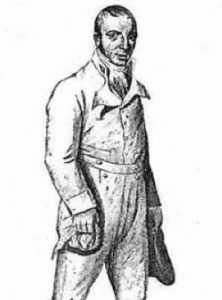
|
| Robert Barclay |
As part of the dissidence and Civil War of 17th Century England, Robert Barclay the Scotsman emerged with a point of view which was structured and reasoned in detail. What was almost unique was his reduction of it to a handful of pithy "Sound Bites". Coupled with membership in a prominent family, these abilities made him a particular friend of James, Duke of York, later King. Barclay became a Quaker at an early age.
The whole point of the Reformation was revulsion against the corrupt Catholic clergy, shielded behind some impossibly convoluted legalisms of doctrine. But for the governing establishment, any reform was going too far if it led to anarchy and chaos; combating disorder was then in many ways the central mission of the Catholic faith. The establishment did recognize that public revolt against universal micromanagement led to the scaffold for Kings who insisted on it. But in their view, the need for law and order still demanded some legitimacy, if not organized law. The Rangers, who paraded about stark naked and lived in ways resembling the hippies of the 1960s, were beyond the pale. Quakers, who professed no formal doctrine except silent meditation, might be possible just as threatening. After all, silent meditation could lead you anywhere including regicide. But the Quakers at least were quiet about it.
George Fox the founder of Quakerism had already provided one basis for containing fears of anarchy, by organizing local monthly meetings for worship within regional quarterly meetings; quarterly meetings, in turn, were within an overall framework of a yearly meeting. Occasional monthly meetings might develop a consensus for wild and antisocial behavior, indeed often did so, but would have to persuade the quarterly meetings whose members naturally outnumbered them. In extreme cases, the whole religion assembled in a yearly meeting. The innate conservatism of the meek would usually silence the extremism of the rebellious few. Very few kings would deny they could go no further toward despotism themselves, without the public behind them. The Quaker problem was to demonstrate what their consensus really was.
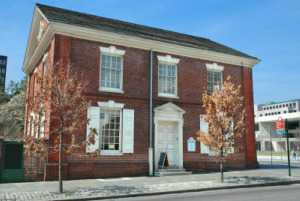
|
| Free Quaker Meeting House |
Essentially, the answer emerged that any religion which renounced a priesthood, which even renounced having a written doctrine, still needed some sort of institutional memory. If every Quaker began with a clean slate, to develop his own organized set of moral principles, then most of them would never get very far. Even if they did, they would have no time left for milking cows and weaving cloth. Single silent meditation was inefficient, particularly if you had faith that everyone was eventually going to arrive at the same convictions as the Sermon on the Mount. The founders of Quakerism took a chance, here. To assume the same outcome, you have to assume everyone starts with the same instincts and talents; even 21st Century America has private doubts about that one. Feudal England would have rejected it contemptuously. Carried to an extreme, it was a claim that everyone was as good a philosopher as Jesus of Nazareth, as good a person, as much a Son of God. That seemed like an arrogant claim. A more humble claim was that collectively, listening respectfully to one another in a gathered meeting, the whole world would over time reach the same truths as the Creator. If not, that still was as about as close as you were going to get to an oral memory, slowly building on the insights of the past.
Like all the early Quakers, Robert Barclay spent some time in jail. He did visit America in 1681, but it is doubtful if he spent any time here while he was Governor of East Jersey, from 1682 to 1688. The King insisted on his appointment, because he seemed the most reasonable man among the most reasonable sect of dissenters, and therefore the rebel he chose to deal with.
Plays and Players, Haddonfield Version
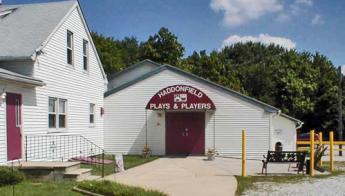
|
| Haddonfield Plays and Players |
First, an anecdote from my own lurid past. When I went there, Yale was an all-male institution with one exception, the Drama School. It's true that Shakspere had boys play the part of women in his plays, but Yale evidently felt that was going unnecessarily far, and had thus let the nose of the female camel get under the all-male tent. Meanwhile, I had discovered that a course in Advanced Chemical Engineering was carrying my amateur interest in chemistry sets a long way too far, and after two weeks, I wanted out of it. Out!
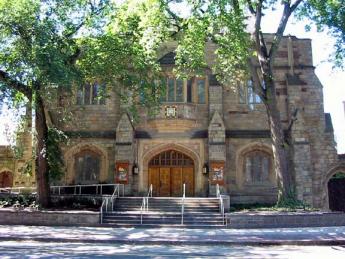
|
| Yale Drama School |
The Dean was sympathetic until I answered what I wanted to transfer into -- a course at the Drama School. Somehow, he felt that was immensely amusing, one he hadn't heard before. But, finding my grade average satisfactory, he gave a big wink and signed the paper. I didn't pretend to be offended, but I did pretend to be solemn. The experience subsequently served me very well, since that class of girls went down to Broadway at the same time I went down to New York to medical school. Almost none of my mostly all-male class of medical students knew any girls in New York, but by comparison, I knew lots. It made me very popular with both groups.
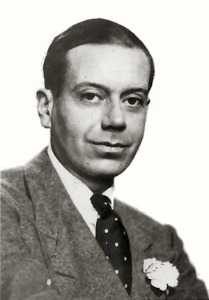
|
| Cole Porter |
It thus develops that I had the courage recently to accompany to a theater party in Haddonfield, a lady who had spent twenty-five years on the stage. The play was Cole Porter's Anything Goes, put on by the Haddonfield Plays and Players, a group celebrating its 75th year of productions. You seldom see musical comedies anymore, because the large cast and orchestra requirements are pushed by Union rules to the huge expense which a professional group cannot safely risk, and amateur groups mostly cannot enlist a large enough audience to support. In addition to the orchestra, stagehands, and administration, I counted thirty members of the cast up on the stage for the big chorus numbers. There might have been a hundred in the audience to pay the bills. This wasn't the only play of the season, there will be five I understand, so the performers have to be quick studies, which generally means considerable experience. Even with what therefore must have been a short time to rehearse, this group was good, really, really good. The lady by my side remarked these people must be semi-professionals, at least. I didn't think so, so she demanded a playbill to see. Sure enough, semi-pro.

|
| Anything Goes |
All of which may seem a round-about way to get to an observation about the current theater revival in Philadelphia. There are at least fifty new amateur theater groups scattered throughout our region, filled with "kids" having a wonderful time playing Shakspere, Albee, Shaw and whatever. At cast parties, almost none of them expresses any interest in going to Broadway or Hollywood; they are mostly software engineers or similar. Since the Philadelphia revival of interest in performing arts is so striking, it has led to ruminations about why the theater similarly flowered in Elizabethan London, at a time when there were only two theaters in Paris, by comparison. Perhaps this parallel has something to teach us about the hidden social impact of Sir Thomas Gresham and dual coinage, or Sir Francis Drake and the Armada.
But maybe, I realize for the first time, there is a flight in our direction, from New York City.
Molly Maguires of Pennsylvania (1)
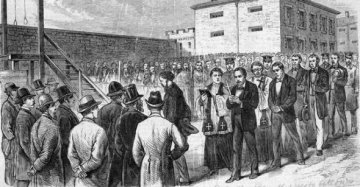
|
|
| Pottsville Hanging |
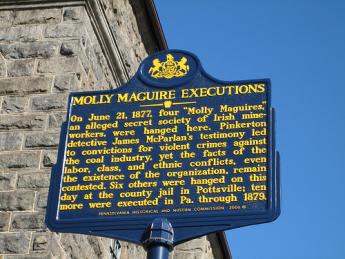
|
| Historical Marker |
However, resistance to conscription during the Civil War gave newcomer clannishness more serious consequences. This was particularly true when it inserted a surprising pro-slavery (or at least anti-emancipation) protest into the very center of the Northern Union, around Pottsville, Pennsylvania. Whatever the South was fighting for, the North was primarily fighting to preserve the economic benefits of greater trade in larger markets -- a concept loosely described as "preserving the union". A second twist to anti-Mollie repression was later added after the war was over, when the 19th Century Industrial Revolution created another untamable tribe, the Robber Barons, for whom uncooperative behavior was a tendency not to be trifled with.
Basic behavior of the Molly Maguires in action followed a simple pattern. Males dressed as females in blackface made extortion threats against members of the dominant society, protesting that their own subsequent violence was merely justice for heartlessness toward widows and orphans. Since the Mollies out of costume mingled cheerfully with those they secretly called oppressors, for actual assassinations they either called in the help of distant outsiders or drew lots to choose the assassin locally. The community would then unite to provide a vocal alibi and profess to be offended by the accusation. To increase intimidation, death threats were pinned to the door.
Molly Maguires of Pennsylvania (2)
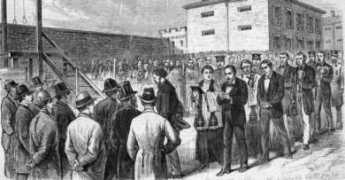
|
| the Mollie threat in the coal regions |
IT was in their interest for both the Molly Maguires and their chief enemies to exaggerate the Mollie threat in the coal regions. Mollies hoped to achieve more pay for less work by intimidating employers, the more intimidation the better. The management of the mines and railroads more shrewdly hoped to mobilize public sympathy to their side, in the newspapers, courts, and legislature, by exaggerating the undoubtedly real menace of lawless, unpatriotic behavior. There have since been great strides in the art of slanted propaganda, and it takes more finesse to mobilize modern opinion. Having watched Hitler and Stalin in action, and noticing our political parties going in the same direction, we would now regard the behavior of 1870 to be crude, and therefore less effective. But there was one very public rebuttal to what the Mollies were claiming. Although they portrayed themselves as oppressed Irish in an English dominated world, their main enemy was himself a well known Irishman.
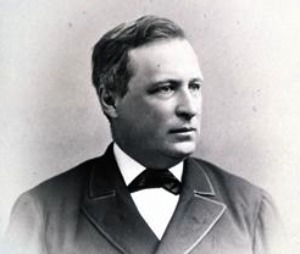
|
| Franklin Benjamin Gowen |
Franklin Benjamin Gowen, President of the Reading Railroad from 1870-1886, was both Irish and definitely larger than life. As one illustration of his extraordinary energy, he died at the age of 53 but had risen from moderate circumstances to control what would become the largest railroad in America by age 34, ultimately being forced from office by J.P. Morgan while still only 50. By some measures, in those sixteen years, he had made the Reading into the largest corporation in the world, even though he had comparatively little interest in and no training in railroading. Although born in Mt. Airy, he apprenticed himself to a lawyer in Pottsville, and at age 26 became District Attorney in the coal region during the first outbursts of Molly Maguire violence. Although he had never gone to law school, he seemed to love the courtroom and continued to work as an independent trial lawyer all during the time he was president of the railroad. One commentator remarked that to read his speeches in cold type was still enough to jeopardize one's judgment. During his later battles for corporate dominance, he twice filled the Academy of Music with stockholders, holding them spellbound for three-hour speeches. On this evidence alone, one. supposes he had a lifelong tendency to stretch facts.
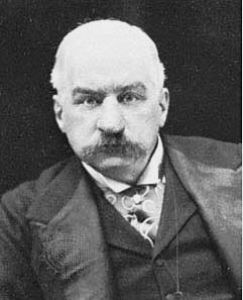
|
| J.P. Morgan |
Following the Civil War, labor relations in this rough coal region became temporarily peaceful. The prosperity of a post-war boom was probably mainly responsible, but it was also true that the labor movement was pretty well smashed by the response to patriotic feelings, slavery was no longer an issue, and huge casualties in the war had created labor shortages. However, these same factors made dominance of the coal and railroad industries more attractive. Franklin Gowen set about merging the small railroads in the coal region into an empire, and used his control of freight costs to force the coal distributors and the coal producers into subservience or forced sales. The charter of the Reading Railroad inconveniently prohibited the railroad from owing mines, but other competitors were legally permitted to do so. Using the fairness argument and probably both bribery and threats, he "persuaded" the legislature to permit a new corporation to own mines, and permitted railroads to own the new corporation. The Reading then promptly owned the mines in a two-step arrangement, couched in bewildering legal language. Gowen had no compunction about doubling freight rates and then doubling them again until he got what he wanted. Anthracite coal was the driving engine of America's Industrial Revolution, and Gowen controlled it. He was a wild and reckless spender, he thought big, and was ready to smash any opposition. His ambition set him to building a transcontinental trunk line which would compete with the Pennsylvania and New York Central lines, both under the control of J. P. Morgan or his allies. This venture failed and became the basis for the present Pennsylvania Turnpike . Ultimately, Gowen's ambitions were thwarted by his reckless spending putting him at the mercy of English bankers, allied to the Morgan interests. Underlying this was an economic fact: Henry Frick had found a way to make bituminous coal into coke, which was a cheaper fuel for steel making than anthracite. Financed by Morgan and organized by Andrew Carnegie, the steel industry moved to Pittsburgh.
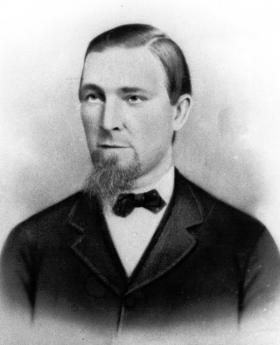
|
| John Sidney, founder WBA |
Meanwhile, what happened to the Molly Maguires? The financial panic of 1873, started by the collapse of Jay Cooke's financial company, precipitated layoffs and cost-cutting and stimulated a new rise of labor unrest. The Mollies shot some mine managers, but most of the labor organized under a fairly moderate union called the Workingmen's Benevolent Association. More moderate or not, they still threatened strikes and demanded concessions, and Gowen set about to wipe them out. As headstrong and impulsive as he was it's even possible he believed the Molly Maguire movement was stronger than it really was. But it would not have mattered. The Pinkerton agency was hired, detailed studies were prepared of the nature and leadership of the Molly movement, evidence of wrong-doing was collected, and some of the right people were hanged. Once more, the labor movement was crushed, largely by characterizing all labor unions as lengthened shadows of the Molly Maguires. And labor has never forgotten or forgiven. Even a century later, any sort of labor ruthlessness especially in Congress, is proclaimed justified since any capitalist, or even any Republican, is a covert Franklin B. Gowen. And quite possibly either English or protestant, as well, even though Gowen happened to be as Irish as any of the Mollies.
It's a great pity that seemingly the last opportunity for national adoption of the Whig philosophy of upward social mobility was exiled from American political discourse. Everybody is better off with peace, law and order; given time, our political system does offer everyone at the bottom of the heap a fair opportunity to rise to the top. After a couple of centuries, it thus ought to be obvious that class warfare hurts everyone, helps no one. But at election time, both parties feel compelled to characterize each other as either a Franklin Gowen, or a Molly Maguire.
As a footnote, Frank Gowen died from a gunshot in Washington DC in 1889. An extensive investigation was conducted, and there is almost complete certainty that no Molly Maguire was responsible. But the bullet came from a strange angle, there was no suicide note, and it remains possible that someone else, not suicide, was responsible. Gowen had plenty of other enemies.
Tour of Duty in 'Nam

|
| Vietnam War |
Col. Dan McCall talked to the Right Angle Club about wartime experiences in Vietnam recently. He really didn't want to, though he was being asked to talk about retirement planning, or asset allocation, or something else he knew something about. But the Program Chairman this year is also a Colonel, and wasn't about to be talked out of it; he wanted Vietnam, sir, and nothing else. So, for the first time in forty years, he did. He hadn't talked about it with his family or, during a career rising from Lieutenant to Colonel, with his associates in the National Guard.
Perhaps a little slow and fumbling at first, we heard of going to a place where it's 120 degrees in the shade, every day. Where he fainted from a heat stroke on the first day off the plane in Saigon, and soon found that it happened to everyone. Within thirty days, every single person had dysentery. The plane that lands troops in Saigon doesn't turn off the engines, and takes off as soon as the last man deplanes. As well it might because it attracts sniper fire as it takes off. Once there, the only form of transportation for anyone going anywhere is by helicopter; plenty of peasants with chickens in their laps are taken along, too.
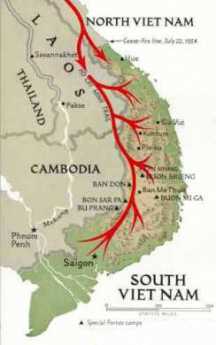
|
| Ho Chin Minh Trail |
His unit, the 82nd Airborne, was deployed to the west of Hue, the ancient capital. The country is near the border with North Vietnam, and the land is a fairly narrow strip between the ocean and the Laotian border. The Ho Chi Minh trail, where the enemy comes from, is just over the border inside Laos. Our troops never go there, but B-52 bombers go there plenty, leaving impressive craters in the ground. The unit was mortared every night, and rockets made an impressive noise as they went overhead toward Hue. The American forces almost never went out at night. Deployments in the jungle lasted 45 days, without baths or toilets; mostly, you walked into the enemy by accident on the trail. One of the prizes was a Chinese officer, carrying much better maps of the region than the American Army had. One night, sniper fire seemed to be coming from a small island in the river, and the response was to send thousands of shells back, filled with 3-inch steel darts. The next morning, every tree on the island was normal enough on the Laotian side, but nearly covered with steel darts on the Vietnam side. Although the command from headquarters was to report a body count, there were no bodies to count. At the end of one 45-day deployment, there had been no food or water for three days. When the "ships" came to take them out, there was a celebration with rice wine. You make rice wine by soaking stalks of rice in water, letting it ferment. The water is pretty murky, to begin with, and gets worse as it ferments; you have a good time, anyway, with the villagers bringing in a pig to roast.

|
| 82nd Airbourne Patch |
The CIA had its own private army, Rangers and Special Forces. There were local mercenaries, mostly from Thailand. The 82nd Airborne - The All American Division - had a tradition of parachute jumping in every military engagement since World War II, but in the jungle there was no place for, or point in, jumping. But at the end of their deployment, they jumped once, anyway. When you got home, the movies were kind of a joke, but Apocalypse Now came close to giving the right feeling. Although of course people asked what it was like, you didn't talk about it. No one did.
One member of the Right Angle Club who had spent a year there, muttered an answer. "And people didn't really want to hear about it, either."
Country Auction Modernized
Only a decade ago, the Quakertown exit of the Pennsylvania Turnpike made possible a quick trip from the city to the country, letting you off in the cornfields between Sumneytown and Lansdale. Today, the rush hour traffic is as bad as anywhere else, even on the four-lane express highway known as Forty Foot Road. A comfortable two-lane highway would be about forty feet wide, so presumably, the name denotes what was once a modern miracle of a two-lane highway, in this case until quite recently. It's all built up for miles, but almost all the commercial buildings are new. Exurban sprawl has positively lurched across the landscape, making prosperous people rich, and poor people prosperous. It won't be long before the housing subdivisions demand traffic signals to protect the school children, speed limits to reduce the collisions by teenagers, and other things destined to bring high-speed travel to a crawl, all day long. When that happens, it won't be called farm country anymore.

|
| Alderfer Auction Company |
On Fairground Road, where occasionally corn is still growing, a number of large new commercial enterprises have located, among them a moving and storage company with ten or so truck loading platforms in the back. Behind that is another large new building, also with a parking lot for fifty or so cars, the auction house. Different categories come up for auction on different days, so used furniture, for example, comes up every few weeks and has to be stored as things accumulate for the big day. With a moment's thought, you can easily see why the auction is affiliated with or owned by a moving and storage company. As you go through the entrance, you are invited to sign up and identify how you plan to pay, just in case you buy something; the product of this registration is a card with a number in big colored letters. That's your number, your payment arrangement, and soon you will find no one cares anything about you except that number. The auction I was interested in was for used books, one of three or four auctions conducted in different rooms.
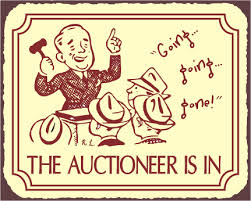
|
| Auctioneer |
Nearly a hundred people had numbers for used books, maybe a similar number for antique furniture and paintings. Obviously, one other purpose of the registration process is to create a mailing list of customers interested in various objects, possibly linked to a program which sends out flyers and announcements. Country auctions have always been a source of local entertainment, so non-buying spectators are able to come and watch if they wish. There seemed to be few if any casual sight-seers; just about everybody is a buyer or a potential buyer. Players, as they say.
Most of the customers probably set their alarm clocks for 5 AM or earlier; the auction is centrally located, but most everybody comes from a considerable distance. At 9 AM, very promptly, the auction began, and from his manner, you could tell the auctioneer was anxious to get started. The object for sale had been on display for a day, but most people arrived around 7 AM to examine the goods, which are frequently sold in lots, meaning a box full of thirty or forty books more or less on the same topic. At the stroke of nine, the auctioneer chanting began, "Do I have ten dollars, yeh, ten, ten, ten, five, five, ten, fifteen, twenty, twenty, sold for fifteen. Your number, sir?" Two assistants took down the customer number, and the lot number, and the price; one of the two recorded the transaction in a computer, the other on a list by hand. One gathers the man without a computer was on the look-out for shills, people trying to bid up to the price without getting stuck for a purchase. The auctioneer repeatedly assured the audience that no one but a real bidder was allowed to bid, you owned it, and no excuses about being confused. When he reached he hundredth sale, he stopped for a drink of water, and proudly noted the first hundred sales took thirty-seven minutes. It required four other assistants to fish out the lots next in line, holding them up for confirmation only, since inspecting them at as the distance was out of the question. After each sale, the assistant dumped the prize in the new owner's lap.

|
| Auction Paddle |
And yet entitled to wonder a little. The ordinary run of books thirty or forty years old will sell for between ten and twenty dollars. Books about golf, just about any old book about golf, "go" for about forty dollars. Children's books are about sixty dollars. And, to my great surprise, boxes or albums of old photographs go for over a hundred dollars. A lady next to me excitedly brought an album of old photos back to her seat and thumbed through them. "Are you a dealer?" Yes. "Who buys this stuff?" I don't know, they come to my store and just buy it. Like the Auctioneer, she had a feeling for what the retail price would be, made a calculation, and knew what she could afford to pay wholesale. What the stuff actually represented, why people wanted it, what was a good one and what was a bad one--these people in the trade had very little idea. But they knew very precisely what a fair price, and gradually lowers it until it sells. Fun Lots of fun. When a familiar insider makes a mistake and pays too much, the others laugh heartily at him. Why this funny system works has long been a mystery, but everyone except a socialist readily acknowledges it does work. At least it works better than any known substitute.
Although the ritual of the country auction has been essentially unchanged for the centuries, it is just another transaction system. In the past fifty years, the world economy has been transformed by computerized efficiencies in transaction systems, with vast prosperity resulting from small saving endlessly repeated. Banking and Wall Street have concentrated most of the standardized transaction, in perfectly astounding volume; lots and lots of people have become immensely rich for producing small efficiencies in high volume. Those of us who have not become immensely rich can easily identify trivial innovations which resulted in wealth, and we easily sense the unfairness of old photos worth more than books of poetry. After all, the country auction is still grossly inefficient; the seller pays the auction company 20% of the price, and the buyer pays another 10%. There's 3% for the credit card company and &% for the sales tax. Forty percent of this transaction is going to the middle man, over and over and over again. The goal is to reduce transaction costs to the level of Wall Street, considerably less than one percent, Which still lots of yachts for middlemen.
As you walk out of the country auction, it doesn't take a mathematical genius to multiply thirty percent times the number of transactions, times a guess at the average sales price. No wonder these auction people are so cheerful, so much in love with their work. But two other parties are cheerful, too. That is, the buyer and the willing seller.
Time To Care
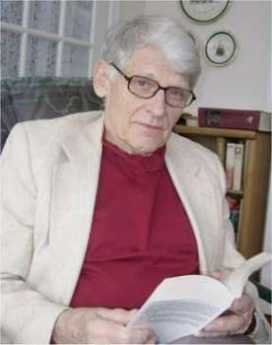
|
| Dr. Norman Makous |
It sometimes seems as though Medicare has been a standard part of the scene for so long it now needs major reform, but when a doctor has practiced Medicine for sixty years he has seen a lot of contrasts between the old way and the new way, not all of them favorable to the new -- which we are now tired of, and trying to repair. That's particularly true if the doctor practiced at America's first and oldest hospital, because it sustained many traditions from two centuries before, and was among the last to yield to the imperatives of newcomers for the last forty years, their hands grasping for the purse strings. Dr. Norman Makous must either have a remarkable memory or a thick, detailed diary. He tells three hundred pages of fast-reading anecdotes about sixty years of his own medical practice, before summing up in fifty pages of reflection. One by one, he describes the innovations in his field of cardiology and how they affected him and his patients. Thiomerin, one of the first of many easy ways to pump out excess body fluid accumulation, transformed the treatment of congestive heart failure. Synthetic digitalis claimed to but probably did not much improve things over dried digitalis leaves; it certainly raised the cost. Cardiac catheterization, electro-shock resuscitation, ultra sound diagnostics, MRI and CAT scans, cardiac surgery using the heart-lung machine, and finally cardiac transplants -- all started out as headline-news spectaculars, evolved into cutting-edge advances, and then settled down into the Standard of Care that you obtained a plaintiff lawyer to sue about. All in one medical lifetime, supposedly prepared for by one Medical School course, followed by one residency apprenticeship, the specialty of Cardiology was completely transformed at least six times.
Meanwhile, the leadership of the medical profession was tenaciously resisted by those who supposedly followed its direction. Hospital administration.
Blood and Honor: The Philadelphia Mafia, Lately

|
| Blood and Honor |
After two decades of seemingly endless dominance of Philadelphia headlines by the Mafia, the underworld has been absent from the news in the first decade of the 21st century. That's very welcome to everybody including the Mafia itself, and there are three main popular explanations. First, after 27 informal mob executions and four dozen convictions with lengthy prison terms, perhaps the mob has been eradicated. Or, possibly the immigrant population has been assimilated, now looking to quieter occupations for a source of income. And finally, maybe the mob has just decided to lie low while tax-hungry politicians enact enabling legislation for legal gambling casinos for the gullible public since the main argument against casinos is they attract crime. The histories of Atlantic City and Las Vegas certainly suggest organized crime has not yet abandoned casinos.
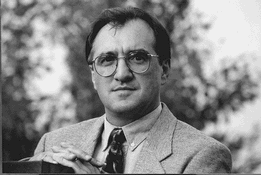
|
| George Anastasia |
George Anastasia's book Blood and Honor relates twenty years following the assassination of Angelo Bruno in 1980, averaging a murder or a prison sentence every three pages and leaving the reader with the impression of constant warfare in South Philadelphia. The book is pretty hair-raising, but after all, there is not much to talk about in a crime family except crime. To run through a brief overview of 27 assassinations and 36 major convictions is to leave a violent image of South Philadelphia. However, to say there were two to four assassinations per year plus three or four criminal trials softens that impact. The violence is appalling because it went on for so long. To note that Philadelphia like all major American cities its size, averages about three hundred murders a year puts mob violence in perspective. To be serious about eliminating homicide, you ought first eliminate "domestic violence". After that, you should go after street gangs and their focus on distributing recreational drugs.
Whether it was a struggle for control of Atlantic City casinos, a policy dispute over whether to get involved in illegal drugs, or simply a matter of disputed succession to control of the mob, is not now clear to the law-abiding community. What seems accepted interpretation is that matters heated up a lot after Angelo Bruno was assassinated. Somebody wanted his job, and that somebody wanted to run the organization differently. it's a situation quite familiar to CEOs of corporations, Kings and Emperors, and even editors of newspapers. What distinguishes organized crime families is the violence of their methods for dealing with succession issues. What emerges in this particular little world is that Nicodemo Scarfo established himself as the new Don of the Philadelphia Mafia by 1988, and the bitterness of this succession struggle induced six or ten insider members of the mob to become police informants to get revenge. The murders and convictions which make up this twenty-year period of time can be roughly divided into the initial struggle for control, the revenge of the losers, and the subsequent assassination of traitors. Even after inactivating nearly a hundred insiders, at least twice that number of "made" members and associates were unaffected directly. It's anyone's guess whether a defeat of this magnitude is enough to eliminate the organization, or whether it merely imposed a truce, during which the mob will heal its wounds and then make a comeback.
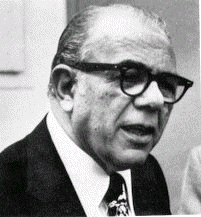
|
| Angelo Bruno |
An underground organization, whether in Philadelphia or Afghanistan, cannot hide effectively without the cooperation of honest citizens in the neighborhood. For many years, toleration was secured by keeping the streets safe from marauders belonging to other immigrant groups, and by collecting whatever debts the courts would not honor. The gray area involved such illegal activities as bootlegging in which the rest of the community participated without much sense of guilt. The Mafia was effectively a private police force for unsanctioned activity, operating within a neighborhood not fully in accord with prevailing attitudes. It seems to have been the genius of Angelo Bruno to realize that loan-sharking was the only permanently profitable component of this formula, and that loan sharking largely depended on gambling to create desperate debtors. Just about every other criminal activity attracted too much police attention to survive because the dominant society approved of suppression. Bruno's assassination seems to have been triggered by rebels who disagreed with his analysis. Perhaps they were right and the mob had been missing a big profit opportunity in the drug trade. Perhaps they were wrong and turned the legitimate community against them to the point where extermination was provoked.
Keep tuned. The outcome of this little debate could emerge suddenly and spectacularly. Or more decades of peace will pass silently, in which case Angelo will eventually be deemed correct.
REFERENCES
| Blood and Honor: Inside the Scarfo Mob, the Mafia's Most Violent Family George Anastasia ISBN-13: 978-0940159860 | Amazon |
| Before Bruno: The History of the Philadelphia Mafia Book 2 C. A. Morello ISBN: 978-0967733425 | Amazon |
| The Last Gangster George Anastasia ISBN-13: 978-0060544232 | Amazon |
| The Last Mouthpiece: The Man Who Dared to Defend the MobRobert F. Simone ISBN-13: 978-09401596932 | Amazon |
Tales of the Troop
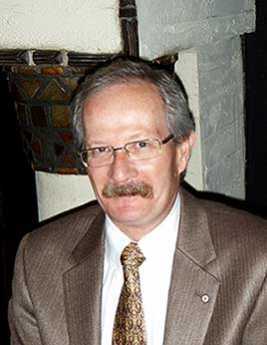 |
| Dennis Boylan |
Dennis Boylan, the former commander of the First Troop, Philadelphia City Cavalry, has been poking around in the archives up at the Armory, and was invited to tell the Right Angle Club about it. In all its history, there have only been 2500 members of the troop, but they have been a colorful lot, leaving lots of history in bits and pieces. The troop boasts that it has seen active duty in every armed conflict of America, and means to continue to fight as a unit of the Pennsylvania National Guard. However, we have lately had so many actions, the troop has had to split off units to be able to go to the Sinai Peninsula, Bosnia, Kosovo, Iraq, Afghanistan and whatever is going to come next. An eighteen month tour of active duty takes a lot out of a citizen soldier's life, but no one is complaining, and there is no fall-off in volunteers.
Although most troopers are polite and taciturn, it is probably hard to remain unaffected by association with people like A.J. Drexel Biddle, a pioneer of the bayonet and hand-to-hand fighting, much sought after for training other units of the military. Or George C.Thomas, who was a golf course architect, but also a seaplane expert, responsible for the seaplane ramps next to the Corinthian Yacht Club along Delaware. Or Rodman Wannamaker, responsible for aeronautic development, also down in the marshes where the Schuylkill joins Delaware. Robert Glendinning, who was notable for other adventures, was also an early pioneer in airplanes. As a matter of fact, Henry Watt had himself flown from Society Hill to Wall Street in a seaplane, when he was President of the New York Stock Exchange.
It's hard to believe, but a former trooper named Eadweard Muybridge distinguished himself in the art world, as a result of a bet with Leland Stopford, that a horse at a gallop reaches a point where all four feet are simultaneously off the ground. The consequence was a famous set of rapid-sequence photographs which are quite famous at the Pennsylvania Academy of Fine Arts. There are elephants, horses, people in various states of undress which remain as interesting artworks as well as scientific evidence that horses feet do indeed leave the ground. But in case anyone believes that Muybridge was some sort of sissy from the art world, there is the story that he caught his wife in an affair and shot the other man dead. As one might expect, the jury found him not guilty, on the grounds of justifiable homicide. With a name like Eadwaerd, it's probably necessary to demonstrate your manliness.
Robert Glendinning, class of 1888 at Penn, became Governor of the New York Stock Exchange, founded Chestnut Hill Hospital and the Philadelphia School for the Deaf. And Thomas Leiper makes a pretty good claim for starting the first railroad in America. It was only 2 miles long, in Swarthmore, and built because he was not permitted to extend his canal for the purpose of transporting stone from upstate quarries. The railroad developed into the Pennsylvania Railroad; Leiper's house, "Strathaven" is still an important Delaware County landmark.
 |
| Tank in Philadelphia |
And then, there's the story of the salute to the QE2. When the liner made a tour up the Delaware, a search was made for cannons to provide a proper salute, and the call came to the Troop. Well, they had a tank, and they could fit a simulator on the tank's gun. So, the tank rumbled down Broad street to do its duty. South Philadelphia responded in character, too. Instead of stopping to admire the novelty of a moving tank, the drivers just honked their horns and drove around it.
Children's Scholarship Fund (1)

|
| Children's Scholarship Fund of Philadelphia |
Ida Lipman recently visited the Right Angle Club, to acquaint members with the nature of the club's new charity, the Children's Scholarship Fund of Philadelphia. This fund could be seen as a response to the rising realization that the nation's leading social problem is fast becoming one of upgrading the educational strength of the current generation of poor people, who face hopeless odds competing for unskilled jobs against a vastly larger population of foreign poor people in a globalized economy. Our poor people can never hope to rise out of poverty by taking jobs that foreign competitors are willing to perform at even lower wages. And while everyone hopes our poor people can take on better-paying jobs, it requires better education to do it. Ultimately, the question for America is whether to place the emphasis on better teaching or better learning, and the two are not quite the same thing.
The educational problem of motivating children to higher attainments than their parents is a difficult social task in both urban and rural districts, but self-defeating peer pressures to hold down their classmates somehow seems a stronger force in the urban settings. In both environments, of course, the educational attainments of both the parents and the teachers have been aimed at a lower level than the task requires. It somehow proves unrealistic to shift expectations as rapidly as we need to, and part of the present problem is that the education industry has become demoralized by repeated defeats. Consequently, we are certainly lucky that philanthropic donors have been willing to support some radical experiments in the whole educational experience, including students, teachers and parents.
Thus, the Children's Scholarship Fund has been willing to dispense several thousand scholarships to private schools in the Philadelphia region, purely by lottery, without regard to the traditional guidepost of student merit. This policy would probably be disruptive if scholarships were universally available, undermining the spirit of meritocracy which is so central to our educational system. But since we are only partially addressing the failures of a system of universal free public education, a stronger argument can be made that changing the culture occasionally requires that we set aside the traditional incentive of rewarding the behavior we seek. The hope is that a demonstration project with such a radical change will set other motives into motion. Resources are limited; it is recognized that among the ninety percent of students who fail to receive the scholarship by lottery, there will be many who are more talented than the few who are lucky enough to get an award. The point is easily overlooked however that scholarship students must apply for this lottery, and be supported by partial financial assistance from their parents. These parents must sincerely want to raise the educational goals of their children, and convey that motivation to the kids in whatever way they are able to convey it. The pressure of less lucky playmates and neighbors to hold them back, it is hoped, will be lessened by the simple recognition that a lottery gives everyone an equal chance, provided only that they step forward and pledge themselves to try to succeed.

|
| John Walton of the Wal-Mart family |
It's a bold and imaginative approach, a highly counter-intuitive one. John Walton of the Wal-Mart family matches the contributions of other donors at fifty cents on the dollar through his family foundations, which was jointly founded with Ted Forstmann of the Wall Street firm. Many longitudinal studies will eventually show how much this bold and charitable venture really helps the students and the community; since it is private money in use, criticism should be held back until the results begin to be apparent. To whatever degree and in whatever way the scholarship fund is a success, the public must be willing to praise both its spirit of generosity, and its willingness to take a chance. Let's all mark this down in our notebooks, to see how it all turns out in ten or so years.
Christmas Reflections
My father in law, a prominent obstetrician in Binghamton, New York, regularly took his family to New York City sometime between Thanksgiving and Christmas. The three-day junket was described as a visit to do Christmas shopping. Another relative made similar trips from home in Tyler, Texas. Several of my patients made such visits to Philadelphia from their homes in West Virginia, stopping by to make a medical visit to me during the same trip. From the seasonal crowds in Penn Station and in the shops on Chestnut Street, it was clear that an annual visit to the big city was a common custom in the upper crust of small to medium-sized cities, for whom the more expensive shops of the bigger city provided big-ticket items bought infrequently, and the distinctive luxuries which made them stand out from the socially less-enlightened back home.
These shopping visits were not confined to purchasing, although that was the main focus. It was a time to go to the theater, orchestra and opera, maybe an occasional ballet and art exhibit. The choice of a large city might be related to returning to the University, or another period of professional training for a drop-in visit because these associations made it possible to observe the latest trends and innovations, a useful issue in the smaller towns. The ladies could observe the trends in fashions, and everyone would have a chance to dress up in the better hotels and restaurants. This recirculation between the small towns and the big one at the hub unified the region, establishing hierarchy rather widely. And it hardened traditions in the big city, since islanders tend to return to the same hotel, restaurants and social gathering spots even more than the local residents do; there isn't time in a brief visit to shop for new venues, unless the trip itself reveals that times and places have somehow changed in an important way.
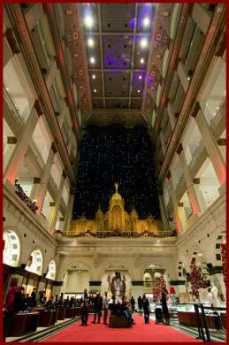 |
| Wannamakers Pipe Organ |
That's all changed, today. The pipe organ at Wannamakers, the cluster of department stores around Eighth and Market, the theater district, Caldwell's and Bailey Banks and Biddle upscale jewelers, the fancy women's clothing shops on Walnut and Chestnut Streets, and the bespoke men's tailor shops -- have disappeared in a slew of retail despond. The excited crowds of upscale shoppers have dwindled, at least in the center city shopping area. Students of sociology point to the decline of the department store as a central commotion in the center of this phenomenon, blaming that in turn on the spread of national brand names by television and more electronic forms of advertising. The department store did your comparison shopping for you, putting its brand name on the product and placing its reputation behind the choice. If Wannamaker could determine that a Japanese radio was of high quality, it became Wanamaker's radio. Today, Samsung and Sony do their own advertising, sell their products through outlets in the suburban malls. Philadelphia residents enjoy as much retail choice and pricing as ever, they just shop in the malls located along the Interstate circumferential highway, just outside what used to be the outermost suburbs. So the volume of retail shopping among Philadelphians probably hasn't changed a great deal; it has merely shifted to the malls where there is parking for your car to transport goods which the department stores used to deliver. It is the annual visits from the subordinate small cities at moderate distance that has disappeared. Small cities now have their own shopping malls, carrying national brand name merchandise. Losing this source of business, the associated entertainment industry has declined to a point below sustainability for most of them -- in the center city hub. Along with the disappearance of this regional recirculation, small cities have lost their sense of affiliation with a bigger one. The small-town professional class which was the biggest participant in this annual migration is professionally more isolated but so are their clients. The upper crust of the small town now must constrain its horizon to the smaller town professionals, with their lesser claim to distinction. For a while, the disparity can be overcome by specialization, but ultimately the distinction of the big-city specialist rests on assembling a richer experience from wider drawing power. In Medicine at least, the insistence of Medicare on paying the same fee for the same service lessens the economic incentive for self-repair of the system.
 |
| Wannamaker's Christmas Light Show |
Meanwhile, nature of Christmas itself is becoming standardized. Fewer people make their own Christmas presents, whether through knitting or baking. If the process of commercial gifts goes the full distance, eventually the joy of searching for exactly the right gift will seem more like paying your taxes. These things already cost too much, are worth too little, and neither the process of giving a gift nor the process of receiving a welcome gift will retain much joy. Or significance. What was until recently a Christian religious celebration has become diversified into a generic "Happy Holiday", presumably in order to avoid offense to other religious groups who themselves likely persist in their old traditions of ritual greeting. The assault on Christmas is however not primarily cultural, but commercial. The silent ostentation of elaborate outdoor lighting and the secular versions of Christmas carols endlessly replayed over loudspeakers in stores, probably have a more destructive effect on the community winter solstice ceremony than any competition for religious adherence.
The coming next step in the modification of the Christmas season is dimly visible in the assault of pocket telephones on the suburban shopping mall. After enjoying only a few years of victory over the center city department store, malls must now confront shoppers with portable telephones containing a camera and GPS geographical locator. Seeing something he likes, the shopper of the future can photograph its bar code in the shop display, and be immediately told of all the neighboring stores which sell the same product for a lower price. Electronics are thus about to turn Christmas shopping into an electronic auction, no doubt making it eventually easier to do the shopping from home.
What Christmastime means to me is a recollection of what it once was like at the nation's oldest hospital, and not so terribly long ago, at that. Before 1965, the Pennsylvania hospital had been staffed for centuries with unpaid student nurses, working under the direction of unpaid doctors in training, supervised by volunteer attending physicians. Of the five hundred beds, only forty were filled with paying patients and the rest were housed in long communal halls. On Christmas morning at 7 AM, the drowsy patients were astonished to be awakened by a procession of very pretty student nurses, led by Miss McClellan the grim-looking Directress of nursing, and followed by a handful of internet and residents, all singing Christmas carols and carrying lighted candles in the dark. Miss McClellan herself was never heard to utter a note, but the student nurses had been trained in four-part harmony, and the interne doctors were enthusiastic followers. The faces of the poor old indigents in the beds were filled with pure delight as we traipsed past, chanting of the travels of Orient kings, the pregnancy of virgins, and other miracles of the occasion.
Puritan Boston & Quaker Philadelphia
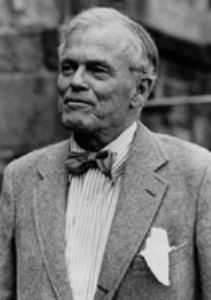
|
| Professor Digby Baltzell |
Digby Baltzell had something of the defiant rebel in him. He surely didn't imagine his employer, the University of Pennsylvania, was pleased to have him a document that Harvard is a better college than Penn. Nor were fellow members of the Philadelphia Club pleased to confront scholarship that his city's gentry was too devoted to money-making to accept the ardors of public leadership. Nor would his relatives in the Society of Friends enjoy accusations their religion impaired the pursuit of excellence in all fields of the city's endeavor. Later articles will here take up some unfair assaults, and defend Quaker simplicity and Peace Testimony. Some blame must, of course, be shared, some mitigating circumstances acknowledged. And let it be said in Baltzell's support that it truly is remarkable how many cultural features do get passed down for ten or more generations. Or even longer; look at the persistence of ancient Chinese, Indian, Esquimo, Viking, Roman, Christian and other cultural heritage. The Quakers got to Pennsylvania early, they are now vastly outnumbered. Many Quaker ideas continue to influence present inhabitants, some ideas probably hold us back. Substitute "Puritans of Boston" for "Quakers" in the foregoing sentence, and conclude by saying "some of those ideas probably give Bostonians an edge". Those two rather unexceptional declarations summarize a controversial book, although they do not completely capture its overall censorious flavoring.
To a certain extent, Digby is his own worst enemy. While alive, he was one of the world's most charming raconteurs, a walking encyclopedia of local lore. Like a good docent in a museum, he could walk into a room hung with portraits, and charm any audience for an hour; presumably, his sociology lectures at Penn held the same magnetism for his classes. In a book for popular readers, however, it is overdone to go on about the same point for six hundred pages. He needed a better editor, or perhaps he needed to permit a better editor to make him restrain his tendency to multiply illustrations beyond the point where the reader loses the thread of the argument. Not all readers will agree with his argument; they can only be legitimately defeated by focused argument. That's perhaps unrequired of college professors holding the power of grade-point averages over nineteen-year-olds, but it is expected of conversation with other adults. If an editor wants to sell books to a general bookstore audience, he should induce authors to overcome the take-it-or-leave-it habit.
As a general reaction to this book, Baltzell seems to think Quakers do not want to be rich and that consequently, latecomers into the region tend to share this feeling. My own view is that Quakers see they can have almost all of the value of being moderately rich -- by disdaining the trivial luxuries of the middle classes. They do not exactly renounce fame and power but are unwilling to gamble much or sacrifice much, in order to enjoy the comparatively small exhilaration of being very rich. They are now no longer surrounded by junior versions of themselves, but by bank-robbing Willie Suttons who readily attack Quakers for being where the money is, and appear to be pushovers at that. When Quakers then promptly demonstrate they are not pushovers at all, they are treated like outsiders in their own town. In many ways and at most times, the populist crowd gives up trying to understand Quakers and decides they must somehow always behave in ways that others would not. It's hard to achieve much deference in such an environment.
Many of Baltzell's important insights grew out of his position as a Philadelphia and academic insider; he personally knew many of the people he described. However, such an infiltrator runs the constant risk of being viewed as a tattle-tale, so a cover is required. Batzell's technique involved frequent use of quotations from others, not so much to prove a point as to rephrase it. This is another feature of the book which might have benefited from a hard-nosed editor. However this is how he wanted it, and in a post-publication revision, here is a condensation of how he summarizes his argument:
When studied with any degree of thoroughness, the economic problem will be found to run into the political problem, the political problem, in turn, run into the philosophical problem, and the philosophical problem itself to be almost indissolubly bound up at last with the religious problem.
--Irving Babbitt
In the South, ....left-wing Quakers came to the fore in the pine barrens of North Carolina-- to this day, North Carolinians speak of their state as "a valley of humilities between two mountains of conceit."
--E. Digby Baltzell
The world is only beginning to see that the wealth of a nation consists more than anything else in the number of superior men it harbors.
-- William James
I believe that ambitious men in democracies are less engrossed than any other with the interests and judgments of posterity; the present moment alone engages and absorbs them...and they are much more for success than for fame. What appears to me most to be dreaded, that in the midst of the small, incessant demands of private life, ambition should lose its vigor and its greatness.
-- Alexis de Tocqueville
Our rulers today consist of a random collection of successful men and their wives. ....They have been educated to achieve success, but few of them have been educated to exercise power. Nor do they count with any confidence upon retaining their power, nor of handing it on to their sons. They live therefore from day to day, they govern by ear. Their impromptu statements of policy may be obeyed, but nobody seriously regards them as having authority.
--Walter Lippmann
Equalitarians holding...extreme views have tended to believe that men of great leadership capacities, great energies or greatly superior aptitudes are more trouble than they are worth.
--John W. Gardiner
In the Jacksonian era in this country, equalitarianism reached such heights that trained personnel in the public service were considered unnecessary...Thus, in the West, even licensing of physicians was lax, because not to be lax was apt to be thought undemocratic.
--Merle Curti
In the late eighteenth century we produced out of a small population a truly extraordinary group of leaders-- Washington, Adams, Jefferson, Franklin, Madison, Monroe, and others. Why is it so difficult today, out of a vastly greater population, to produce men of that character?
--John W. Gardiner
It is nevertheless certain that the high quality of Virginia's political leadership in the years when the United States was being established was due in large measure to those very things which are now detested. Washington and Jefferson, Madison and Monroe, Mason, Marshall, and Peyton Randolph, were products of the system which sought out and raised to high office men of superior family and social status, of good education, or personal force, of experience in management: they were placed in power by a semi-aristocratic political system.
--Charles S. Syndor
Another clue to the relationship between hierarchy and leadership is suggested by Gardner's list of the Founding Fathers. All of these men were reared in Massachusetts or Virginia; none was reared in the colony of Pennsylvania, though Philadelphia was the largest city in the new nation and contained perhaps the wealthiest, most successful, gayest, and most brilliant elite in the land. Not only had Pennsylvanians little to do with taking the lead in our nation's founding, but the state has produced very few distinguished Americans throughout our history...I shall concentrate here on the commercial cities of Boston and Philadelphia, whose great differences in leadership and authority were far more likely to reflect differences in ideas and values.
--E. Digby Baltzell
Whatever else ...America came to be, it was also an experiment in constructive Protestantism.
--H. Richard Niehbur
All this is only to say that man is a product of his history, where nothing is entirely lost and little is entirely new.
--E. Digby Baltzell
For the wine of New England is ...more like the mother-wine in those great casks of port and sherry that one sees in the bodegas of Portugal and Spain, from which a certain amount is drawn off each year, and replaced by an equal volume of the new. Thus the change is gradual, and the mother wine of 1656 still gives bouquet and flavor to what is drawn in 1956.
--S.E. Morison
New Englanders, ambitious beyond reason to excell.
--Henry Adams
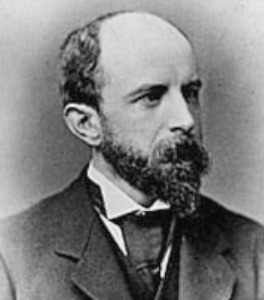
Henry Adams Pennsylvania became the ideal state, easy, tolerant and contented. If its soil bred little genius, it bred less treason. ... To politics, the Pennsylvanians did not take kindly. Perhaps their democracy was so deep an instinct that they knew not what do to with political power when they gained it; as though political power was aristocratic in its nature, and democratic power a contradiction in terms.
--Henry Adams
The reproach I address to the principles of equality is that it leads men to a kind of virtuous materialism, which would not corrupt, but would enervate the soul, and noiselessly unbend its springs of action.
--Alexis de Tocqueville
In our egalitarian age of mistrust, trustworthy men of great ability are increasingly refusing to run for public office or to serve in positions of authority and leadership in our society...In the rest of this book, I shall try to show how and why the Quaker city of Philadelphia, in contrast to Puritan Boston, has suffered from that virus of virtuous materialism for almost three centuries and how its best men, on the whole, have seldom sought public office or positions of societal authority and leadership outside business.
--E. Digby Baltzell
REFERENCES
| Puritan Boston and Quaker Philadelphia: E. Digby Baltzell. ISBN-13: 978-1560008309 | Amazon |
The Republican Court
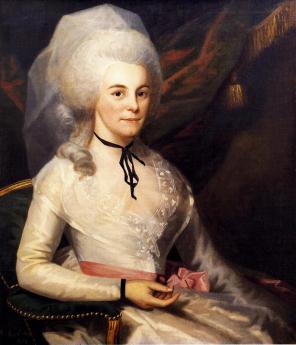
|
| Elizabeth Schuyler Hamilton |
A popular legend of our founding fathers depicts a sudden 18th Century flowering of talent, even genius, establishing a new nation. More recently, historians have searched for personal material about the individual founders, humanizing them with warts, so to speak. A question nevertheless arises how a nation with the present population of Detroit could produce such outstanding leadership in what was then a scattered colonial frontier region. Men, that is. In our legends, the founders were all men.
Long before the feminist movement gathered momentum, historians like Rufus Wilmot Griswold and Abigail Adams Smith had chronicled the impact of the high society of George Washington's term of office as president, which was in part a conscious effort by Washington to show the new republic to the world, cutting just as fine a figure as the nations of old Europe. Martha Washington, soon called Lady Washington, was an uncomfortable central figure in the new social scene, and her dismay at being the President's wife, her anxiousness to retire from prominence as soon as his term was over, suggest the idea for a Republican Court probably did not start with her. Elizabeth Schuyler Hamilton, Alexander Hamilton's wife, might seem more likely but the real originator is not known. For present purposes, a plausible theory is that soldier George Washington and bachelor James Madison had the concept but couldn't pull it off; and then some determined ladies of the court soon showed them all, what was what.
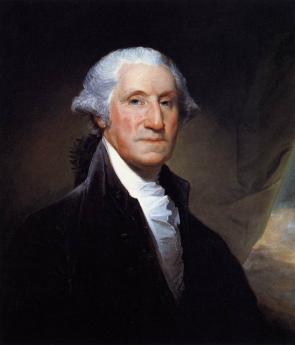
|
| George Washington |
George Washington began the process by instituting formal receptions for visiting males and Martha cooperated by holding Friday evening receptions, at which she was introduced to the wives of important political figures. The regular weekly events of the Presidency soon consisted of a reception by George Washington for new foreign ambassadors and other important foreign visitors, with a formal state dinner with a politically balanced invitation list on Thursday evening, and Lady Washington's reception on Friday with primarily a social purpose, leaning somewhat in the direction of letting the wives of important politicians shine in the social limelight. While the receptions were usually conducted with scripted formality, some notable exceptions were thought worthy of comment. Over twenty years earlier, Washington at Valley Forge had danced for three hours with Cathy Greene, the wife of Nathaniel Greene. When the widow Greene passed through one of the much later presidential levees, Washington suddenly bent over and kissed her, as "an impromptu act of spontaneity." The effect of the levees was to unite the elites of wealth and power, coming to Philadelphia from all thirteen colonies, now risen to statehood. Plantation owners from the South, ship owners, and merchants from the North met the daughters of socially prominent families and quite frequently married them. A courteous and civilized environment unified the new nation at its pinnacle by having local leaders mixing with other local leaders, becoming national leaders in the process. A politician in this new nation could rise to being someone of consequence socially. To be skillful in the social graces, particularly if there was wealth associated, was to advance in politics; to be boorish or loutish was to drop down somewhat in the scale of political influence, slowly but surely losing power to those who did have such graces. Put a backwoods politician into new formal clothes, force him to behave in an unaccustomed way in the midst of those more skillful at it, enlist the fearsome pressure of his ambitious wife to shine in the spotlight; and the fear of looking foolish soon enough pushes him toward conformity.
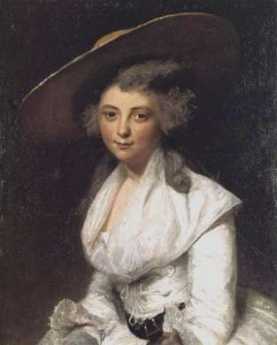
|
| Anne Willing Bingham |
After the first year, then the developing Republican Court. Martha Washington, of course, had her own mansion at Mount Vernon, but Anne Bingham had one within easy walking distance of Independence Hall. The Wife of the richest man in America, Anne Willing Bingham was the daughter of Thomas Willing the head of the most prominent merchant family in Philadelphia. Anne's husband William Bingham had achieved richest-man status at the age of 28 (by running a large privateer fleet in the Caribbean)and was not only able to build a splendid mansion patterned after that of a London aristocrat at 3rd an Spruce Streets,but had taken his young and beautiful wife on an extensive tour of the royal courts of Europe which lasted several years. It is said that Robert Morris later contributed to his own bankruptcy by attempting to match the Bingham mansion with a Morris mansion at 7th and Market, which had to be torn down for lack of money before it was completed. Since most of the wealthy hostesses attempting to achieve prominence in the newly forming Court had never been to Europe, there was no choice but to accept the judgment of Mrs. Bingham in such matters, especially since she had the biggest showplace in town. While the truth of a story about her is uncertain, it accurately illustrates the flavor of the social atmosphere that it could be said that the Dauphin, heir to the throne of France, once went to her father to request her sister's hand in marriage. The young prince was then living in exile at 4th and Locust, in temporarily impoverished circumstances. Old Tom Willing, as the story goes, said No. "If you do not become the King of France, you will be no match for her. And if you do become the King, she will be no match for you."
It does seem to be true almost every prominent lady in the Republican Court was described by contemporaries as astonishingly beautiful, but at least in the case of Anne Willing Bingham, her surviving portraits support this description. John Adams, who had his brilliant wife Abigail for comparison, was overwhelmed by Mrs. Bingham's ability to hold her own on political subjects at the dinner table. And George Washington, who loved to dance with the prettiest lady available, greatly favored Anne as a partner. In time, she asserted herself to the extent of pestering Washington into having his portrait painted by Gilbert Stuart when the painter was in town. Washington ordinarily disliked having his pictures painted, avoiding it when he could. There are nevertheless a great many pictures of Washington on display, crossing the Delaware and whatnot, all showing the same grim face. After his death, it became necessary for most of the many new pictures of him to attach the same Gilbert Stuart head to a variety of imaginary depictions. Benjamin Franklin, by contrast, seemed to enjoy the experience of being a sitter so there are many more portraits of him actually drawn fro life. Add Washington's social sponsorship an almost unlimited personal budget for parties, and Anne Bingham quickly established herself as the reigning queen of the court without even provoking Martha Washington's hostility. This was a busy ladies' world; one new arrival in Philadelphia described herself as exhausted by having to return the courtesy visits of ninety different ladies during her early weeks in town. The expense of such competition emerges from brief reflection on the variety of clothes needed to keep up with changing styles, and the elegance of carriages, footmen, etc.
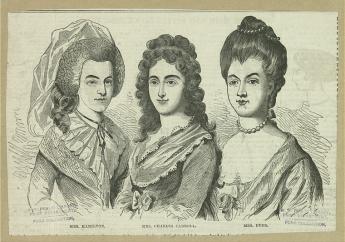
|
| The Chew Sisters |
Anne Willing Bingham was soon joined at the center of things by two Chew sisters, naturally referred to as astonishingly beautiful, who not only had their own mansions, but also Cliveden the summer place in Germantown as available venues for parties. It was commonly stated to be "social suicide, not to be home when the Chew sisters came to call." Delicious gossip was, of course, a strong undercurrent in such a social whirl, and Harriet Chew Carroll made a significant contribution. This daughter of Benjamin Chew the former Chief Justice (and Son of William Penn's personal lawyer)had married the son of very rich Charles Carroll of Carrollton, Maryland, but had to drop out of society because of notoriety associated with her abusively alcoholic husband. Similarly, Catherine Alexander Duer, who had married the son of the New Jersey patriot Lord Stirling, lost her social standing when her husband got deeply into debt in ventures with Robert Morris to the tune of today's equivalent of $40 million. As a Treasury official, there was a question of Duer's using public money to speculate privately, although he died in debtors prison before matters were completely clarified. His wife, who was known for having fifteen different wines on the dinner table, ended up her days running a boarding home to support herself. No doubt other transgressions were suppressed or covered up, while the political process was sufficiently advanced even in the early days of the Republic, to introduce some deliberate falsehood into the gossip mill. No doubt, one of the strongest drinks at the receptions was the bubbly wine of knowing all the inside scoop. And meanwhile, the potential disgrace of falling from favor was immensely powerful in enforcing conformity among those who might otherwise think themselves immune to it.
Some People were left out for various reasons, even if they could keep up financially or politically. It's always a little hard to identify why some people are social duds. Abigail Adams Smith seems to have been one of these, a constant source of adverse commentary about the extravagance, hypocrisy, etc., etc. English literature at this time has Jane Austen and William Makepeace Thackery, Pope Swift, and Dr. Johnson to satirize and constrain the social whirl, but American seems to have produced little more than correspondence and hushed remarks. The feeling of resentment was constantly growing in Republican circles, however, feeding a growing undercurrent of hostility undermining something so elitist and therefore somehow UnAmerican. After ten years in Philadelphia elegance, the District of Columbia was discovered to be scarcely more than a dismal swamp when the capital moved there, a place quite unsuited to high society. Dolley Madison revived things somewhat while acting as hostess for the widower Thomas Jefferson, and when her husband became the next President, opened her receptions to the general public. One can easily imagine the intense hostility of Andrew Jackson to any of this, however. Washington DC has since evolved a pallid political social whirl because America still has politically ambitious rich folks and plenty of money for indirect lobbying. But it hasn't ever been the same as the glory days in Philadelphia, and probably never will be. Present members of the financial/political elite who now work in Washington are in a great hurry to leave town every weekend, abandoning its empty office building to the tourists and civil servants.
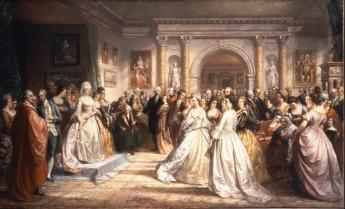
|
| The Republican Court |
The Republican Court served an important role in helping America unify thirteen colonies into a single nation. Because Philadelphia was for a time the center of the country, economically, socially and politically, all people of prominence in here, wanted to know each other. Variations of wealth and breeding stratified the women somewhat differently from the Variations of wealth and power of their husbands, ad constant mixing of the two strata unified the leadership of the new nation in ways that would have developed more slowly without it. The forced conversations of the receptions stratified independently but helped all the newcomers to the scene to adapt to the realities more comfortably. Each group, private and public watched a constant parade of aggressive climbers sort themselves out and searched for how they had made out; wealth got you to the top in one group, private and public, watched a constant parade of aggressive climbers sort themselves out and searched for how they had made out; wealth got you to the top in one group, power got you there in the other. But in both groups, the cruelties of social striving made the iron rule clear that such things as wit, gracefulness, physical attractiveness, education and breeding were qualities that floated you to the top of the soup of any flavor. When you are forming a new nation, perceptions of that sort are important to acknowledge. The American aristocracy could be circumvented among the many ways to the top, could be sneered at by those who lacked its unattainable features, and could be sniggered at by real aristocrats of real aristocracies in Old Europe. But it served well enough as a role model for a constant stream of new immigrants, and set a pattern for new communities of the interior, also seeking a sense of cultural direction. Like the breeding of horses and dogs that is such a constant upper-class avocation, there is a genetic message, too. Rich men marry beautiful women, so their children or grandchildren tend to be handsome. Handsome or not, gracefulness in social circles is learned at home. Darwin teaches you one thing, Adam Smith's hidden hand teaches another; both are worth attending to. Given eight or ten generations, this sort of evolutionary pressure forms a community, then a nation. It has certainly left major imprint on Philadelphia.
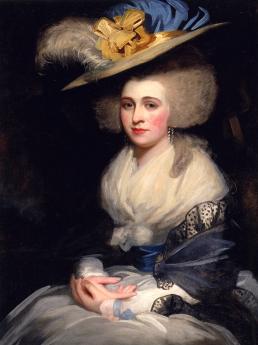
|
| Abigail Adams Smith |
On the rest of the nation as well, but in different ways. Along the East Coast, first families tend to persist and went to school so to speak in Philadelphia during Washington's presidency. Mary Ann Goodrich was a witty and Wealthy wife of a Connecticut political leader. Elizabeth Schuyler Hamilton was the famously vivacious wife of Alexander Hamilton of New York. Alice De Lancey Izard was the toast of Charleston, South Carolina. Patsy Jefferson Married Thomas Randolph of Virginia. Mary White Morris of Philadelphia had a bumpy trip as the wife of Robert Morris. In East Coast high society, the ladies usually have middle names.
Over three centuries, three main streams of immigrants plodded their way across the continent to the West and then merged. There were westward pioneers from north of Philadelphia with a certain kind of accent, from South of Philadelphia with another, and from Philadelphia with the normal way of talking. Each of them was following role models within its own cultural pattern, but the significance of middle names is now only a tip-off to insiders. There are patches of country, like Appalachia we are Texas, which brush off any allegiance to distant origins. But to the degree we are unified, the Philadelphia mixing bowl of the Social Scene during George Washington's presidency is a big part of how we got that way.
TOAST TO E. DIGBY BALTZELL (1915-1996)
A TOAST TO E. DIGBY BALTZELL (1915-1996)
The Franklin Inn Club, Philadelphia
Annual Dinner, 15 January 2010
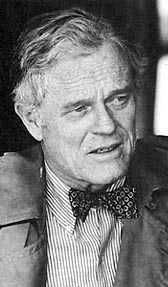
|
| E. Digby Baltzell |
I am grateful that our President, Deborah Goldstein, and the Board have given me this opportunity to make precedent -- tonight to strengthen the tradition of the Franklin Inn Club by raising a new toast, following our 18th century icon, Benjamin Franklin, and the 19th century men who founded the Inn, with a 20th century member. We are, after all well into the 21st century. It is my original privilege to honor a member and author who contributed strongly to American social thinking: E. Digby Baltzell.
Digby and WASPS Let me right away make two statements about Digby and WASPS. His name is associated with that acronym because it appeared in his book of 1964, THE PROTESTANT ESTABLISHMENT; ARISTOCRACY AND CASTE IN AMERICA. But contrary to a popular misconception, Digby did not invent the term WASP. I know, because a Jewish girlfriend from New York City used that term on me critically ("That's what we call people like you") in 1952. And there is good evidence that the term was in use as a put-down, like other American ethnoreligious slurs, two decades before Digby gave his term for White Anglo-Saxon Protestants scholarly standing in his book.
Secondly: however dear his idea was to him, Baltzell gave up on WASP aristocracy before his death. His subtitle had contained his aim: "Aristocracy and Caste in America." He was inspired by Tocqueville's attempt to save the French aristocracy from its own destruction by writing "Democracy in America" during the presidency of Andrew Jackson. Baltzell was concerned about his own aristocratic class. These were prep school and Ivy League educated people with family lineage, trust funds, and above all, what might be called Rooseveltian motivation. Either TR, Republican, or FDR, Democrat, party did not matter. Both Roosevelts had the aristocratic drive to excel: not only to lead but to assimilate other talents into leadership. That was the key to the matter: for a responsible aristocracy perpetuates itself by absorbing into ruling power new immigrant energy and multi-class talents, such as, in the 1930s, Fiorello LaGuardia, mayor of New York City, and Sidney Weinberg of Goldman Sachs.
An aristocracy is irresponsible, however, when it merely replicates its own ethnic and religious features. By protecting itself with clubbishness it ceases to be an aristocracy and rigidifies into a caste. Baltzell, 1964, feared that WASPS in the USA would let that happen, and wrote in the strong hope that they would not. But it was already happening. Looking back, we can see that the game was almost over.
Digby and Me Who was Digby Baltzell? He was born in Rittenhouse Square and grew up in Chestnut Hill to what he called an "impecuniously genteel" family. They sent him off to St. Paul's School in New Hampshire, an exclusive Episcopalian* boarding school formed in an English tradition. In his senior year, his alcoholic father was fired from his insurance company, and soon after died of a heart attack. For college, Digby could not afford Harvard, Yale, or Princeton, where all his classmates went but settled for the University of Pennsylvania. There he got himself through on scholarship, with various jobs such as ticket-taker, usher, and parking lot attendant at Franklin Field. He went on to get a Ph.D. at Columbia and came back to Penn, where he taught for the rest of his employed career.
I never met Digby personally because he died in 1996, the year that I joined the Inn. Yet I identify with the man I just described in some distinct ways. My own alcoholic father, a mellow, dear, and vulnerable man, lost his job as a stockbroker while I was in college. There, at Williams, I was a member of the same hard-drinking fraternity, St. Anthony Hall, as Baltzell had been at Penn. I'm not Episcopalian, but being a Scotch-Irish Presbyterian makes me categorically WASP. I feel like Digby did, that I have been a marginal member of the elite. I became an academic to try to figure out what the hell was going on around me. I have, like him, "an insider's heart and an outsider's mind." That has qualified me not to make a fortune, but to write books.
Digby and Us We all live in a time of social phenomena Digby never reckoned with -- of Bill Clinton as a white trash national leader; of John Kerry, a Catholic agnostic from St. Paul's School who lost the election of 2004 to G.W. Bush, a retrograde pseudo-Texan who had renounced his father's waspismo. Personalities that Baltzell might barely have imagined: Oprah Winfrey, a multicultural pop icon who is incidentally black; and the Afro-Saxon lawyer-intellectual whom we have chosen President of the United States, Barack Obama.
Baltzell finally gave up the attempt to invigorate his idea of a responsible ethnoreligious elite. He realized, and said, "what the Jews have done since World War II is the great untold story." And when he died he was preparing to undertake a book on the end of the Protestant establishment. He recognized that it had been replaced by a meritocracy based on professional performance, which, I think, is far more congruent to American social dynamics. I conclude that Baltzell's last and never completed project was an admission that his three books on the WASP establishment were a failed effort to firm up a transient power structure. I believe that Baltzell had been trying to implant in America a British notion of ruling class flavored with Tocquevillean nostalgia for a lost French aristocracy. Our nation has wholly different components from those, and he was bound to fail. Even as he struggled to make the point, he acknowledged the multi-cultural society around him, while expressing a vivid fear that multi-culturalism enshrined meant moral relativism, which would, in turn, mean an unworkable political system. On that last, he may yet prove correct. And he was surely astute in recognizing the importance in America of a professional meritocracy. If any of us, nonetheless, still yearns for an aristocracy of some kind, I would recommend Jefferson's idea of "a natural aristocracy based on talent and virtue."
Digby, although a connoisseur of clubs noted in the Social Register, never joined one, although often invited to do so. He criticized, among others, the Duquesne Club in Pittsburgh, the Links Club in New York, and the Philadelphia Club here for their obtuse and pointless exclusiveness.** But he chose to be a member of The Franklin Inn Club, and in his later years often came from home on Delancey Street to lunch among members. Our cultural, artistic, and literary atmosphere, we may dare feel, was comfortable for him. What he found here was perhaps an aristocracy without power, but a natural one in its components of talent and virtue. Sisters and brothers: let us toast Digby Baltzell -- an exemplar of our values, and an inspiration to us in the Twenty-First Century.
Theodore Friend
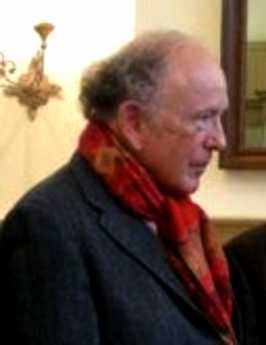
|
| Theodore Friend Sr. |
*To the rumor that Baltzell became a Roman Catholic before he died, a close living relative says no: he very much respected the Catholic Church, was interested in healing the breach with Episcopalians and may have attended some Catholic services. But nothing more.
**A Jewish friend, responding to my inquiries, tells me that he was admitted to The Union League in 1967, and about twenty years later became chair of the Admissions Committee. What percentage of members now are Jewish? He estimates five percent.
Sources:
Baltzell, THE PROTESTANT ESTABLISHMENT: ARISTOCRACY AND CASTE IN AMERICA , (1964)
PURITAN BOSTON AND QUAKER PHILADELPHIA, (1979)
THE PROTESTANT ESTABLISHMENT REVISITED, (1991)
Brief conversations with members of the Franklin Inn:
Daniel Hoffman, Nathan Sivin, and Arthur Solmssen.
Paying for College I
It's almost two platitudes that during the Nineteenth century America changed from a largely agricultural nation into a largely industrial one. And toward the end of the Twentieth century, we are going on from an industrial economy toward a service economy. This latest shift of direction is one of the main causes of soaring college tuition costs. Demand for first-class college education grows faster than price increases, competition, and internal efficiencies can seemingly control.

|
| College Cost |
Tuition costs at the top of the educational pecking order have now reached $52,000 annually, with room and board and other costs sometimes adding another fifteen thousand. Attending college already costs well in excess of the average after-tax income of working Americans, perhaps even in excess of the average income of college graduates. College costs regularly exceed the disposable income of undergraduates' parents and must be temporarily subsidized while the nation collects its wits, but subsidy cannot be a permanent solution to a problem so large. Average incomes of college graduates do exceed the average income of those who only finish high school. That extra income is gamely said to justify the investment, even taking into account the invisible loss of 4 years of earnings, perhaps even a trailing six-figure indebtedness. However, a meaningful score can only be toted up in retrospect, after inflation and taxes work their way into a net-net appraisal. Faith in some postulated answer to this accounting puzzle colors various belief systems, like: How much should we worry about widening income gaps between any income segments? What is the particular value to society of income redistribution between those who pay full tuition and those who receive financial aid?. There could be legitimate questions about many other values throughout the whole system. During the Vietnam War, many uncomfortable questions were raised about the educational system, even leading to riots on college campuses. It was often implied that many students were in college merely to escape the military draft. While that may have been precisely what was in many minds, the scramble for elite college admissions has intensified since the end of the draft, seemingly proving a college education has other merits. Steadily rising tuition costs are rapidly narrowing the income advantage, so one supposes the intrinsic merits of higher education can soon be measured by whatever enthusiasm for admission survives the bursar's bite. There are a few reasons for doubt, many reasons for anxiety.
In the first place, undergraduate tuition charges are poorly related to underlying instructional costs. It is natural to expect some markup for any product on sale, and some cushion for the unexpected. However, the difference between the tuition for night school and day school is a pretty disconcerting example. Comparatively few universities offer the same undergraduate courses as night-school courses, but a number of them do. The tuition for regular undergraduate courses is about average, somewhere around $5000 per course, but the tuition for night school is around $1200 per course -- same teacher, same textbook, same exam. Without access to the accounting data, one is led to suppose the tuition for night school comes pretty close to the true instructional cost of these courses. And therefore led to the supposition that the 300% markup for undergraduates implies that undergraduates, blue jeans and all, subsidize a great deal of unrelated activity throughout the university. This sort of discovery does not enhance the image of justice in academia.
In the second place, colleges can as easily re-direct surpluses into the endowment fund as out of it. They batter the concept of donor intent in both directions, breaking the linkage of tuition to underlying costs, and the linkage of donations to needs. Ultimately universities may be defined as mere steps to a higher income for wise investors, and cannot complain if proof of adequate return is demanded. Such accountability might even be a wise precaution, based on observation of the way Great Britain has made Oxford and Cambridge dependent on government subsidy, then subsequently allowing class warfare antagonisms to degrade the government contributions. These prestigious universities are now much humbled by transforming income inequality into a mark of shame. Unless American universities are designed to follow the same path, they will be forced to choose between competing for the way businesses do, or the way churches have traditionally done. Unfortunately, there is a reason to fear which was a college president will tip, with a cash register in one hand, and a begging cup in the other.
America is almost unique in its large proportion of small liberal arts colleges. No doubt, many of them would prefer to remain as they are, but it seems attractive to encourage thirty to fifty of them to become universities. When asked the differences, one college president replied the main difference is the presence of graduate students. Judging from the competitiveness of admission, the demand for graduate students is much closer to supply than at the undergraduate level; some tuition distortion reflects an effort to increase the supply of college teachers. Income prospects after graduation are probably an influence, but since the main occupational opportunity for graduate students is to teach undergraduates, increasing the openings for college graduates in a service economy must also imply matching the increase with more people to train them. However, only a minority of university undergraduates go on to become graduate students, so creating fifty universities also rebalances the incentives to become teachers. There are observers who advocate replacing teachers colleges with universities, a proposal which necessarily collides with the present informal dual-track system. High school teachers are mainly trained in teachers colleges, while university professors are products of graduate schools. The two streams are kept carefully separate because the commotion created by mingling them would probably be considerable. Nevertheless, this may be the rate-limiting step which will have to be addressed.
Mention of secondary education must be made, however, in order to grapple with the issue of automating education. It must be obvious that one distinguished Shakespearean scholar could replace thousands of lesser teachers of the same subject by the use of video recordings of the distinguished lecturer at work, both for introductory college courses and more advanced levels in high school. True, a small handful of pure scholars needs to be segregated away from the mass of college teachers, most of whom might prove to be graduate students. Face to face interaction is essential at every level of education of course, but automation holds such huge financial promise that greater experimentation and innovation seems inevitable. The education industry needs to make much more strenuous efforts to reduce its costs through greater adaptation to information technology if only to improve its ability to teach such adaptations to entrants into other industries. Shortening the school year, wider expansion of the Junior year abroad, and employing graduate students to teach, are debatable methods for reducing the cost of education; but an enthusiastic embrace of the computer revolution must improve educational quality before other nations leave us in their dust.
And finally, caution must be mentioned. Some degree of specialized focus of college courses is inevitable; we cannot develop scientists and engineers without it. But we must not eliminate the liberal arts, carelessly calling them luxury in a busy age. To a probably excessive degree, universities have replaced religions as a secular place to examine and teach young people how to live and behave. In little more than a generation, universities have a determined (long) hairstyle and (blue jeans) dress style, sexual morals, and political belief systems, mostly in a libertarian direction. That is not why we have colleges, or at least not why students must pay a quarter of a million dollars to experience them. There is another layer of intangible value in a liberal education, perhaps only perceived by personal experience. As I look back on a great many decades, I realize that almost every important step upward in my life was unexpected, almost unwelcome. Someone came out of the blue and offered it to me. Other people were watching and judging from behind some social bush. By contrast, almost every advancement that was strived for mightily, perhaps even a little too competitively, was to some degree gratuitously thwarted by others, often quite openly. Unobserved headhunters are watching for many qualities, particularly the ability to play this game. Spending some extended time learning what our society is all about through liberal education is a technique for self-advancement, too; universities would impair their customers' main chances in life by disturbing it.
What's Different About Kosher ?

|
| Kosher Foods |
About half of the labeled food products in a typical supermarket are designated Kosher, displaying a "K". That seems remarkable when only about 1 million American Jews are observant or Orthodox, thus eating only Kosher food for religious reasons. So, the Chemical Heritage Foundation recently decided it would be interesting to examine the definition and details of the Kosher designation, which presumably has some chemical basis. The CHF was right about the interest in the topic; attendance at the auditorium was packed. The following is entirely derived from what was discussed there.

|
| Rabbi |
One might have carelessly supposed that a religious designation of food products would have an exclusively religious basis, probably related to preparing the product according to a religiously defined method or ceremony. That's essentially true, but what is unexpected is that the choice of food to be included or excluded must obey a strict and extensive set of rules. The basis for the rules is found in the Old Testament, but specifics have been evolved by designated Rabbis, rather like the way the interpretation of the U. S. Constitution is left to the U.S. Supreme Court, and has considerably evolved in the process. An examination of these evolved rules is what leads other denominations of Jews to avoid the issue or even to decline to endorse it. That makes it rather awkward for chemists to understand the Kosher process in strictly chemical terms. For a perhaps extreme example, hard cheese but not soft cheese is strictly forbidden within Kosher rules. That's because the rules state that eating meat is fine, eating cheese is fine, but six hours must elapse between eating either one. What's forbidden, then, is a mixture of meat and dairy. Hard cheese is produced by exposing soft cheese to rennin, or rennet. Rennin is produced from the stomach of cows, so the interaction is deemed to be simultaneous rather than separated by more than six hours. It certainly is true that a chemical reaction between two ingredients is difficult to imagine if it is anything but a simultaneous contact between the two. So, chemists would have to agree that hard cheese involves less than a six-hour separation between meat and dairy. But most chemists would regard this interpretation to be somewhat strained; to punish people for disregarding it seems excessive. Whatever disagreement there may be is not based on the facts, but on the importance to be attached to them.
Similarly, most chemists would resist the idea that a chemical product derived from two different sources differs in any way at all. The most important example of this issue is glycerine, a common food additive. A fat consists of three fatty acids attached to glycerin; pure glycerin is produced by separating the fatty acids from it, and in any event, the fatty acids of pigs and cows are also chemically identical, at least in the view of chemists. Glycerin derived from pig fat thus seems to chemists to differ in no meaningful way at all from glycerine derived from cow fat. To those in charge of Kosher rule making, however, the difference in the source is vital, needing to be searched out in minute detail. Since Coca-Cola contains traces of glycerin, and the Coca-Cola manufacturer wished to have a Kosher label, the company somehow had to satisfy the Rabbinical demand that the sources and processing steps of the glycerin be identified in minute detail. Coca-Cola contains a secret ingredient which some believe is essential for the true Coke taste; the company was not going to reveal its processes. Somehow, this quarrel was resolved privately, although it is not easy for outsiders to imagine how it could be.
And so on. There may, of course, exist many Kosher rules which make perfect sense; the speakers did not go into that. What remains of general interest is the question why so many non-Orthodox Jews, in fact so many people who are not Jewish in any sense, insist on eating only food with a Kosher label. At the conference, it was explained that many people who have been told they are lactose-intolerant, or allergic to some protein, become fanatic in their fear of contact with such chemicals. That is, as a matter of fact, a common observation in many doctors' offices. These people seem to have developed the idea that they can trust the Orthodox rabbis to be even more fanatic than they are if anything more rigid and unyielding in their pursuit of particular exclusions. While that has driven many Jews away from Orthodoxy into other religious directions, it has served to reassure the health fanatics. The food manufacturers don't particularly care about the social features; if that "K" sells the product, they want to have it.
On hearing of these issues, one of my Jewish friends suggested an extension to Jewish kitchens. It was his view that if a real estate agent shows you a house with two or more ovens, two or more stoves, or even two or more kitchens, it probably had a Jewish owner at some time in the past. Multiple kitchen arrangements are much less likely to reflect an owner who likes to entertain a lot, than an owner who has been told of the six-hour mandatory wait between eating both meat and dairy, and has persuaded himself this rule extends to the separation of stoves. There's no great harm in any of these beliefs, of course, unless it is somehow represented that they improve the health of the believer, which would drag a highly reluctant Food and Drug Commissioner into a dispute he can't win, no matter how he rules.
Whatever the complete truth of all these suppositions, they lead the casual reader to let his thoughts meander. There's a similarity here to a great many other prohibitions and adherence, tenaciously adhered to, resulting in elections won and lost, provoking scorn heaped on non-believers. And even to totally unrelated legislation getting derailed because legislative representatives were unwise enough to take a stand on this one. Pro or con.
Pets For all Seasons
People who have had a chance to talk with Queen Elizabeth report she is so fond of the Korgi dog pets that she scarcely talks about anything else. Perhaps because he is British, then, Professor James Serpell seems natural to have been elected chairman of a new department at the University of Pennsylvania Veterinary School, devoted to the study of Human-Animal Interactions. In any event, he made an interesting presentation to the Right Angle Club recently, reviewing the history of acquiring pets. A domesticated animal is not necessarily a pet; chickens and cows raised for food purposes are not considered real pets. A pet is domesticated purely for the purpose of companionship and love. Study of cave paintings and fossils seems to show that pets were maintained for many years before animals were domesticated for food purposes, although hunting dogs might have utility beyond providing love and companionship. The ancient nature of pets does seem to suggest purposes other than utility have been prized for a very long time, and not exclusively by people who are affluent.
Pets are steadily increasing in number, however, and are estimated as approaching 160 million, a number growing faster than the human population of the earth. The human residents of the earth are just about the only species known to make pets of other species, although monkeys will occasionally treat marmosets in a pet-like way. There might still be some utilitarian purposes in keeping pets, however; a goat companion is observed to have a calming effect on wild horses. For something whose utility is marginal, pets are a pretty expensive hobby. It is estimated that $45 billion is annually spent on them. A non-pet lover was once heard to remark that a cat is a domesticated parasite. Apparently, you either love pets or you don't.
It probably hasn't much to do with the motives of pet-lovers, but research does seem to show that those who maintain pets live longer than those who do not, whether the pet is a cat, dog, or rabbit. Pet owners have lower average blood pressure and score better on tests which reflect the prevailing stress level. In spite of snide remarks sometimes heard about people who love pets better than their neighbors, tests of interpersonal relationships actually seem to favor pet lovers.
In recent decades, there has been a growing tendency to confer rights, animal rights, on animals in general, and pets in particular. Remarkably, animal rights advocates seem to be more common in urban environments, than in rural ones. Perhaps the experience of wringing a chicken by the neck in order to prepare dinner hardens the heart. Next thing you know, the Tea Party phenomenon will start getting blamed on observations like this, so watch your language, please.
Willow Grove Park
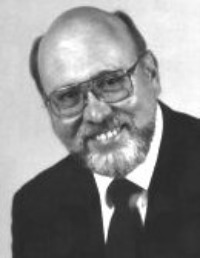
|
| Richard Karschner |
The Right Angle Club was recently highly entertained by a talk by Richard Karschner about the hay day of Willow Grove Park. Mr. Karschner appeared before the club in full uniform of the Marine Marching Band with medals and quickly demonstrated an immersion in this topic that must have taken a lifetime to perfect. He put on a virtuoso performance, a prepared speech perfectly timed to an automated slideshow, which was in turn in perfect synchrony with an automated musical background, exactly tailored to fit the momentary subjects. He concluded with a brilliant brief solo on the cornet (trumpet), using double and triple tongue-ing. To some of us who remember some futile struggling with the trumpet in our high school marching bands, the skill demonstrated was certainly impressive.
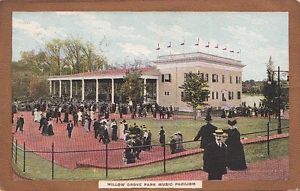
|
| Music Pavilion |
To go back a moment in time, the trolley car was the main method of public transportation in the last half of the 19th Century, blanketing the cities of America and their suburbs, and connecting to the trolley lines of other cities through an interurban network. Somewhere the idea developed of building Amusement Parks out at the far end of suburbs, to attract riders into using the trolleys for more than just commuting; there may have been as many as seventy or eighty such permanent circus grounds in America at one time, with more elaborate attractions that could be managed by traveling circuses. Philadelphia had several such trolley parks, notably Woodside Park in Fairmount Park, serviced by the "Park Trolley". But in 1896 Willow Grove was created on the edge of Abington, far more elaborate than any others, at the intersection of Old York Road and Easton Pike (Rte 611). Its terminal could hold as many as a hundred trolleys at once; the ride from Center City Philadelphia took 70 minutes and cost 15 cents. The area had mineral springs and had long been a favored vacation spot. Horace Trumbauer designed four or five of the buildings, and the Park eventually included a lake with rental boat rides, an arboretum, amusement rides, restaurants, a fun house, silent movie theaters, rodeos, roller coasters, a picnic park, and even an artificial mountain with a slow scenic ride up but a rip-roaring fast descent. By far the most central feature of Willow Grove was the 4000-seat music center, dominated by John Philip Sousa and his band giving four performances a day. Other musical performers were Victor Herbert, Walter Damrosch, Arthur Pryor ("The Whistler and His Dog"). Many of the ideas of Willow Grove are now to be found in the modernized form at Disneyland, but for twenty-five years music under the direction of John Philip Sousa was really the central unifying feature.
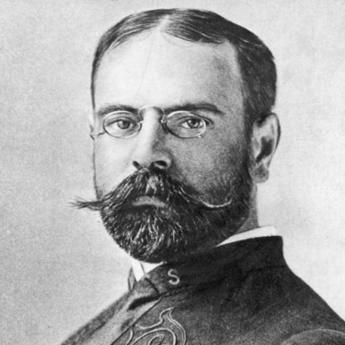
|
| John Philip Sousa |
It's generally held the arrival of radio broadcasting caused the decline of Willow Grove, although "The March King's" immense energy declined toward the end, as he began to enjoy being a multimillionaire. The composition of marches was in fact only a minor part of his musical output, which included among other things 16 full-length Broadway musicals. He was a national champion trap-shooter and a horseman of some note. One arm became nearly useless to him after a fall from his horse. Meyer Davis took over in the last few years, but a major fire pretty well finished the place off just in time to be buffeted by the 1929 crash. There was an attempted resurgence in 1933, but circumstances which made Willow Grove a successful "Virtuoso Solo" just couldn't withstand the competition of the automobile and television, and the land was finally broken up and sold for $3 million in 1976. Remnants of the gilded past are now scattered around the Willow Grove Shopping Mall, for those who wish to renew fond memories from their childhood. Or perhaps their grandparent's childhood.
Wood Turning
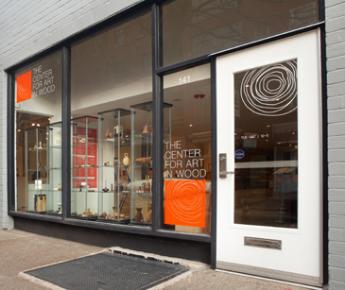
|
| The Wood Turning Center |
A lot of people are named Turner, probably reflecting some degree of ancestry of wood turners. That's an ancient skill, using wood lathes. In Colonial days, commercial wood turning had a focus on banisters of houses, flag poles, and even toothpicks. At the present time, it is mostly a hobby conducted in garages by people who are mechanically inclined; but when a skilled artist takes it up, the products can be exquisite works of art. Because this is America, there is a national club of artisans and admirers, called the Furniture Society, and a local Philadelphia club called the Wood Turning Center. It's located at 141 North 3rd Street. Because of one-way streets, you are advised to consult a map if you plan to drive there, on the north edge of the Ben Franklin Bridge, rather near the Constitution Center. Ron Humbertson, the curator of the museum, recently visited the Right Angle Club and talked about the subject.
The average skilled amateur takes ten or more hours to produce a wooden bowl on a wood lathe, but the professionals manage to do it in about five hours. If you start with a gnarled tree trunk, the product has many interesting lines and whorls. But then the artisan has to contend with knot holes, unexpected holes of wood rot, and the likelihood of cracking the piece in the process of carving it. By far the majority of a piece of raw wood is then carved away and discarded, something that bothers real tree lovers.
Because of all these unexpected features of the wood, the thinner the final piece, the more likely it is to crack and experience other mishaps, perhaps even leading to discards and starting all over. Even just drying the raw wood can lead to cracks, and sometimes even before the carving begins, so real artists gently dry the wood themselves as part of the whole process of producing art. Even if it doesn't crack, the usual finishing process involves five or more layers of clear epoxy finish, to reduce scratching and to hold it together to prevent those cracks. Those bowls which are intended to hold salads had better be crack-free if salad oil is to be poured on the food. Like any other piece of art, the really outstanding pieces are not intended to go on dining tables.
Original Intent and the Miranda Decision
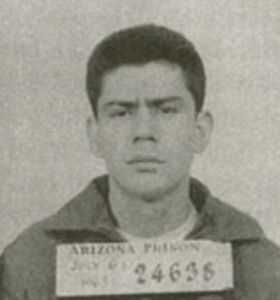
|
| Ernesto Arturo Miranda |
At the lunch table of the Franklin Inn Club recently, the Monday Morning Quarterbacks listened to a debate about Guantanamo Bay, prisoner torture and police brutality; all of which centered on the Supreme Court decision known as Miranda v Arizona. Ernesto Arturo Miranda was convicted without being warned of his right to remain silent, sentenced to 20 to 30 years in prison in 1966. Eventually, the U.S. Supreme Court, with Chief Justice Earl Warren writing a 5-4 decision, overturned the conviction, because Miranda had not been officially warned of his right to remain silent. The case was retried and Miranda was convicted and imprisoned on the basis of other evidence that included no confession.
An important fact about this case was that Congress soon wrote legislation making the reading of "Miranda Rights" unnecessary, but the Supreme Court then declared in the Dickerson case that Congress had no right to overturn a Constitutional right. Some of the subsequent fury about the Miranda case concerned the legal box it came in, with empowering the Supreme Court to create a new right that is not found in the written Constitution. Worse still, declaring it was not even subject to any other challenge by the other branches of government. In the view of some, this was a judicial power grab in a class with Marbury v Madison.
Several lawyers were at the lunch table on Camac Street, seemingly in agreement that Miranda was a good thing because the core of it was not to forbid unwarned interrogation, but rather a desirable refinement of court procedure to prohibit the introduction of such evidence into a trial. The lawyers pointed out the majority of criminal cases simply skirt this sort of evidence, use other sorts of evidence, and the criminals are routinely sent or not sent to jail without much influence from the Miranda issue. Indeed, Miranda himself was subsequently imprisoned on the basis of evidence which excluded his confession. What's all the fuss about?
And then, the agitated non-lawyers at the lunch table proceeded to display how deeper issues have overtaken this little rule of procedure. This Miranda principle prevents police brutality. Answer: It does not; it only prevents the use of testimony obtained by brutality from being introduced at trial. Secondly, Miranda contains an exception for issues of immediate public safety. Answer: What difference does that make, as long as the authorities refrain from using the confession in court? The chances are good that a person visibly endangering public safety is going to be punished without a confession. Further, the detailed procedures within Miranda encourage fugitives to discard evidence before they are officially arrested in a prescribed way. Answer: If the police officer sees guns or illicit drugs being thrown on the ground, do you think he needs a confession? Well, what about Guantanamo Bay? Answer: What about it? We understand the prisoners are there mainly to obtain information about the conspiracy abroad and to keep them from rejoining it. The alternative would likely be their execution, either by our capturing troops or by vengeful co-conspirators they had incriminated.
Somehow, this cross-fire seemed unsatisfying. The Miranda decision was made by a 5-4 majority, meaning a switch of a single vote would have reversed the outcome. The private discussions of the justices are secret, but it seems likely that some Justices were swayed by this edict viewed as a simple improvement in court procedure rather than a constitutional upheaval; Justices with that viewpoint feel they know the original intent and approve of it. Others are apprehensive the decision has already migrated from the original intent, in an alarming way. Everyone who watches much crime television and even many police officials feels that Miranda intends for all suspects to be tried on the basis of total isolation from interrogation from start to finish. More reasoned observers are alarmed that the process of discrediting all interrogation will lead to an ongoing disregard of the opinion of lawyers about court procedure, essentially the process of allowing public misunderstanding to overturn legal standards. Chief Justice William Renquist, no less, poured gasoline on this anxiety by declaring that Miranda has "become part of our culture".
What seems to be on display is the mechanism by which Constitutional interpretation drifts from the original intent. Not so much a matter of "Judicial Activism" which is "legislating from the bench", it is becoming a matter of non-lawyers confusing and stirring up the crowds until the Justices simply give up the argument. Drift is one thing; virtual bonfires and virtual torch-light parades are quite another.
Atlantic City, Brigantine and the N.I.H.
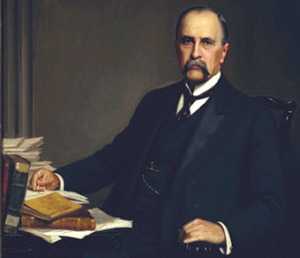
|
| Dr. William Osler |
It would only be honest to say that Atlantic City was a rundown mess after World War II, cheap, sleasey and dispirited. But for academic medicine during a period of thirty or forty years, one small nook of A.C. was the most exciting place in the whole world. Only during several days at the beginning of May, however. The reason it was so attractive to scientists was that beach hotels were cheap and dilapidated; Atlantic City probably contained the worst on the East Coast. The Haddon Hall was an exception, rather elegant and far too expensive for most physicians in training; research is a young doctor's game. The medical profession's annual beauty contest for medical research was headquartered in Haddon Hall next door to the Steel Pier, surrounded by hundreds of cheap lesser hotels. The professors all stayed at Haddon Hall, but few others could afford it. Indeed, resident physicians from Philadelphia mostly found it cheaper to commute from home for ninety minutes than to stay overnight, residents and fellows from more distant cities stayed in the dumpy hotels. Nobody in that age group had much money to spend, so the commuting Philadelphians didn't miss out on much nightlife at the shore by going home every night.
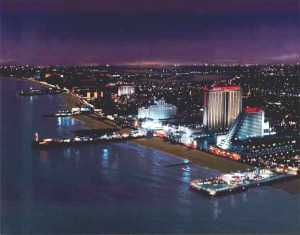
|
| New Atlantic City Skyline |
Before the spring meetings got popular after World War II, a hundred members of the most elite society of academic research professors on the East Coast assembled in Haddon Hall, all of them quite able to afford to stay in the headquarters hotel. This had been going on since William Osler founded it in 1885, at first in Washington, and then migrating to Atlantic City. As medical research began to flourish, the society grew a little, but at a pace too slow to keep up with the growth of medical scientists, so a second group of "Young Turks" formed a competitive society which met the next day, and ultimately a third group, the "Young Squirts", felt excluded by the old has-beens, and met on the third day of what eventually turned into a week-long parade of scientific presentations, each ten or twelve minutes long, starting before normal breakfast time, lasting until 10 PM, with occasional breaks. That is to say, the medical papers that everybody wanted to hear grew from thirty or forty a year to nearly a thousand. If a young fellow did well, the older professors would notice, and he would get employment offers. That kept the eminent older doctors around for the whole session and provided an informal ranking of the worth of the program. Everybody wanted to advance up the ranks of prestige, and this system roughly sorted them out. However, it was an exhausting experience just to sit through all that and listen; the old professors tended to drop out and go home a little early. No matter how many outstanding papers were clamoring to be heard, no one could endure more than a week of straining for attention. It was strictly forbidden to present a paper which had been published or presented anywhere else, so it was usually difficult to guess in advance whether a paper was likely to be exciting. You could go home early if you wanted to, but at the risk of missing the real blockbuster of the year, tucked away on the program with a bewildering scientific title. The younger wise-apples had a formula, that if one paper in three was outstanding, you were having a good meeting; you just had to grit your teeth and try to stay awake during the other two-thirds. Still, that got to mean that the reward for pursuing this grinding ordeal was to go home after learning about three hundred outstanding scientific advances that no one else knew about; knowing three hundred cutting-edge things that other doctors didn't know really did put you well ahead of the pack. Keep that up for ten or twenty years, and notable differences among colleagues would relentlessly emerge.
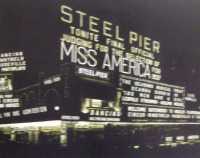
|
| Old Steel Pier |
From the lounge of the Haddon Hall, with non-members forced to stand in the back, the meeting moved to the 2000-seat movie theater in the Steel Pier, at about 1950. Things then came to equilibrium; the movie theater was never completely full. We were told there were seven or eight even larger auditoriums on the Steel Pier, but it was never necessary to move to them. The first four years I attended these sessions I was being paid no salary at all, and most of my contemporaries were only getting token amounts beyond room and board. The eminent professors who were real members of the top society would find their way to front-row seats where they could ask questions, having had a chat with colleagues at breakfast in the Haddon Hall. But they had once been impecunious, too, and wore their brand-new Ivy League plaid jackets rather uncomfortably. Doctors who (gasp) worked for drug companies also gave signs of affluence, but they tended to drift over to the barber shop and have a shoeshine, where they picked up the gossip for their employers. Over a period of fifty years, I can recall first hearing of the wonders of several new antibiotics, a strange chemical called cortisone which seemed to cure rheumatoid arthritis, the introduction of the birth-control pill, the introduction of polio vaccine, the first drugs in the treatment of tuberculosis, and a vast array of novel explanations for disease phenomena that had seemed mysterious for centuries. In those days, a year without a new medical miracle was a very lean year, indeed. During this interval, the basis for curing at least thirty common diseases was first presented at the Spring Meetings in A.C., and since then medical practice looks nothing like it did in 1947.
Gradually the audience changed, too. At first, the people presenting papers came from at most ten medical schools, and mutterings of discrimination could be heard. In fact, it was plainly true, because only about ten schools had any extra money to fund research. When this news reached the U.S. Senators from the Mid and Far West, federal research money started to be spread around more evenly, just like the distribution of Senators. It was the appointment of one of the members of the original small nest of clubs to the Directorship of the N.I.H., the National Institutes of Health in Bethesda, Maryland, which really got the research spigot to flow. The point man was James Shannon, who knew what was what in cutting-edge research, and he sat there in the audience making up his mind who was who. For all the time of his directorship and for long afterward, he enforced, really enforced, the rule of "no political influence in research grants". Lots of congressmen came to the N.I.H. with the news that their relatives had such-and-such a disease, and so they thought more money should be diverted to research in that area. Nothing doing. Shannon held the keys to the kingdom, and he knew it. He had a deft feel for how much money the research industry could usefully absorb, and then he went to Congress and demanded it. The purity of this process has frayed at the edges somewhat as the amounts of money grew to what is now thirty billions of dollars a year. Most experiments, unfortunately, fumble or fail, so a lot of money gets spent on blind alleys before someone gets it right. It takes a tough-as-nails idealist like Jim Shannon to survive the temptations of an N.I.H. Director, and among the temptations is just to give up and give out money indiscriminately to people who want to count all the grains of sand on the beach. If your idea was a good one, you got all the money you could possibly spend; if the idea was mediocre, in those days you got nothing at all. On the other hand, the estimation of overhead costs is something other mortals can quibble about. Shannon demanded and got about a third of the grant money to be given to the medical school administrations. That was barely enough in a research establishment emerging from the Depression of the 30s, and the World War. However, now that the pipeline is filled, it is increasingly doubtful that ten billion a year needs to go to administrators; the bean-counters took over, and the results are more open to criticism. After all, after someone finds a cheap cure for cancer, some disadvantages of perpetuating an aging retiree population start to emerge and may outweigh the arguments for spending quite so much doing it. That may well be what the advisors to President Obama are growling at, but for now, the example of his nose poked into the hornet's nest of favoring research for certain population (voter?) groups will restrain others who were once inclined to agree. After cancer is cured, perhaps then everything will seem different.
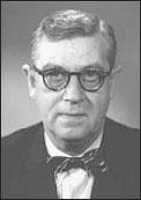
|
| Dr. James Augustine Shannon |
Well, let's tell one story out of many that could be told. Around 1965 there were two competitive polio vaccines rumored to be in the pipeline. Jonas Salk had an injection method, and Albert Sabin had an oral vaccine. Anyone who had watched children run shrieking from a needle knew that Sabin had the preferred method, but Salk got to Atlantic City two years earlier than Sabin. The auditorium was filled with rumors of very dubious precision to the effect that Salk had used unfair methods to get to the stage of public announcement. For example, it was growled he gave the vaccine to the Russians to test, but they were afraid of it and gave it to the Poles. Regardless of such scurrilous gossip, which is here repeated only to show how hysteria can occasionally agitate even scientists when Salk gave his paper at the Steel Pier, the standing ovation was thunderous. And so, as the meeting broke for dinner the crowds migrated over to a huge seafood restaurant named Hackney's and watched the new scientific hero get a little tipsy in public. That seemed to revive the rumors which became even less factual. But there is no doubt that by the time Sabin stood at the same podium and gave his presentation of the oral vaccine, the crowd had switched to his side, the ovations were unlike anything the scientists had ever heard. Anyway, as emotions now settle down in retrospection, we are all pretty happy that polio is nearly eradicated from all but a few corners of the earth, and these two men are both responsible for it. But so is Jim Shannon responsible for it, and he never got the ovations he deserved.

|
| Mr. Peanut |
When the gambling casinos came to A.C. the cheap boarding houses were swept away, doctors in the research were incidentally better paid, and the Spring Meetings migrated back to Washington. The dumps on the beach have been replaced by gleaming multistory hotels, the place looks much more prosperous. Doctors are in a position to know about the drug and alcohol addiction, the venereal disease and crime among the casino employees, and the personal tragedies among the gamblers. But anybody can see the new buildings and clean streets. When a group of eight of us took a nostalgic trip to revisit the place, no doctor even mentioned the idea of going in to drink and gamble -- even the suggestion was preposterous. So we wandered over to Brigantine where there appears to be a large retirement community, where gambling and drinking seem equally unlikely. The elementary school in which we heard a talk about the old days was splendid beyond anything I remember in an elementary school. Among the audience, the questions revealed there were many former employees of the old A.C., people who ran shops to sell salt water taffy, fudge and the like to crowds on the boardwalk. Some of them may have once driven Jitney buses or pushed sightseeing wheelchairs. But not one of them showed the slightest sign of recognizing that on the first weekend in May, every year, a crowd of nerdy-looking serious fellows would move into familiar boarding houses for a few days, remaining mostly invisible during daylight hours. That was the academic doctor crowd if anyone had bothered to ask, pouring into the Steel Pier movie theater, having the time of their lives listening to medical history being made. After a week they all went home, and nobody in A.C., later Brigantine, paid any attention to any of it. After all, A.C. is about salt water taffy, right?
New Roles For Grandparents
Like everyone else, I had two grandfathers and two grandmothers. However, I can only remember seeing one grandmother on a single occasion when I was three or four years old, and the other three died before I gathered any recollection of them. Essentially, I never knew my grandparents. If they ever knew me, it was as a puking infant, don't he look sweet.

|
| Great Grandpa and Great Grandson |
One of the many unexpected consequences of the introduction of penicillin, polio vaccine and the like, is that my generation has had to invent the role of grandparent, without any models to follow. My grandchildren are all in college or beyond, with reasonable expectations of getting married and starting careers while I watch. I already have two great-grandchildren, and with luck will have lots more. To my knowledge until ten years ago, I never met anyone who had great-grandchildren, so I'm not entirely certain what I'm expected to do with them. I could ask others, but they don't know much, either. Society has evolved a database of experience about how parents are supposed to relate to children, and children have evolved literature about how they are expected to cope with their reflex hostility to their parents. Sigmund Freud made up huge mythology about such conflicts and emotions, and while we are shaking off a good deal of it, Freud did help define the general rules of behavior between parents and children. All of us believe we are exceptions to such rules, of course, but they do make up a road map of the land mines to avoid. Furthermore, most of us formed some firm opinions during the Vietnam conflict or the Summer of Love; presumably, most of our children feel a little silly about it now. Their folk songs record the mythology of that experience; even with guitar accompaniment, these songs all sound a little wry. Sorry about that. Wouldn't have missed it for the world, but sorry about that. Are ya gonna need me, are ya gonna feed me, when I'm sixty-four. Sixty-four? That was twenty years ago.
By this time, the sassy generation has had a chance to learn how sharper than a serpent's tooth it is, as a reminder that there have always been a few who lived King Lear's experiences, but now it could happen to anyone. The two generations, my children's and my own, have now lived a common experience from start to end, not just half of it as Freud depicted. But there's a new twist; the two generations think they have a role with the third generation. Both generations are unclear about what the grandparents' role should be with the new generation of young adults. I know what I think, you know what you think. Neither of us knows anything.
A thousand years of experience teaches how unwise it is to allow any relationship to revolve around gifts and the expectation of gifts. A mere two hundred years of experience make it plain to almost everyone how easy it is to ruin children by making life too easy for them. What does one do, then, with savings large or small, when grandchildren seem to combine aloofness with expectations? Does our society really expect us to favor our personal genome into eons of astronomical time? As one wanders occasionally through graveyards, it is very clear that our nostalgia for great grandparents born in 1814, is small indeed. Should we make an effort to create a lasting impression on such visitors from another planet, or should the whole misty idea of consanguinity be abandoned as a delusion? Should we take the wry advice of those who test our reactions with cynical descriptions? Should we, in a word, attempt to live out our lives with the perfect timing of spending our last dollar during our last hour? Come back in fifty years and there will be shelves of novels, plays, and poetry which tell the sad tales of those who made one choice or the other. Future generations of grandparents will still have to make their own decisions, but at least they will know how the world will view them. One generation will likely cling to the viewpoint of its contemporaries, another generation will reject such viewpoints as nonsense. Our generation will never be quite sure.
Among the funny things about this situation is the curious inversion of the social classes. Everyone notices how domestic servants hang around observing the behavior Upstairs; no matter how firmly it is rejected Below Stairs, employer behavior is marveled at and imitated to some degree. But in the past, those servant social groups who had their children at sixteen, their grandchildren at thirty-two, their great-grandchildren at forty-eight, knew something that those of us who defer our gratifications might wish we knew. The experience is raw and basic, and all the more important for that reason. Some budding novelist, hoping to cloak predictions as folklore, might give that theme a try.
Frank Furness (2) Rittenhouse Square
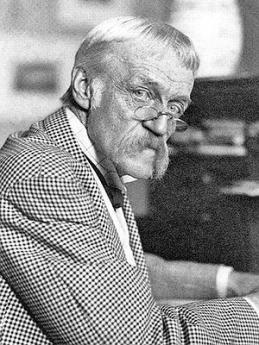
|
| Frank Furness |
George Washington had two hundred slaves, Benjamin Chew had five hundred. It wasn't lack of wealth that restrained the size and opulence of their mansions, particularly the ones in the center of town. The lack of central heating forced even the richest of them to keep the windows small, the fireplaces drafty and numerous, the ceilings low. Small windows in a big room make it a dark cave, even with a lot of candles; a low ceiling in a big room is oppressive. Sweeping staircases are grand, but a lot of heat goes up that opening; sweeping staircases are for Natchez and Atlanta perhaps, but up north around here they aren't terribly practical. Building a stone house near a quarry has always been practical, but if there is insufficient local stone, you need railroads to transport the rocks.
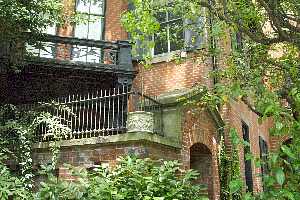
|
| Early Victorian |
So to a certain extent, the advent of central heating, large plates of window glass, and transportation for heavy stone and girders amounted to emancipation from the cramped little houses of the Founding Fathers. Lead paint, now much scorned for its effect on premature babies, emancipated the color schemes of the Victorian house. Many of the war profiteers of the Civil War were indeed tasteless parvenu, but it is a narrow view of the Victorian middle class to assume that the overdone features of Victorian architecture can be mainly attributed to the personalities of the Robber Barons. This is not the first nor the only generation to believe that a big house is better than a small one. The architects were at work here, too. It was their job to learn about new building techniques and materials, and they were richly rewarded for showing the public what was newly possible. Frank Furness was as flamboyant as they come, a winner of the Congressional Medal of Honor for heroism, a man who wore a revolver in Victorian Philadelphia and took pot-shots at stuffed animal heads in his office. He affected the manners of a genius, and his later decline in public esteem was not so much disillusion with him as with the cost of heating (later air-conditioning), cleaning, and maintenance which soon exceeded provable utility. The simultaneous arrival of the 1929 financial crash and inexpensive automobile commuting to the suburbs stranded square miles of these overbuilt structures. It was the custom to build a big house on Locust, Spruce or Pine Streets, with a small servant's house on the back alley. During the Depression of the 1930s, there were many families who sold the big house and moved into the small one. Real estate values declined faster than property taxes and maintenance costs; incomes declined even faster.
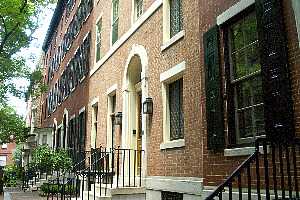
|
| Delancey Street |
It thus comes about that large numbers of very large houses have been sold for very modest prices, and the urban pioneers have gentrified them. You can buy a lot of house for comparatively little if you are willing or able to restore the building. We thus come back to Frank Furness, who was the idolized architect of the Rittenhouse Square area, in addition to the massive banks and museums for which he is perhaps better known. Unfortunately, most of the Furness mansions on the square have been replaced by apartment buildings, but one outstanding example remains. It's sort of dwarfed by the neighboring high-rises, but it was originally the home of a railroad magnate, a few houses west of the Barclay Hotel, and it holds its own, defiantly. Inside, Furness made clever use of floor-to-ceiling mirrors to diffuse interior light and make the corridors seem wider. Although electric lighting made these windowless row houses bearable, modern lighting dispels what must have been originally a dark cave-like interior on several floors, held up by poured concrete floors. Furness liked to put in steel beams, heavy woodwork, and stonework, in the battleship school of architecture. If you were thinking of tearing down one of his buildings, you had to pause and consider the cost of demolition before you went ahead.
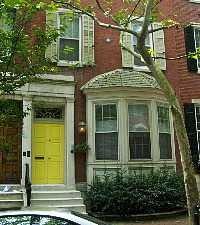
|
| Frank Furness Window |
There are several others of his buildings around the corner on the way to Delancey Street, one of them set back from the street with a garden in front. That's what you expect in the suburbs, but the land is too expensive in center city for very many of them; this is the last one Furness built before rising real estate costs drove even him back to the row-house concept. On Delancey Street, there is a house which he improved upon by adding an 18-inch bay window in front. The uproar it caused among the neighbors is still remembered.
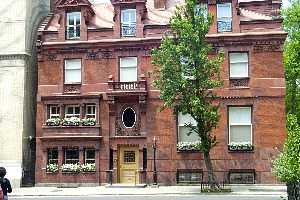
|
| Doctor Home and Office |
A block away on the part of 19th Street facing down the street, Furness built another reddish brownstone house to glare back at the neighbors. The facings of the front suggest three-row houses, and it was indeed the home of a physician who had his offices on one side, entrance in the middle, and living room on the right. The resulting staircase in the middle is used to good effect by opening a balcony on the landing overlooking the parlor below. As befits the Furness style, the wall is thick, the wooden beams heavy. And, in a gesture to the lady of the house, the room adjoining the living parlor is a modern kitchen so the kids can play while mama cooks or guests can wander by as she gets dinner ready. Times have changed, the servants quarters once were plain and undecorated. The lady of the house never set foot in the kitchen so she could care less what it looked like.
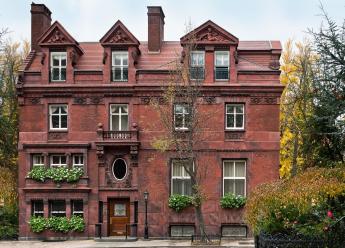
|
| Frank Furness Home |
As a matter of fact, that's the remaining problem for these places, the rate-limiting factor as chemists say. Automatic washers, microwaves, electric sweepers, spray-on cleaning fluids and similar advances are the new industrial revolution which makes these hulking mansions almost practical. What's still lacking is the social structure of Upstairs and Downstairs, the servant community overseen by the lady of the house, who once was sort of the Mayor of a town. The lady of the house is now a partner in a big law firm, or similar. It simply is not wise to leave a big expensive place unattended by someone constantly supervising the domestic help. It is never entirely safe to leave the financial affairs of the household in the hands of someone who is not a central member of the owning family. Perhaps the father of the family can be brow-beaten into spending some quality time with the children once in a while.
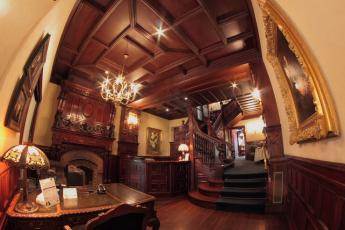
|
| Structure of Upstairs and Downstairs |
Perhaps an accountant can for a fee be trusted with the finances; perhaps a butler can be found who will whack the staff when they get out of line. But the plain fact is these monster houses were built around the assumption that the lady of the house would run them, and the old style of manorial life cannot return unless the house is completely redesigned for it. Someday, perhaps a genius of the Frank Furness sort will make an appearance, change everything, and make everybody want to have it. But it is asking for something else when you insist on this happening in an old stone fortress that was designed to house a different style of life.
Gum

|
| Gum Bubble |
The ancient Greeks and Romans are said to have enjoyed a sort of chewing gum. The ingredients are uncertain but unlikely to have been chicle, the sap of a variant rubber tree, which was taken up by the Mayans in the First century. The vision thus ensures that Mexican soldiers might well have been chomping when they set out to conquer Texas and devastate the Alamo. Conceivably Santa Ana himself was popping bubbles when Sam Houston found him crawling through the tall grass when he should have been dying like a man.
What is not so fanciful is that Santa Ana did go into exile in the United States, seeking refuge on Staten Island. Taking along a large supply of chicle, he was hoping to find a way to change it into rubber and thus restore his fortunes. His New York landlord, a photographer named Adams, struggled unsuccessfully for months to change the gum into rubber, but eventually switched over to chewing gum of chicle. This Mexican rubber variant is chewy only within a narrow temperature range, getting brittle when cold, and sticky when hot. The outcome of this bizarre episode was the Adams brand of chewing gum, a dominant feature of our culture until 1922 when William Wrigley, Jr. of Chicago added a mint flavor and made a great fortune selling the hope that minty taste would clean your teeth, sweeten your breath, and improve attractiveness to the opposite sex. Wrigley must have been a great businessman, since the Wrigley Building still dominates central Chicago, while everyone knows about Wrigley baseball field, and his descendants even run a private railroad through the Copper Canyon south of Tucson into Mexico. Wrigley's winter mansion sits on top of a small mountain outside of Phoenix, once affording a grand view of the surrounding desert for many miles. But subprime mortgages helped build up the desert, so at night there is now a sparkling view of the lights of Phoenix suburbs, longingly gazing up at Wrigley's mountain fastness filled with pictures of relatives who got themselves great notoriety, mostly related to unfortunate escapades with love.
Well, whatever. By 1960 a cheaper synthetic chemical came to replace chicle in Chiclets without distressing the customers and seemingly making it commercially practical to spread this central feature of American culture to Asia, Europe and beyond, with the notable exception of France which makes their cultural superiority a point of national pride. On further reflection, if they prefer vintage chicle to the present chemically improved synthetic, the French may have an important insight. Just look at our filthy sidewalks.
Other cities may be more diligent in scrubbing their sidewalks, but at least in Philadelphia, the new synthetic chewing gum is leaving its mark. The realization gradually creeps up on you that sidewalks near popular corners of the center city are spotted with round black spots, slightly larger than a silver dollar, but uniformly black. Just what the sidewalks around high schools look like, I tremble to consider. But those city corners where a sidewalk vendor parks his cart are particularly peppered, representing the disgusting habit of spitting the chew-gum on the sidewalk before eating the hot dog. The detritus is flattened out by someone's shoe, and the result is quite distinctive. As I was contemplating a particularly loathsome street corner, a passing Philadelphia Grand Dame shared her insight with me that the gum attracts dirt and gets black. I somehow doubt that because it is such a uniform blackness. It seems more likely that the trade secret chemical deteriorates in the sunlight, and being less sticky than the traditional goo, sticks to the sidewalk instead of the shoe which squashes it.
So think this over. Someone was recently chewing that stuff; would you kiss that person? If it's fresh enough, it might transmit the flu virus to your shoe; ye Gods, maybe the HIV virus, perish the thought. There's a great absence of evidence about the disease transmissibility of this unknown material. Maybe our congressmen should take a recess from blaming Wall Street for the decline of Greece and Portugal. And make chew-gum scoopers just as mandatory as pooper scoopers.
Footnote: A fellow member of the Right Angle Club recently revealed he had once worked for the Philadelphia Chewing Gum Company in Havertown, which was closed by new owners in 2003. While he didn't know anything about the ingredients of gum, he could report that this company used trainloads of old rubber tires for some purpose. On further checking, it is stated in the literature that at the present time, no chewing gum doesn't use rubber, so apparently Santa Ana's dream has finally come true in a round-about way.
Serpentine Rock From Serpentine Barrens

|
| Barrens |
Even in pre-revolutionary Colonial days, it was recognized that patchy areas of Chester and Lancaster counties were covered with twenty-foot stunted evergreens instead of two-hundred-foot oaks. They were "barrens", resembling the pine barrens of central New Jersey. In time, these barrens were particularized as Serpentine barrens, out of a recognition that this stunting of vegetation was somehow associated with greenish stone in the bedrock. So, the serpentine barrens in time became serpentine rock quarries, but they seem somehow less barren now that surrounding deciduous forests have been cut down to make nice farmland. The greenish stone was a novelty, especially because it was usually (but not invariably) soft sandstone and easy to quarry, and the bedrock was only an inch or so under the topsoil, or even appeared on the ground surface as outcropping. These qualities made serpentine a popular building material, but in retrospect, it should have been more apparent that sandstone crumbles easily, and what can stunt tree growth probably wasn't very good for you.

|
| Serpentine Rock |
Well, the green color comes from chromium salts. Sometimes the greenish color is diffused throughout the volcanic rock, but more commonly concentrated in green veins "snaking" through sandstone. Diffuse is better for building because the greenish intrusions create fracture lines in response to acid rain. In modern times, we mostly think of chromium as imparting a shiny look to plated auto bumpers. Some automaker was once quoted as saying he sold more cars using $10 worth of chrome than with $100 worth of engineering. That's metallic chrome because central to the definition of a metal is that it looks shiny. Even high school chemistry scholars can tell you it is a "salt" of chromium, the chromic ion, which imparts a greenish tinge when dissolved in water. So, chromic salts dissolved in the local water are what dwarf the vegetation of a serpentine barren, not chromate (which is yellow), and not metallic chromium (as in auto trim). So, although one might suppose otherwise, a few years ago when local builders started up modern quarries of the serpentine rock, the environmentalists of Chester County were up in arms. Demonstrations were held, editorials are written, politicians hectored. The Serpentine Barrens was a local treasure, requiring legal protection; protective ordinances were demanded.

|
| Building construction with Serpentine Rock |
Although building construction with the serpentine rock had a considerable flurry in the late 19th Century, the crumbly nature of sandstone caused the disappearance of all but a few examples. A building in boathouse row on the Schuylkill, a pre-revolutionary house on the Brandywine battlefield, College Hall on the campus of the University of Pennsylvania, pretty much comprise the notable surviving examples. But in a certain way, the Serpentine buildings do sort of define Victorian Philadelphia.
California is not within the intended scope of Philadelphia Reflections. However, it probably should be mentioned that Serpentinite is the official California rock, as would be natural for a substance which composes about 2000 square miles of its bedrock. It's green in color, but has high magnesium content, and seems to originate with the grinding of tectonic plates as they throw up mountain ranges, with attendant earthquakes. California also has serpentine barrens, but local geologists blame that harmful vegetation effect on magnesium competing with soil calcium (rather than the less notable chromic ions in West Coast serpentine). We're getting into some pretty fine distinctions, here. Pennsylvanians will probably be content to know we found ours first, that it had a flurry in Victorian architecture, and it's just a bit quaint. And, that it doesn't pose a significant risk for asbestos poisoning. A California geologist, in defending their state rock honor, recently proclaimed there was a greater statistical risk of dying from their state animal (the grizzly bear) than from their state rock.
REFERENCES
| The Pine Barrens: John McPhee: ISBN-13: 978-0374514426 | Amazon |
Chester County, Pennsylvania

|
| Map of Chester County |
Chester County was one of the four original counties of Pennsylvania, as first laid out by its first white owner, William Penn. Although several parts of Chester County have been cut away, what's left is still quite large. Lancaster County was separated in 1729, and in 1785 Dauphin County was separated from that. In 1789, Delaware County was separated. If you stand in the horse country of Chester County, you still might find it hard to believe anything much has happened in three hundred years. But as a matter of fact, the present population residing within Penn's original boundaries of Chester County would make it the most populous county in the state and growing steadily. Since Philadelphia and Pittsburgh are meanwhile shrinking in population, projected future relationships would strike most residents of Chester County as quite remarkable. Horses, that's what Chester County wants to be all about. Even the mushroom growers of Kennett Square sort of count as part of the horse industry, because mushrooms are grown on horse manure, in the dark. Electronics and steel mills are not exactly traditional, but they reside here, too. As a small footnote, the Lukens Steel Company was recently purchased by an investor named Ross, who lumped it with several other steel mills and then sold the bundle to an owner in India. The consequence is that Chester has a footprint of the largest steel company in the world, or the largest steel company in India, whichever way you wish to style it. Nevertheless, the neighborhood still looks like horse country.
Furthermore, southern Chester County is socially part of the state of Delaware, while western Chester County is thoroughly Pennsylvania Dutch. Up north, the Philadelphia Main Line is building mansions as fast as mortgage originators will allow, and many of them end up paying Chester County taxes. All along Route 202, the central artery of the Great Valley, stretches a burgeoning electronics industry, within which is found Vanguard, the largest investment company in America, or possibly the second largest, depending on temporary quirks of mark-to-market pricing. Chester County presently has the highest average personal income of any county in America. It is far from true that everybody has a horse farm or a trust fund.
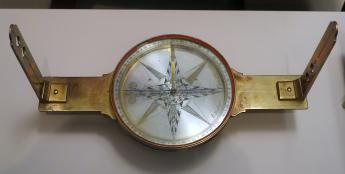
|
| David Rittenhouse's compass |
In a spiritual sense, Chester County horse culture contiguously spreads far beyond even historic outlines of Chester County. The boundaries of southeastern Pennsylvania were laid out with David Rittenhouse's compass, so the rolling hills suitable for horse farming extend into the states of Delaware and Maryland, and of course out into Lancaster and Dauphin counties, without much visible sign of individual state or county. In Europe, by contrast, almost all boundaries are set by rivers and mountain ranges, so the physical appearance of the countryside is apt to change sharply when crossing political borders. In fact, it is possible to say it in reverse: the State of Delaware is mostly Chester County extended, at least in its upper third. Below that lies urban and suburban Wilmington, and below that ("south of the canal") spreads loamy flat farm country, formerly slave country. Maryland divides similarly; an upper third of Maryland's rolling hillsides (sometimes known colloquially as Chester County extended), followed on the south by tidewater Maryland, in turn, followed by the suburbs of Washington, DC. The remnants of Baltimore are mixed in there somewhere, too. When you drive through miles of silent prosperous farms, regardless of highway signs, it is natural to think of yourself in the heart of America.
The one thing Chester County never much warmed to was Universities. It may shock residents of New York City to hear that Chester County never thought much of having its own art museums, classical music, theater performances or opera. However, Chester County doesn't share typical urban dislikes, either. Local speech patterns suggest Appalachian hillbillies and the Pennsylvania Dutch L'il Abners are just like us, just not so rich. Chester County sometimes thinks of itself as nobility, but it isn't Ivy League nobility, it's a country squire. We all like horses, dogs, and guns, we can't imagine why everyone else doesn't like them, too. Chester County has more history than almost anybody; it just doesn't talk much about it.
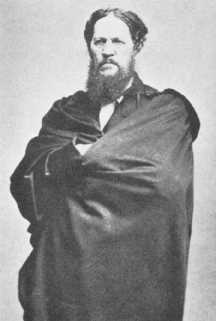
|
| Josiah Harlan |
So let's mention just the highlights: George Washington fought the battle of the Brandywine, the biggest battle of the American Revolution, in Chester County, the Paoli Massacre was long regarded as the second nastiest event of that campaign. A local farmer's son, Josiah Harlan (1799-1871), did what the Tsars and Dictators of Russia and the Kings and Queens of England couldn't do; he conquered Afghanistan. Moreover, he did it single-handedly, making himself King. Even the 350 American Rangers who conquered Afghanistan in 2002 can't match that exploit by this local Quaker boy. The first intern doctor of the first hospital in America (Jacob Ehrenzeller) spent his long life practicing in Chester County. The only President of the United States to come from Pennsylvania (James Buchanan) hailed from Lancaster, not terribly long after it split off from Chester County. In a wry sort of way, it can be said that Buchanan created the Republican Party by almost getting us to annex Cuba. Harrisburg, the present capital of the state, was once part of Chester County. Major portions of both British General Howe's and General Washington's armies left the Brandywine battlefield and swept up the Great Valley of Chester County to Philadelphia and Valley Forge, respectively. Conestoga Creek was once part of Chester County, and Conestoga wagons took many generations of settlers westward to build the new nation; wagons do go pretty naturally with horses. But drive through miles of Chester County today, usually alone through the silent stone barns and rolling grasslands: nothing much seems to have happened except real estate is more expensive.
But then, just drive up Route 202 from Wilmington to King of Prussia, at rush hour. This may be the Great Valley where Washington retreated to Valley Forge, but now it's where employees of the electronics industry ferry children to school, in order to get into the Ivy League, and maybe to shop at fancy stores in King of Prussia. With time out for a recession, it could be wall-to-wall McMansions around here in a generation. It seems almost certain the future will bear little resemblance to the past. It's sort of a pity, it is a great economic opportunity, and it seems inevitable.
Cataracts and Deference to Seniors
Last week I had a cataract extraction; it went well. I now see like an eagle, there was no pain at any time, and it only interrupted my life for about six hours, including travel time. While I suppose there is a chance of complications during the next month after surgery, I'm an optimist and statistics are on my side. As they say in South Philadelphia, faced about it.

|
| Cataract Extraction |
Those were of course not the serene thoughts I had in advance of the surgery, which carries certain risks. Persons with myopia like me often have a mismatch in the size of their eyeball and the size of the retina inside so the retina can tear or detach during the first few days after the eyeball's integrity has been pierced. The lens can get stuck and break apart as it is being removed, hemorrhage can occur. The surgeon's hand can slip; he can sneeze at the wrong moment. So, bad things could have happened to me, making my twinge of anxiety entirely justified. But that's all behind me now; I even forgot to ask the surgeon what type of lens he intended to implant so I could argue with him. Let the Captain run the ship. I was surrendering my fate to the largest eye hospital in the country. They perform between fifty and a hundred of these procedures every day, and my surgeon is the chief of the cataract department.
And yet, and yet, I have a few grumbles, leading to some generalizations about health care for the elderly. In the first place, I was told by an administrator who sounded terribly fierce that I had to be there at 8:15 AM, in the company of the person who would drive me home, or they wouldn't do my surgery. I told her I doubted that, so we got off to a poor start. The procedure ought to take less than ten minutes to perform, perhaps twenty if you count the formalities. Furthermore, I was a consultant to that hospital once, and still had a certain amount of standing in the Philadelphia medical community, having once been a trustee of almost everything you can be a trustee of. Sure enough, when my driver and I arrived at 8:15, there were more than fifty others waiting. They finally called my name at 1:30 in the afternoon, and by roughly 2 o'clock I was out of there. I was by no means the last one waiting to be called, and it sort of felt as though we were all treated like logs of wood. While I was inside the operating room, a couple of nurses were chattering, and one said she much preferred to work on weekends because there were no administrators around. I could see what she meant.
To keep this essay from sounding like constant whining, let me tell a little of the history of this operation. Until perhaps twenty years ago, a cataract extraction involved keeping the patient in the hospital after the operation with the head in sandbags, for two full weeks. Now, it takes ten or twenty minutes, and you are free to have lunch with a friend in an hour unless you give in to your driver who has been waiting five hours and wants to go home. The results are far superior, and you don't have to wear glasses that look like the bottom of Coke bottles afterward; in fact, I already see pretty well without any glasses before a week is up. In the past, the great fear was a complication known as sympathetic ophthalmitis, in which disturbing the lens of one eye would set up a sort of allergy which could also make you blind in the other, good, eye.

|
| Spitfire |
In the famous Battle of Britain in the Second World War, the British pilots to whom so many owe so much were covered with a plexiglass canopy in a fighter plane called the Spitfire. Enemy machine gun fire would often shatter this canopy, and among a lot of other damages, shards of plexiglass got lodged in the eyeballs of the pilots. For the most part, it was left in place because other injuries needed tending more urgently. Long after the Battle, it finally dawned on a British ophthalmologist that this wasn't supposed to happen, it was supposed to cause sympathetic ophthalmitis and the pilots were supposed to go blind. From this, it was finally deduced that plexiglass was safe to use as a lens implant, a so-called "hard implant". You can still see people walking about with these lenses, recognizable because their eyes seem to glow when the light shines into them, like crocodiles along the Amazon at night.
The second step in the migration to modern cataract surgery was the insight that soft pliable forms of plastic retain a memory of the shape they were molded into. So, the old lens can be scooped, lasered or sucked out of place, and a squeezed-down soft lens can be shoved into the vacated space. Retaining its shape-memory, it springs back into the correct shape for a lens, and you are all set.
And finally, there was the stitch. If you cut into the side of the cornea, you have to stitch it up after you are through. And then later you have to remove the stitch. An eye surgeon who should be more famous if he were more popular then invented a form of curved incision which did not requite a stitch because the pressure within the eye held it closed. It was a simple and brilliant idea, which took scarcely a few extra seconds but eliminated one of those sources of complications which dogged the statistics. There was only one problem. This surgeon decided to apply for a patent for his invention, and the medical world had a fit; not only did he patent the curved incision, but he also sent bills for royalties to every eye surgeon he could prove was using it. I happened to be seated the House of Delegates of the American Medical Association when this matter came up, and the uproar was considerable, including some ribald limericks which were read the House "as a matter of personal privilege". Shortly afterward the courts did the right thing and disallowed the patent.
So that pretty well summarizes how cataract surgery became a modern miracle, with a great many elderly people now playing demon bridge when they would otherwise be fed with a spoon. Somehow, the national gratitude is not quite equal to its obligations, and we hear people grumble that eye surgeons make too much money. When the achievements of politicians match those of the average eye surgeon, perhaps they will have a point. But not sooner.
But I'm allowed to complain, and perhaps obliged to issue a warning to my fellow elders about the true source of our discontent. It seems to start with eye drops, but it's more than that. There's a simple technique for instilling eye drops, which involves pulling down the lower lid, creating a pocket, and putting the drop in the pocket, after which the subject blinks his eye and spreads the drop around. Works slick takes no extra time, and little trouble. And while a half-dozen nurses put drops in my eye, and must put fifty drops in fifty eyes every day, not one of them did it right. The drops were spattered on the eyelids and eyelashes, much of them running down my cheek. One extra-large nurse with an attitude put her thumb on my upper eyelid and spread the lids so painfully apart that I cried out in protest. It's supposed to hurt, was the unwelcome answer. I resolved then, and soon carried out the threat to scold the surgeon and the Physician-in-Chief about the responsibilities of supervision, but there are two other more serious issues behind this indignity.
In the first place, the reimbursement mechanisms were modified so that hospitals were no longer paid for maintaining a school of nursing. Within a few years, all hospitals had trimmed this expense, and nurses went to college to be trained in nursing, miles away from the nearest hospital, and eventually trained by other nurses who had themselves had scant experience with patients. Although it is boasted that they now have bachelor's' degrees instead of mere diplomas, their skill with patient care is far inferior to that of the generations which went before them. Instead of being well trained, they are rule-ridden.
The other underlying issue lies with us, the patients. In France people retire at fifty I hear, and in this country, we retire at sixty-five. But we sit around, essentially quite healthy, until eighty-five or later. Everybody knows we have nothing important to do, so they waste our time. Or rather, whenever there is a choice of wasting a minute of working-person's time or an hour of a retired person's, it is the retired person who is dumped on, and it's only going to get much worse with time. Hey, folks, it's degrading to be so useless. Go to work and accomplish something. Don't let the younger generation treat you like logs of wood.
Insomnia

|
| Philip Gehrman PhD |
Philip Gehrman Ph.D. a research psychologist at the University of Pennsylvania recently entertained the Right Angle Club with a talk about his specialty of insomnia. While most people have occasional episodes of insomnia associated with stressful episodes, drugs or painful discomfort, only about 6-10% of the population complains of chronic insomnia. By which they must mean unwelcome insomnia because a certain population subset simply requires less sleep than average and are able to get more work done because of it. From this, we must infer that insomniacs are uncomfortable with their inability to get to sleep when they want to. Some scientific studies suggest that the condition is associated with restlessness, rapid pulse, sweating and other signs of excessive adrenaline secretion. Without that, you don't have insomnia, you just don't sleep much. The waking state is normally associated with an increased number of beta waves on the electroencephalogram, and insomniacs also seem to have this beta wave pattern when they are asleep. About 30% of insomnia patients seem to carry a family disposition to it.
It does seem to be true that feeling chilly makes you feel sleepy, so there is a seasonal variation. That observation, which has some therapeutic value, is confounded by the fact that melatonin secretion by the pineal gland is related to the daily cycle of daylight, which is of course seasonal. Melatonin, by the way, has some value as therapy for insomnia as well as jet lag, but unfortunately, the melatonin pills available over-the-counter in drug stores have proven in the past to have wildly variable content of melatonin.

|
| Insomnia |
On a personal note, your scribe decided to throw away his alarm clock when he retired; I was at last able to sleep when I darn pleased. It became noticeable that over time, my spontaneous wake-time in the morning had a somewhat seasonal pattern, earlier in the summer, later in the winter. If you set an alarm clock, you are truncating your innate sleep pattern, which in turn readjusts your spontaneous bedtime. If you simply must watch the 11 PM news, of course you sometimes overextend your wakefulness, unless it is winter and a different perturbation occurs. Somehow, this isn't insomnia, because it doesn't bother people much. In fact, a state of chronic but voluntary sleep deprivation is often perceived as the mark of a go-getter, someone destined to succeed. It might prove of interest to do comparative studies with people living in Iceland where the variations of daylight go to greater extremes, compared with residents at the Equator where the sun rises at 6 AM and sets at 6 PM, every single day of the year. Come to think of it, the custom of siesta has grown up almost exclusively in regions near the Equator, while in northern Norway it is not uncommon to make appointments to meet friends at 3 AM.

|
| Coffee |
Alcohol and caffeine have some paradoxical effects, which it is well to keep in mind. Alcohol, as Shakspere had Macbeth's gatekeeper remark, makes the drinker sleepy at the party, but tends to wake him up early, in a sweat. The effect is for the chronic alcoholic to boast that his drinking never causes him to miss going to work, hung over though he may be. Caffeine is just the opposite; it peps and wakes you up after you have a cup of coffee, but in other circumstances, it puts you to sleep. That's because a heavy caffeine consumption leads to a mild addiction, so intense that some people are kept awake by their cravings. The common tip-off of addiction to caffeine is the statement that "I can't get to sleep without a cup of coffee". In recent years, the addiction to caffeine-containing drinks augments the custom for teenagers to escape the world's complexity by staying up most of the night playing computer games. All in all, these features of excessive caffeine are things parents ought to discourage, although the teenager's attempt to escape authority is most of the explanation behind the otherwise inexplicable resistance to a sensible suggestion.

|
| Sleep Apnea |
When you snore, you are usually lying on your back, so you can choke on your tongue enough to wake up. Obesity leads to a pot belly, which increases the tendency to sleep on your back. So this combination of obesity and daytime drowsiness can lead to the discovery of an unrecognized case of "sleep apnea". Since snoring and choking episodes tend to wake up a bed partner, the third feature of this clinical syndrome is sleeping alone. Therefore, a bed partner who diplomatically finds an excuse to sleep in another room may actually be protracting the problem by avoiding its confrontation.
A word of warning about sleep apnea. It's pretty common, and the choking episodes are often not recognized by a bed partner, even a medically trained one. The idea of possible sleep apnea should be seriously considered in anyone with chronic daytime drowsiness.
One final simple piece of advice. Since nowadays just about everyone is being advised to take an aspirin tablet daily to prevent heart attacks, why not get in the habit of taking it at bedtime. If some minor discomfort is keeping you awake, this change of routine might be sufficient treatment for the issue.
Powel House, Huzzah!
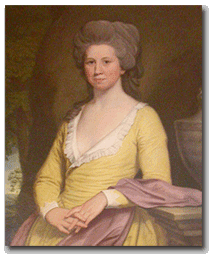
|
| Elizabeth Powel |
If George Washington were still alive he would no doubt be a Republican, but the term Republican Court actually has nothing to do with R's and D's. It was a scheme deliberately cooked up by Washington and Madison to enlist support by the new government's important ladies for a modified version of a European royal court, to make thirteen colonies into a cohesive nation. A most remarkable thing about it was its frank imitation of the royal courts, something only the Father of His Country could pull off in former colonies which had just fought an eight-year war to be rid of the monarchy. It is one more great testimony to the faith of Americans in George Washington; but it also testifies to the power of enthusiastic women, once they agree on a project. Chief among the leaders in this court was Elizabeth Powel, along with her niece living around the corner on Spruce Street, Anne Willing Bingham. Recently, the Peale Society of the Academy of Fine Arts held a candlelight dinner in Mrs. Powel's magnificent second-floor dining room, while scholars of the history of the Republican Court told assembled notables of Philadelphia what had once been what, during the first ten years of the Republic.
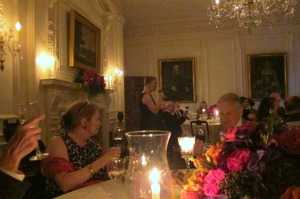
|
| Dining Room |
Members of the early Congress were largely the same men as the founding fathers of the Constitutional Convention, hand-picked by Washington and Madison to persuade the legislatures of their colonial states to give up state sovereignty, for a unified nation. There was the difference that now they brought their wives to live in Philadelphia during sessions of Congress. Those women wanted to know each other and wanted to have something exciting to do together in the largest city in the nation. Their husbands knew well how politically useful it was to be socially acquainted in this way, so everybody liked the idea of suddenly becoming nationally connected. The initial idea proved unworkable. Martha Washington was supposed to become Lady Washington, reigning over weekly receptions.

|
| In Our Cups |
But Martha, unfortunately, wasn't up to the task, and Anne Bingham whose rich husband had taken her on lengthy tours of European royal courts, moved right in and took charge of this project. Besides her cousin Elizabeth Powel, notable members of this social whirl were the two daughters of Chief Justice Benjamin Chew, Alexander Hamilton's wife, and various members of the Shippen and Willing families. Members of the family of Lord Sterling of New Jersey, Charles Carroll of Carrolton, Maryland, Cadwaladers of various sorts, and a number of other names famous from then until even today joined their affiliations with ladies from other states through parties and even some weddings. John Adams was particularly awestruck by the poise and beauty of Anne Bingham, although Abigail Adams may not have been quite so infatuated. It was a dizzy whirl, with dinner parties the central activity just as they are in Philadelphia even today. Country bumpkins had to learn how to dress, to talk and to eat with the right spoon and keep their elbows off the table; those who could tactfully show them what was what were friends for life. Centuries later, Emily Post made a fortune writing books about these rules.
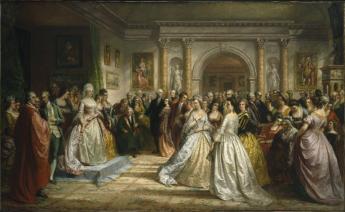
|
| Republican Court |
In those days, they even had their war cry, which was to raise a glass and shout back "Huzzah" in response to the proposer of a toast, who had raised his glass starting the warcry. It wasn't "Skol" or "Cheers" or "Here, here" if you knew what was what; it was "Huzzah". Most fashionable dinners had at least twenty courses, but the ladies didn't eat them. It was a whispered instruction among the ladies that they should eat before the dinner, so they could gracefully decline to gobble up goodies, and spend their time in gay conversation or waiting to be asked to dance. Drinking and eating, especially drinking, was for the men at the party, although naturally the many courses of the banquet were put in front of the ladies to be airily ignored. When George Washington was present as he often was, or even La Rochfoucault himself, it was important to remember every spoken word.
And, you know, it worked. When these important people went back home, they took the customs of the Republican Court with them. The American diplomatic corps found the equivalent of minor-league training for their efforts on behalf of the country abroad. Politics was easier if you personally knew your adversaries as well as your allies. The persistence of the same family names in the Social Register, the lists of The Four Hundred and other compilations of high society show that Anne Bingham and Elizabeth Powel did indeed know what they were doing, and for that matter, so did George Washington. If anyone else had been at the top of this heap, Thomas Jefferson stood ready to attack with all his might.
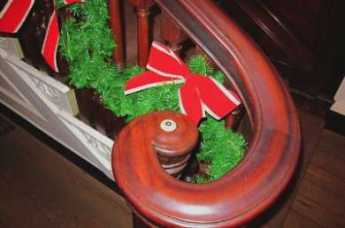
|
| Amity Button |
But he and even Patrick Henry didn't dare attack Washington. The aristocrats of Old Europe probably did sneer at this amateur effort, and in some circles still, do. But the inability of absolutely any other group of nations, whether European, Asian or South American, to unite peacefully is a thumb in the eye of anyone who mocks George Washington's little Philadelphia creation. And to think it all began right here, right here in the Powel House, right here in the dining room on the second floor. For that, folks, one thunderous "Huzzah!"
REFERENCES
| A Portrait of Elizabeth Willing Powell: 1743-1830 David W. Maxey ISBN-13: 978-0871699640 | Amazon |
Mennonites: The Pennsylvania Swiss
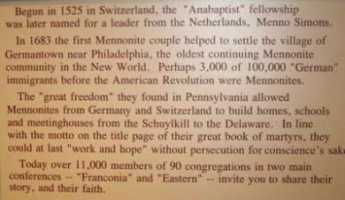
|
| On the Wall of the Mennonite Heritage Center |
Anabaptism, originally attributed to Ulrich Zwingli around 1525, centers around believing a baby is too young to understand baptism, so adults need to be re-baptized. The idea arose independently in Switzerland and Holland, and probably thousands of believers were unmercifully martyred for holding the belief. Because the worst persecutions took place during the War of Austrian Succession (1740-50), they are often attributed to the Roman Catholic Inquisition, but Magisterial Protestants, believing in the separation of church and state, were often also responsible. Many seemingly unrelated issues were introduced locally, and this period of unrest is known as the French and Indian War in America; its major battle took place in Louisburg, Nova Scotia, although George Washington's skirmish around Fort Duquesne (Pittsburgh) has acquired local fame as a major American manifestation.
The Swiss adherents moved to the Rhineland Palatinate, and from there were among the first to accept William Penn's offer of religious freedom. They were the settlers of Germantown, but have mainly moved a few miles west to southern Montgomery County, where the confusion about Pennsylvania Dutchmen is further confounded by the fact that they were Swiss. Menno the Dutchman gave his name to the order, but they themselves regard their true ethnic background as Swiss from the Zurich region. That, by the way, is not to be confused with Calvinism, which also comes from Switzerland, but by way of Geneva, not Zurich. The pacifism of the Mennonites made them mutually attractive with the English Quakers, who had made an appearance fifty or so years later in the region around Manchester, England; each group seems to have adopted some of the features of the other.

|
| Franconia Mennonite Meetinghouse |
Determined use of the German language has always held the Mennonites apart, however. From the start, it was really necessary to be somewhat bilingual in Montgomery County, using English for business conversation, and German at home and in the church. The idea of using a foreign language is based on the hope it would thus maintain a sense of distinctiveness or even remoteness from non-believers, without adopting the least hostility to them. It almost inevitably follows that the group has used its own schools, attached to their meeting houses. This sense of remoteness has persisted for almost four hundred years, surrounded by entirely different cultures. Starting only around 1960, this attitude has gradually softened, however, and it is widely assumed that in another few decades Mennonites will come to resemble the people in their environment a great deal more than they do at present. If you want to know where to find them, Harleysville is a good place to start. As the tinge of Pennsylvania Dutch accent gradually fades, and fewer of them wear the old costumes, a curious remaining hallmark of their presence can be noticed: an avoidance of foundation planting around their houses. The Mennonites themselves seem to be entirely oblivious to this unintended distinctiveness, which is however quite striking to non-Mennonite passers-by. Those who work in the fields all day have little interest in digging around their houses for decoration; those who have moved away from farming have seemingly adopted the bush-less style as a natural way of arranging things. There's no particular reason to change it, and so, there's no particular reason to notice it.
History of the Mennonites
Future Directions for Book Authoring

|
| TSR-80/100 |
Here's some advice for new authors of books: You can't write the first chapter until you have written the last chapter. That is, you have to hit the reader between the eyes in the first chapter, draw him into the argument, making a pauseless transition from a general statement of the author's thesis into a relentless march of evidence toward the conclusion. This general design comes easier with practice and is therefore much harder for beginners to accomplish. But even experienced authors are usually unable to keep the overall design of their message constantly in mind, to be able to sit down and write the book straight through from beginning to end. It's true that Sir Walter Scott was said to turn over the last page of a book, and immediately begin writing the first page of the next one without getting up from his desk. But we aren't talking about pot-boilers, we're talking about serious books. That includes almost all non-fiction and the great majority of serious fiction.
As a matter of fact, the description includes the majority of short articles as well; newspaper editorials would be a good example. Although the style of an editorial is to start with a generality, marshal a description of some recent events, and end up with a short summary, that isn't in fact how it is usually composed. The editorial writer starts with a one-liner, or call to action, organizes some recent events and some historical arguments as a reason to issue such a call, and then ends up by summarizing things in the first paragraph. Having mentally designed the editorial into such a three-step pattern, with experience a professional editorialist can sit down and write the editorial from beginning to end and, after a few touch-ups, it's ready for the printer. He really has gone through the organizational process which a book author needs to go through, but the article is short enough so that reconstruction is performed in his head. In a book, it is generally necessary to write out the chapters in a jumbled way, and later re-organize them. A new author with his first manuscript generally doesn't adequately appreciate the truth of this and has to be muscled by the editor, at least just a little bit. One of my editors summarized his job as follows: you tell every new author to take the first four chapters of his book and throw them away,
That's cruel, of course, and is seldom accepted graciously. The brusqueness is justified by understanding that the fresh new author thinks he's all finished when he isn't. He's silently telling himself he means to tell that editor, "Don't you touch a single comma of it." In the old days, authors were rare and had to be coddled. Book publishers in the Eighteenth century purchased the manuscript in its entirety, either then losing money or making a huge fortune, but leaving the author with only his manuscript price. At that time, publishers called themselves booksellers. As things evolved, booksellers often had to support a starving author while the book was being written, offering an "advance" payment to be deducted from royalties paid after final sales to readers. Author royalties were about ten percent of sales. The royalty system persists today, but advance payments are uncommon and negotiated around the tax code effects. All of these payment evolutions reflect the underlying issue: good authors used to be rare, but now are frequent. Book publishers used to be wealthy, but now are rapidly going bankrupt and extinct. Authors of excellent books have a hard time finding someone to publish them. The advent of the personal computer around 1980 is what caused this.
In 1980 I published a book, writing it on my brand-new Radio Shack TRS-80, Mod I. The editor of the publishing house had never heard of such a notion, scoffed at it, and declared he would never touch such a thing as a computer. In 2010 there were more than 800 million personal computers manufactured and sold, and by this time almost no publisher will accept a manuscript without an accompanying magnetic disc to make revisions cheap and easy, and to shift the costs of key-entry from the publisher to the author. At first, manuscripts were shipped to India for key entry. Now, it is the diskette which is mailed or e-mailed to India, and the editor is often located in India. We are soon approaching a day when the keyboard and author remain at home, sending material to gigantic server computers in China, from which the editor anywhere in the world can retrieve the material and revise it, returning the material to the server computer where the author can comment on the revisions without moving from his desk. After that stage, looms the prospect of the reader paying a fee on his credit card to access the "book" directly from the server, and reading it at home. At that point maybe the book will have been completed, and maybe it will be revised some more. In a sense, a book will never be definitely finished and allowing the public to read it will only be an episode within an unending process of revision. Newspapers, magazines, and books are all struggling to find a way to cope with this unpredictable evolution. Like most revolutions, this one doesn't have a clear idea where it is going.
So let's reflect back on the central process of authoring. In addition to the old maxims of the trade, there is the Euclidian reality that you can't write the last chapter until you somehow write a first one. The original first chapter, the one the author struggled so hard to compose, is destined to be cast off and replaced by a new first one, one that succinctly announces what is about to be said. After that must come a new second chapter, which takes the reader from the initial disconcerting summary back to the origins of the problem now about to be clarified. Followed by a third chapter, probably one shifted forward from the assorted chapters of evidence back into prominence as the key piece of evidence which leads to other confirmatory pieces of evidence; after that marches the parade of confirmatory evidence, ending with one zinger of a conclusion.
Voltaire or some other cynic would probably comment that what has here been outlined is merely an elaborated process of what editorial writers do: start with the conclusion and find slanted facts to fit it. Some may indeed do that. But there is some hope that the inevitable impact of technology on authorship can bring us to a system where many authors will assemble the facts, and only then derive a conclusion from them. If politicians would only adopt that system, maybe we could hope for a perfect world.
Labyrinth, Episcopalian Version

|
| Reverend Diana Carroll |
The Reverend Diana Carroll, Assistant Rector of Holy Trinity Church on Rittenhouse Square, recently addressed the Right Angle Club about the labyrinth to be found there. The fact is, it is there because she put it there, where it is open to the public on Saturday afternoon a month. There are half a dozen other labyrinths in Philadelphia Churches, mostly forgotten, so this is a revival of a custom rather than the invention of one. St. Asaph's on City Line Avenue, St. Stephen's at 10th and Market and a few others have them, most neglected and forgotten. Reverend Carroll admits to importing the tradition to Holy Trinity, persuading everybody in charge to nurture it, and setting aside one Saturday afternoon for the public to visit each month. Labyrinths differ in their design; this one copies the design within Chartres Cathedral in France. In England, labyrinths are much more popular and have other designs.

|
| Labyrinth |
Contrary to popular belief, a labyrinth only has one entrance, which is also its only exit. The visitor goes in, goes round and round and comes to a dead end, and then goes back out the same way. There's no great problem about getting lost; the confusing puzzles of ancient lore are not labyrinths, they are mazes. Whether with walls or simply lines on the floor, labyrinths are designed for meditation and symbolism. It's possible to bump into other people on the way out, it's possible to be struck by the symbolism of reaching the center of things, it's possible to imagine the human condition of getting into things and then getting yourself out. Diana Carroll says the labyrinth evokes the image of feminism to her, entering or leaving the uterus. That thought might not have occurred to everyone else, but an agreement isn't central to appreciating labyrinths.
The Nazca lines, best seen from an airplane over Chile, evoked the image of labyrinths to several Right Angle members. Those lines are a couple of thousand years old, in a decidedly non-Christian environment at the time. Forty-five centuries B.C. could safely be judged to precede Christianity, so it becomes clear that this concept is discontinuous, popping up in many minds in many circumstances. Some theologians might well contend this proves that meditation labyrinths are therefore not part of any fixed religious doctrine. But others, with equal justice, might say it proves that labyrinths are part of the essential nature of contemplative man. Or as in Reverend Carroll's case, woman.
Tyler Arboretum
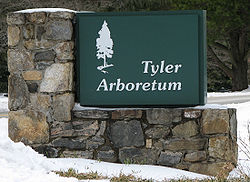
|
| Tyler Arboretum |
There are over thirty arboreta in the Philadelphia region, and one of the oldest and largest is located in Delaware County. The 650 acres of the Tyler Arboretum, adjoining 2500 acres of a state park, create a rather amazing wooded area quite close to heavily settled urban Philadelphia. The Arboretum is located on land directly deeded by William Penn, but it was privately held until 1940 and so is not as well known as several other arboreta of the region. The early Quakers, it may be recalled, often disapproved of music and "artwork", so their diversions tended to concentrate on various forms of natural science. The first director of the Tyler, Dr. John Wister, planted over 1500 azalea bushes as soon as he took office in the 1940s. They are now seventy or eighty years old, quite old and big enough to make an impressive display. Even flowering bushes seemed a little fancy to the original Quakers.
The interests of the earlier owners of the property were more focused on trees, especially conifers. The property contains several varieties of redwoods, including one impressive California redwood, said to be the largest east of the Mississippi. High above the ground, it splits into two main branches, the result of depredation by someone cutting the top off for a Christmas tree. So a large area near Painter Road is enclosed by a high iron fence, containing most of the conifer collection, and warding off the local white-tailed deer. Several colors of paint are to be seen high on many prominent trees, marking out several walking trails of varying levels of difficulty.
And then there are large plantings of milkweed, providing food for migrating butterflies; near a butterfly educational center. There are large wildflower patches and considerable recent flower plantings around the houses at the entrance. Because of the, well, Christmas tree problem, several houses on the property are still occupied.
The only serpentine barren in Delaware County is located on the property; we have described what that is all about in another essay. As you would imagine, there are great plant and flower auctions in the spring, conventions of butterfly and bird-watching groups at other times. The educational center is attracting large numbers of students of horticulture these days, and photographers. Flower gardens and photographers go together like Ike and Mike.
It's a great place for visitors, for members who are more involved, and for those with serious interests. With all that land to cover, some ardent walkers have enough ground to keep them regularly busy. Becoming a volunteer is a sign of serious interest, and that group is steadily growing. For a place that traces back to William Penn, it's slowly getting to be well known.
The Virginian: A Philadelphian Goes West
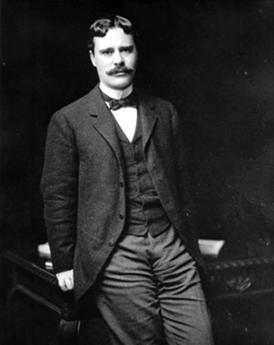
|
| Owen Wister |
Where is the Philadelphia gentleman? According to Owen Wister, that wealthy Philadelphia novelist of the late 19th century, a true gentleman is found on the frontier. He rides horses, brands cattle. He is a cowboy. Wister is credited with creating this great American archetype, now so familiar from hundreds of movies, in his novel, The Virginian: A Horseman of the Plains. Published in 1902, the novel documents the experience of a sensitive young Philadelphian traveling through the still unformed West, where he meets the American nobleman. Wister originally intended this book to be the first of a series of four charactrizations of the types of Americans. A second, about Baltimore, was published, but after that, the fame of his brilliant first novel swept his career in other directions. He seems to have originally intended to describe Virginians more than cowboys, but it's hard to know where his original intention would have carried him.
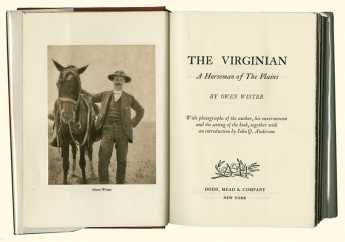
|
| The Virginian: A Horseman of the Plains |
Here is nevertheless a true classic. Using charmingly archaic language, Wister paints a landscape of sky and wild forests. His narrator speaks to the reader with the kind of verbal affection that only flourished in 19th-century literature. With an air of respect and modesty, the narrator introduces the reader to the novel's hero, the "Virginian." A transplant from the American south, this young man is a true Cowboy, a "daydream of glory made flesh" as Wallace Stegner once wrote. Early in the book, he stamps the hero with the line that made it all famous: "When you call me that, smile."
A host of colorful characters swirl around the Virginian as he aspires to social credibility and respect in the West. Western society, as understood through the Virginian's challenges and successes, is run by its own rules and social norms, norms that are heavily based on a largely male code of honor and decency. We learn about the code of the West as our Virginian learns it.
But the West is not only a myth of the American man; Molly Wood, another Easterner adrift in the wilderness, serves as a passionate, complicated love interest for the Virginian. Their relationship serves to contrast the social regulations of the East with the wilderness and abandon of the West. Wister's search for an American gentleman reminds us what it means to go West in search of something pure and new. What he found in the West has resonated throughout American culture for generations.
REFERENCES
| Philadelphia Gentlemen: The Making of a National Upper Class: E. Digby Baltzell ISBN-13: 978-0887387890 | Amazon |
Politics of Employer Hiring Preferences

|
| Interview |
To a remarkable degree, employees tend to remain in either the nonprofit or for-profit sectors of the economy for a lifetime. A prospective new employer naturally wants to know about previous work experience so it is natural enough to poke around for clues. An interviewer may just be jumping around when most questions are fired at a prospective new hire, but this one is hard to dodge.
Whether it is a reasonable position or not, almost everyone on both sides of the interview desk has the impression that for-profit employers prefer to hire people with experience in the for-profit sector, and the reverse is true for non-profits. So far, so good; experience in related fields is an attractive feature. But going considerably beyond favoring prospective employees with related experience, there is a general impression that experience in the other sector has a curse attached, reducing the chances of being hired. When an impression is this widespread, it no longer matters whether it is sensible. Make the wrong answer, and you don't get the job; that's reason enough. And it's equally true in both sectors, so the workforce segregates pretty quickly.
It's plainly true that the for-profit sector votes Republican, the non-profit sector registers, votes and talks pro-Democrat. Since young people usually vote for Democratic candidates, it seems to follow that party-switching is mainly in the direction of young Democrats becoming Republican after a few years of employment, although the reverse is seen when young residents of farm communities move to the city, with college sandwiched in-between.
Going to college may not be exactly like being employed by a college, but it's close enough. The faculty are in a similar power relationship to students as a boss is to employees, in command, but also portraying a role model and parent-figure; it is axiomatic that students emerge from college more liberal-leaning than they entered. It's beyond challenge that college faculties are the most liberal-leaning group in America; their institutional employers are all in the non-profit sector to some degree. As long as government research grants, scholarship grants, construction subsidies (and indirect overhead allowances) continue to dominate the finances of higher education, the allegiance of all colleges and universities will belong to the party so proudly representative of non-profit principles. Professor Gordon S. Wood of Brown University has propounded the theory that the 18th Century concept of a gentleman had three distinctive features: he didn't need to work, he deplored aggressive money-making, and he went to college. Americans dislike the concept of the aristocracy, but they strongly favor playing the role of a gentleman. It's as good an explanation as any.
Future trends are of course hard to predict, but since the proportion of the population going to college is steadily increasing, there is a strong force in the direction of continuing to strengthen the Democratic party. But since taxes derived from the for-profit sector are the ultimate source of all non-profit revenue, some strong push-back from present trends also seems inevitable.
Medical Generation Gap
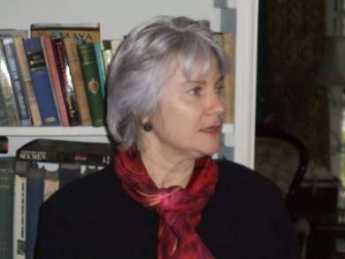
|
| Miriam Schaefer |
To understand the dynamics of the following medical anecdote, the reader should understand the thrust of Miriam's First Rule of Management. Miriam is my oldest daughter, with long experience managing many firms, large and small. Her rule is that when an employee starts misbehaving for no good reason, eliminate the position. Invariably, well almost invariably, an employee who starts acting out doesn't have enough work to do. If you are managing a large organization, you should also consider firing the supervisor of that person, on the grounds the supervisor should have noticed there was not enough work for the employee to do and was probably covering up.
My anecdote concerns a session at the 2006 annual meeting of the American College of Physicians, ostensibly devoted to the conflict between generations of doctors. It didn't take long before the meeting turned into an uproar about the new work rules which prohibit a resident physician from working more than 80 hours a week. That's supposed to protect patients against mistakes of sleepy doctors, although some suspect it is mainly an outgrowth of a gap between what they do and what they expected to do. From the time they entered high school, future doctors have been taught to expect workaholic employment conditions, and while more normal people haven't been taught that message, that's irrelevant. The situation is aggravated by the increased admission of women to the profession, who for their part have been taught to expect a breathless race between finishing their work and getting home to relieve the babysitter. Perhaps in time the newly invented specialty of "hospitalists" will get established and accepted, along with accident room work as another harrowing occupation which abruptly ends its day by the clock rather than the backlogs. At the moment the pioneers must overcome the suspicion, only partly fair, that Miriam's First Rule applies to them.
If not, that Rule clearly does apply to the youngsters who now must go home to spend quality time with their families, because they are not allowed to exceed the new work rules. At the ACP meeting, a dozen of us Civil War veterans were treated to an appalling amount of teenage mumbo jumbo apparently emanating from unsuspected warfare between Generation X and the Baby Boomers, their supervisors, mentors, and colleagues. All of us Civil War veterans held the private opinion that Baby Boomers were a little self-indulgent, but in the eyes of Gen Xers the boomers are workaholic fanatics, incapable of relaxing even for a moment in order to enjoy the life of the good, the true and the beautiful.
As we passed out of the room at the end of the session, one of the silent gentlemen with white hair came over to me. We didn't know each other, but we recognized the signs of a silently shared opinion. The old doctor leaned over to me and muttered, "They offer nothing, but they want everything." I smiled, and we parted. I guess I might have told him about Miriam's First Rule, but it would have taken too much explaining.
Morris Upended by a Nobody
THE Revolutionary War ended militarily with the Battle of Yorktown in 1781, and diplomatically with the Treaty of Paris in 1783. The careers of Washington and Franklin appeared to be complete, while the economic and financial career of Robert Morris seemed likely to stretch for decades into the future. But as matters actually turned out for these three fast friends, it was Washington who was propelled into a new political career, Franklin soon died, and Morris got himself into a career-ending mess. The financial complexity and economic power of the United States did grow massively in the next several decades, but unfortunately, Robert Morris was soon unable to exert any leadership. At the end of Washington's eight years as President, the power of the Federalists, and particularly the three men most central to it, was coming to a close. John Adams had a tempestuous single term, and then Federalism was all over.
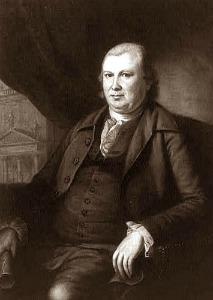
|
| Robert Morris |
The end of the Eighteenth century marked the end of The Enlightenment and the beginning of the Industrial Revolution, accompanied by many national revolutions, not just the American one. This was a major turning point for world history. The momentum of these upheavals still continues, but it is clear that the Industrial Revolution of which the Morris banking revolution was an essential part swept the world far faster than the social and political revolution, in which he also played a pivotal role. In the banking and industrial revolution, it is universally agreed that Morris was almost always right. In the social and political world, it is conversely agreed he was quite wrong. Essentially, Morris assumed that a small minority, an aristocracy of some sort, would rule any country. Within weeks of the ratification of the new Constitution, or even somewhat in anticipation of it, America made it clear that replacing an aristocracy of inheritance with an aristocracy of merit would not satisfy the need. Morris, born illegitimate and soon an orphan, was obviously in favor of promotion based on merit. John Adams defined leadership even more narrowly; he said a gentleman was a man who went to college, and he probably meant Harvard. Nobody extended the leadership class to include Indians and slaves, but the backwoodsmen of Appalachia made it clear that power and leadership at least included them. Thomas Jefferson was the visible leader of this expansion of the franchise, but changed his mind several times. James Madison switched sides; Thomas Paine switched in the opposite direction. The leaders of Shay's Rebellion and the Whiskey Rebellion lacked coherence and consistency on this point; instead of agitating for a refined goal, they mostly seemed to be running around looking for a leader. William Findlay, on the other hand, knew what he wanted. The issue might be defined as follows: it was obvious that hereditary aristocracy was too small and too inflexible to suffice, but it was also obvious that every man a king was too inclusive. An expanded leadership class was needed, but its boundaries were indistinct and contentious. But to return to Findlay, who at least had a clear idea of what he wanted.
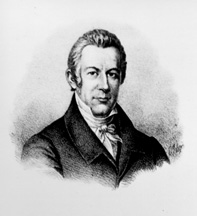
|
| William Findlay |
William Findlay was a member representing Western Pennsylvania in the State Legislature, in 1785. It would be difficult to claim any notable accomplishment in his life; he was largely uneducated. The new leadership class must, therefore, include both the uneducated and the mediocre. The Legislature at that time met in the State House, Independence Hall, in Philadelphia, where no doubt the unconventional dress and manners of backwoodsmen did not pass without audible comment. Findlay made his own political goals quite explicit; he was for paper money to facilitate land speculation which could make him rich. Wealth was a goal, but it did not confer distinction. The rights of the Indians, the rights of the descendants of William Penn, the rights of the educated class and the preservation of property were all just obstacles in the way of an ambitious man who had carefully studied the rules. Everybody's vote was as good as everybody else's, and if you shrewdly controlled a majority of them, you could do as you please. If this meat-ax approach had any rational justification, it lay in the essential selfishness of every single member of the Legislature, working as hard as he could to further his own interest. If someone controlled a majority of such votes, then the majority of the public were declaring in favor of the outcome. Those who believed in good government and the public interest were saps; the refinements of education mostly just created hypocritical liars. There was a strain of Calvinism in all this and a very large dose of Adam Smith's hidden hand of the marketplace. If you were rich, it was proof that God loved you, if you were poor, God must not think much of you, or He wouldn't have made you poor. Findlay had the votes and meant to become rich; if his opponents didn't have the votes, they could expect soon to be poor. In this particular case, the vote coming up was a motion to renew the charter of the Bank of North America. Findlay wanted it to die.
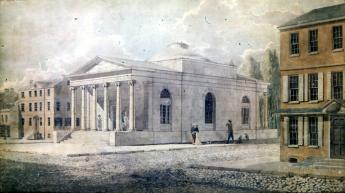
|
| America's first bank, the Bank of Pennsylvania |
It came down to a personal debate between Findlay, and Robert Morris. Morris had conceived and created America's first bank, the Bank of Pennsylvania. Today it would be called a bond fund, with Morris and a few of his friends put up their own money to act as leverage for loans to run the Revolutionary War. After a short time, it occurred to Morris that the money in a bank could be expanded by accepting interest-bearing public deposits and making small loans at a higher interest rate, which is the way most banks operate today. Accordingly, a new bank called the Bank of North America was chartered to serve this function, which greatly assisted in winning the Revolutionary War. There was no banking act or general law of corporations; each corporation had its individual charter, specifying what it could do and how it would be supervised. When the charter came up for renewal, Findlay saw his chance to kill it. Morris, of course, defended it, pointing out the great value to the nation of promoting commerce and maintaining a stable currency. The reply was immediate. Morris had his own money invested in the bank and only wanted to profit from it at the public expense. His protests about the good of commerce and the public interest in stable money were simply cloaking for this rich man's greed to make more money. Findlay made no secret of his interest in reverting to state-authorized paper money, which could then be used by the well-connected to buy vast lands in Ohio for speculation. There were enough other legislators present who could see welcome advantages, and by a small majority the charter was defeated.

|
| John Hancock |
At this point, Morris made a staggering mistake. After all, he was a simple man of no great background, largely uneducated but fortified by his ascent in society from waterfront apprentice to the highest of social positions, a friend of George Washington and Benjamin Franklin, acclaimed as a financial genius, the man who saved the Revolution, very likely the richest man in America. For many years, he had harbored not the slightest doubt of his personal genius, his absolute honesty, and total dedication to the welfare of his country. To have this reputation and accomplishment sneered at by a worthless backwoodsman, a man who would stoop to using the votes of other backwoodsmen to accomplish self-enrichment, was intolerable. Morris announced and actually did sell out his entire business interest as a merchant, at a moment when he fully understood the new nation was about to enjoy an unprecedented post-war boom. So much for his self-interest. It helps to understand that John Hancock and Henry Laurens had done the same thing in Boston and Charleston, against what we now see as a strange aristocratic tradition of prejudice against bankers and businessmen. In even the few shreds of aristocracy now surviving in Britain and Europe, the tradition persists that a true aristocrat is so independently wealthy that no self-interested temptations can attract him away from purest attention to the public good. The original source of this wealth was the King, who conferred high favor on those who served the nation well. A curious exception was made for wealth in the form of land, the only dependable store of tangible wealth, and transactions in land. Wealth was something which came from God and the King in return for public service. Land ownership was its tangible storage and transfer medium. Otherwise, grubbing around with trade and manufacture was beneath the dignity of a true gentleman.
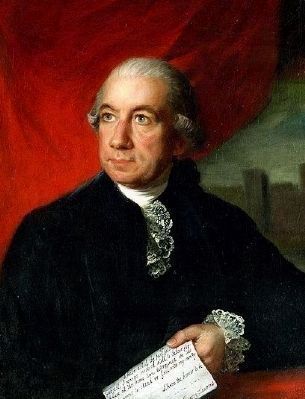
|
| Henry Laurens |
We now know what was coming. Wealth was soon to be the reward of skill and merit, recognized by fellow citizens in the marketplace, by consensus. Findlay and his friends wholly accepted this conclusion, unfortunately skipping the merit part of it for several decades. In their view, you were entitled to the money if you had the votes. As the nation gradually recognized that rewards must be durable, and once granted were yours to have and to hold, the new nation gradually came to see the need for durable ownership of property. Unless or until the owner places it out at risk in the marketplace, legislative votes may not affect its ownership. Our system ever since has rested on the three pillars of meritorious effort, assessment of value by the free market, and respect for pre-existing property. That's quite a change from the Divine Right of Kings, and therefore quite enough material to keep two political parties agitated for a couple of centuries. And quite enough change to bewilder even so brilliant a victim as Robert Morris.
Children Playing With Matches

|
| Playing with Matches |
THERE are still a lot of people secretly re-fighting the Vietnam War, which in retrospect was rebellion against the draft and allegiance to the idea that America just doesn't start wars. But times change, and those who now suppose the secret sympathizers with the anti-draft movement will automatically join a second call to rebellious duty, are probably going to be disappointed with how conservative the baby boomers have become. The boomers find themselves parents, defending their own authority from attack by their children. As King Lear ruefully observed in the same reversed situation, let them feel how sharper than a serpent's tooth it is, to have a thankless child. We now define our present world problem as overleveraging, not compulsory military service, and estimate it may take as long as fifteen years to sort itself out -- until yet another judgmental generation comes over the hill behind the rebels. The aggregate debts of the European Union, using present-value calculations, are said to be three times as large as the Gross Domestic Product of Germany; now, that's really a problem. When you consider the only sure cure for excessive leverage is "growth", and that the code word of growth really means stuff wearing out, getting used up, and getting obsolete, it is not hard to see it taking 15 years to go away -- much more lasting than any draft dodger issue. When I go to restaurants they are crowded and expensive; people are living on their reserves, but there seem to be lots of reserves so this problem will last a long time.
But, four generations back, I can remember 1937 when there were no reserves, and plenty of homeless people actually froze to death. Plenty of people were then talking Communist who nowadays are talking McCarthyism, hoping no one notices the switch. I used to ride up and down the elevator of a hospital with Harry Gold, the thermonuclear spy no less. So what worries me about the present uproar is that it comes too soon, before very many people get really scared enough to do really stupid things, then recognize their folly.
I think it was Abbie Hoffman, not Jerry Rubin, who climbed up into the visitors' gallery of the New York Stock Exchange and threw handsful of dollar bills, salted with just a few hundred-dollar bills to bring trading to a halt. Big joke; just see who was scrambling on the floor. That's what the sixties seemed like to most of us; a big joke. But out at Kent State, some kids with crew cuts were information, under orders that at the last moment the gun barrels must come level -- and the live rounds slide home.
Statement of Accounts, March 1785
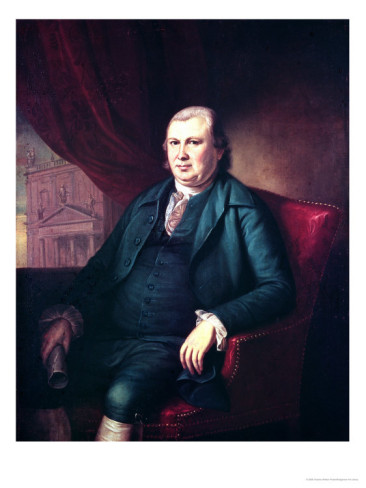
|
| Robert Morris |
AFTER resigning his position as Financier of the United States, Robert Morris worked for five months laboriously summarizing and detailing his official activities, and then he paid for printing five hundred copies of it. The document had a five thousand word preamble and over two hundred printed pages of detailed accounts, a prodigious effort. And a rather unprecedented one in an environment of traditional national secrecy about its accounts, except for the pioneering efforts of Necker in France. His reward at first was an infuriating discovery five years later that the government had not released his report to the public, and continued throughout this time to investigate Morris's earlier activities on the Secret Committee. The standard of bookkeeping for a secret committee engaged in smuggling arms before the Declaration of Independence was understandably obscure, and to have it flogged for failing to uphold the improved standards of government accounting which Morris later devised for the new nation was such a mixture of ingratitude and slyness that the behavior seemed well beyond infuriating. Nevertheless, it must have been gratifying to end the report with a positive balance of $21,000 even after eight years of struggle, war, and improvisation. The magnitude of this achievement was not lost on others in a position to see the contrast with earlier efforts, encapsulated by James Madison whose committee report concluded, "It appears to the committee that the regular official examination has already been made, and it would be inexpedient to incur the expense of a re-examination."
Madison by this time was evolving into a political opponent of Morris, but Samuel Osgood was a declared opponent of his approach to government accounts. Osgood's assessment of his opposition to the approach was prefaced with a ringing statement of its effectiveness: "I will tell you very freely, that in mere money transactions, he has saved the United States a very large sum... I am also of the opinion that much more regularity has been introduced into the keeping of accounts than ever before existed. This is a matter in my mind of very great importance. And without the strictest attention to it, the several states ought not to trust Congress with a single farthing of their money."
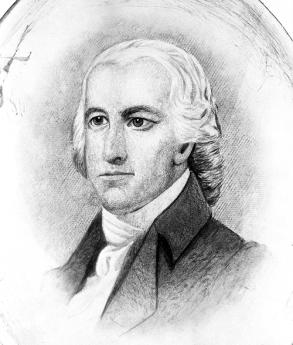
|
| Samuel Osgood |
The supreme irony of this situation was that by imposing strict accounting standards where none had previously existed, Morris was offering to his enemies a club to beat him with. Instead of recognizing that Morris was both too diligent and too rich to bother with cheating, there emerged a duel in which his enemies took unusual behavior to be a sure sign of wickedness, while Morris absolutely courted personal disaster, supremely confident he was unchallengeable.
There are two enduring truths to both positions. It is absolutely true that a well-informed public has a perfect right to do anything it pleases, regardless of the existing rules of government, regardless of the opinions of predecessors, heedless of the opinions of anyone else, past present or future. If a republic has supplanted a monarchy, the republic in a sense has the same divine rights. It's just unwise to act that way in anything but extreme circumstances.
On the other hand, it is also absolutely true that stability, peace, and prosperity are most likely enhanced by avoiding the mistakes of the past, following the accepted rules of conduct, and avoiding the counsel of loud and unstable leaders. Once in a while, a genius does appear and his discoveries should be adapted for future use as rules. Once in a while, a treasured maxim needs to be discarded. In a limited way, these evolutions of the rules of the road are an application of Galileo's invention of the scientific method, applied to the Common Law by Sir Francis Bacon. Make a likely conjecture, then verify it. And the second source of societal wisdom is the constant pressure of Society's Hidden Hand, as described by Adam Smith. The American Revolution was not so much an overthrow of a boisterous king, as it was incompletely successful incorporation of existing principles into a Constitutional system of government.
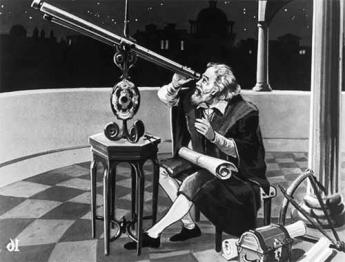
|
| Galileo's invention |
Considering the convulsive upheaval caused by its principles, the 18th Century colonists must be forgiven for misjudging their situation when confronted with a genius like Robert Morris. In barely a moment of time, Morris assembled these ideas into a vastly improved system of government management, immediately proved that it made the country rich, and demonstrated that he had the common sense to make himself rich using the same ideas. Even the idea usually attributed to his friend George Washington, that honesty is the best policy, sounds more like Morris than Washington, and certainly more like Morris than Alexander Hamilton. Only the likes of John Adams protested that honesty came from God. Morris did not deny that was possible, but acted as though it was irrelevant.
Pay attention to the voice of consensus, be quick and alert to occasional innovation, and don't waste your time being crooked. With these three rules, Morris got rich and made his country rich, enraging those who do not think riches should be a universal goal. Don't want to be a millionaire? Plenty of other people will take your place.
Our two-party system began in Appalachia, and one poor soul found himself marooned there. Hugh Henry Brackenridge, a representative of Western Pennsylvania, cried out, "If they would let Mr. Morris alone, he would make Pennsylvania a great people. But they will not suffer him to do it!" Brackenridge was never elected again.
REFERENCES
| Robert Morris: Financier of the American Revolution: Robert Morris: Charles Rappleye: ISBN-10: 1416570926 | Amazon |
State in Schuylkill Fishing Club
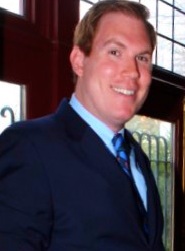
|
| Richard Romm |
Richard Romm, a rising historical scholar with a special interest in early Philadelphia, recently educated the Right Angle Club in the history of the Schuylkill Fishing Club in the State in Schuylkill, and was immediately accepted into membership. Of the Right Angle, that is, which is an old club by some standards, but scarcely a hundred years old in the eyes of the really old, old clubs.
The State in Schuylkill is an eating club, originally a fishing and eating club, apparently organized around the annual shad run up the river. The clubhouse, or Castle, was moved several times, in response to damming of the river, and is now located on the grounds of, or adjoining the edge of, Nicholas Biddle's estate on the Delaware River called Andalusia. One by one, the Atlantic Ocean rivers of America have been dammed and their annual shad migrations brought to an end, except through the city of Richmond, Va, so there was little point in moving The Castle to follow the fish. It remains, overlooking Delaware in spite of its name.
There seems to have been several name changes, the most important of which was to change the Colony of Schuylkill to the State of Schuylkill for obvious reasons. Originally, the Castle was roughly opposite the falls of Fairmount on the West Bank of the Schuylkill at about Girard Avenue; thus, from 1732 to 1822 located on Baron Warner's property called Eaglesfield. In 1822 it moved to Rambo's Rock (the Rambo family is said to be the oldest European settler family in Pennsylvania) opposite Bartram's Gardens, then finally in 1887 to Andalusia, Nicholas Biddle's country estate. The club was founded in 1732, and dates of movings are possibly hazy, possibly somewhat because of the reluctance of club officers to return the calls of inquiring historians. The State in Schuylkill claims to be the oldest organized men's club in the world, an honor contested by White's in London. The roots of this argument are found tangled in the vital issue of whether their age should be based on the formal organization of the clubs, or on the establishment of the coffee houses which housed the original clubs. Four books are said to have been written about club history, but we depend here on Mr. Romm.
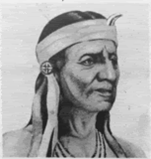
|
| Chief Tammenend |
There is also an unclear relationship with Chief Tammenend, possibly traceable to the shad run, but in any event to the Indian chief depicted with William Penn in the paintings by Benjamin West and Edward Hicks. May 1 is St. Tammany's day, growing into the fancy that he was the "Patron Saint of America", before a branch of the nation-wide Tammany association opened in New York and sort of tarnished up the name. Other traditions of the Fishing club have to do with wearing Mandarin hats, possibly having to do with the export of ginseng which was once abundant in our colonial suburbs, with a return cargo of Chinese dishware. All of the cooking is done by official citizens of the club. The quantities of food are remarkable; one 19th Century menu listed eleven pounds of meat per member. The club drink is a punch, the famous Fishhouse Punch, widely recognized to be rather strong. Its inventor is reputed to be Edward Shippen Willing, on the occasion of the first visit to the clubhouse by women guests. The quantity of alcoholic beverage at these events is especially remarkable in view of the Quaker origins of many original members of the club, but not necessarily of the guests. Among the various guests were Generals Grant, Meade, and McClellan. Dinner begins with two traditional toasts: to George Washington, and to Captain Sam Morris. Washington was appropriate enough, having a history of drinking a bottle of Madeira every day at lunch. But Sam? Captain Sam the Quaker?
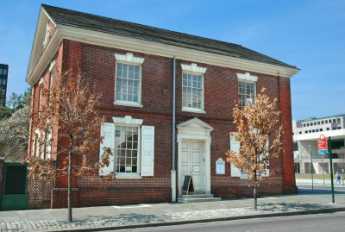
|
| Free Quaker Meetinghouse, Fifth and Arch Streets |
Somewhere in this tradition are allusions to the Free Quakers, Quakers who abandoned the peace testimony to fight the British. There is also the tradition of hostility to British rule which antedates the Revolution and may have some connection to the fanciful contention that their little state was not really part of Penn's colony. Captain (of the City Troop) Sam was a stalwart, possibly the sole founder, of the Gloucester (N.J.) Fox-hunting club. The history is passed down that 22 of the original 26 members of the First City Troop were members of the fox-hunting club, and many if not most were Quakers. The first "Governor" of the State in Schuylkill was Thomas Stretch, but the second Governor, from 1766 until his death, was Captain Sam. He was repeatedly referred to as the life of the club and held in the highest esteem by all. He was "read out" of the main Quaker Meeting, not so much for his drinking as for his flouting of Quaker belief in pacifism. He reputedly led a saber charge at the Battle of Trenton and was a leader of the City Troop in that revolution within a revolution at James Wilson's house, which rescued at least four future signers of the Constitution from a mob of militia which momentarily turned Jacobin.
Naturally, descendants of Quakers on both side of this uproar have been reluctant to say much about it. But somewhere within the history of Samuel Morris must be some important clues about the 18th Century splits within the Quaker Church, to say nothing of the revolt of the three Quaker colonies against British rule.
Conowingo

|
| Conowingo Dam |
IT was once a major hazard of travel between Philadelphia and Virginia, to cross the Susquehanna River along the way. The river is wide at the top of Chesapeake Bay, and the cliffs are high on both sides. Consequently, the cute little towns of Port Deposit and Havre de Grace grew up as places to stay in inns overnight, perhaps to throw a line into the water and catch your breakfast. Today, these little towns can be seen to have millions of dollars worth of cabin cruisers and sailboats at anchor, at least during certain seasons of the year. In 1928 the Conowingo Dam was built about ten miles north of the mouth of the river in order to harness the water power, and the Philadelphia Electric Company put a power station there as part of the dam, to generate electricity for Philadelphia. It doesn't seem so long ago, but it gave a mighty boost to the electrification of Philadelphia and its industries at the end of its industrial decline from 1900 to 1929. Unfortunately, competitive forms of power generation have now reduced the dam's output of electric power to periodic bursts during the day, and Philadelphia no longer enjoys a reliable cheap water-powered electricity advantage. Coal and nuclear came along, and now shale gas looks like the coming future.

|
| Bald Eagle Fishing |
Although water power could be claimed to be not merely cheap but environmentally friendly, the unvarnished fact is fish get caught in the turbines and rather chewed up by being sucked from the tranquil lake on the upside, emerging at the bottom as a diced fresh fish salad. That attracts seagulls and other fish lovers to the base of the dam. Some fish escape the meat grinder and merely are stunned by the experience, floating downstream to be attractive to eagles, turkey vultures, hawks, and owls. The consequence is that many thousands of gulls sit on the downside of the dam, while hundreds of turkey vultures and eagles sit on the higher levels of the power generation apparatus. And hundreds of bird-watching nature lovers stand on the southern shore below the dam, poised with many thousands of dollars worth of camera equipment and binoculars. If you don't have a pair of binoculars, your visit there will certainly be substandard. Lots of fishermen are there, too, but depending on the waves of spawning fish at different seasons of the year; shad is particularly favored. You can now begin to see the prosperity of Port Deposit and Havre de Grace has a wider variety of attractiveness than merely sailboating and crabbing. There is, however, a large and ominous yellow warning sign.
The sign says you are standing on a riverbank where the water can suddenly rise without warning; if the red lights start blinking and the warning siren starts honking, immediately gather up your tripods and head for higher land. It looks pretty peaceful, however, and the people with tripods are mostly chatting happily with their friends. It can be pointed out, however, that about two hundred bald eagles are perched on the superstructures roundabout. Cameras are mostly digital these days, attached to the rear of a telescopic lens three feet long, and when they shoot bursts of exposures they sound like a machine gun. So, the bird photographers follow a swooping eagle eagerly, shooting away and hoping to catch the bird in an attractive pose, throwing away the rest of the pictures. Good shots are called "keepers", which the photographer is happy to show onlookers on the rear view screen of the camera/machine gun. More sedate bird watchers carry binoculars made in Germany or Switzerland, which cost thousands of dollars and produce really spectacular images. It's unclear whether all this expenditure is worth it, but there is little doubt in the bird lovers' minds you are wasting significant parts of the trip without some kind of binocular.
Suddenly, ye gods, the lights start to flash and the siren starts to honk loudly. Not knowing exactly what to expect, first-time visitors head for the hills. The old-timers with a Gatling gun on a tripod are much more casual, picking up their apparatus and scuttling several feet up the river bank. The birds seem to know what the signals mean, scramble into the air, or start to arrive from far perches. The electric company seems to have received a notice that more electric power generation is needed, so the gates at the bottom of the dam are lifted and water gushes forth; the water does indeed rise rather rapidly. The birds divide themselves into two groups: the gulls' circle in a thick spiral at the base of the dam, while the eagles and vultures circle independently in a second spiral, several hundred yards below the dam. One group looks for fish salad, and the other group prefers stunned whole fish. Photographers however much prefer the eagles downstream, circling and then swooping to the water's surface to grab a wiggling fish and running off with it. Some of the bigger bullies prefer to let others do the fishing, simply swooping to steal the fish. Ratta-tap-ratty tap goes the digitals. After twenty minutes it is all over, and the birds seem to realize it before the water stops gushing into geysers. The river recedes, birds go back to their perches, and quiet again rules the land.
On the way home, you notice something you perhaps should have known. Interstate 95 takes people speeding down the turnpike, just out of sight of the dam. You get there quicker, but don't see the sights. Coming back from the bird watching parking area which the electric company provides, you are more or less compelled to recognize that U.S. highway Number One goes right across the top of the dam, up to the hill and over the charming rolling countryside. Back to Philadelphia.
Ruminations About the Children's Education Fund (3)
The Right Angle Club runs a weekly lottery, giving the profits to the Children's Educational Fund. The CEF awards scholarships by lottery to poor kids in the City schools. That's quite counter-intuitive because ordinarily most scholarships are given to the best students among the financially needy. Or to the neediest among the top applicants. Either way, the best students are selected; this one does it by lottery among poor kids. The director of the project visits the Right Angle Club every year or so, to tell us how things are working out. This is what we learned, this year.
The usual system of giving scholarships to the best students has been criticized as social Darwinism, skimming off the cream of the crop and forcing the teachers of the rest to confront a selected group of problem children. According to this theory, good schools get better results because they start with brighter kids. Carried to the extreme, this view of things leads to maintaining that the kids who can get into Harvard, are exactly the ones who don't need Harvard in the first place. Indeed, several recent teen-age billionaires in the computer software industry, who voluntarily dropped out of Harvard seem to illustrate this contention. Since Benjamin Franklin never went past the second grade in school perhaps he, too, somehow illustrates the uselessness of education for gifted children. Bright kids don't need good schools or some such conclusion. Since dumb ones can't make any use of good schools, perhaps we just need cheaper ones. Or some such convoluted reasoning, leading to preposterous conclusions. Giving scholarships by lottery, therefore, ought to contribute something to educational discussions and this, our favorite lottery, has been around long enough for tentative conclusions.

|
Just what improving schools means in practical terms, does not yet emerge from the experience. Some could say we ought to fire the worst teachers, others could say we ought to raise salary levels to attract better ones. Most people would agree there is some level of mixture between good students and bad ones. At that point, the culture mix becomes harmful rather than overall helpful; whether just one obstreperous bully is enough to disrupt a whole class or something like 25% of well-disciplined ones would be enough to restore order in the classroom, has not been quantitatively tested. What seems indisputable is that the kids and their parents do accurately recognize something desirable to be present in certain schools but not others; their choice is wiser than the non-choice imposed by assigning students to neighborhood schools. Maybe it's better teachers, but that has not been proved.

|
It seems a pity not to learn everything we can from a large, random experiment such as this. No doubt every charity has a struggle just with its main mission, without adding new tasks not originally contemplated. However, it would seem inevitable for the data to show differences in success among types of schools, and among types of students. Combining these two varieties in large enough quantity, ought to show that certain types of schools bring out superior results in certain types of students. Providing the families of students with specific information then ought to result in still greater improvement in the selection of schools by the students. No doubt the student gossip channels already take some informal advantage of such observations. Providing school administrations with such information also ought to provoke conscious improvements in the schools, leading to a virtuous circle. Done clumsily, revised standards for teachers could lead to strikes by the teacher unions. Significant progress cannot be made without the cooperation of the schools, and encouragement of public opinion. After all, one thing we really learned is that offering a wider choice of schools to student applicants leads to better outcomes. What we have yet to learn, is how far you can go with this idea. But for heaven's sake, let's hurry and find out.
Mexican Immigration and NAFTA

|
| George H.W. Bush |
The North American Free Trade Agreement (NAFTA) was signed on December 17, 1992, by President George H. W. Bush for the United States, Prime Minister Brian Mulroney for Canada, and President Carlos Salinas for Mexico. It was intended to eliminate tariffs from the North American continent, with long-run benefits for the three nations who made the agreement. Essentially, it was President Bush's idea, growing out of the long period of public service in which he prepared himself for the Presidency in most of the major components of the American government. After his election, he immediately started to implement the many ideas he had formulated, characteristically worked out in considerable detail, and assigned to government officials he had worked with and knew he could trust. The twin results were that he advanced sophisticated ideas much more quickly than is customary, but then experienced backlash from a public which was accustomed to understanding programs before they assented to them. NAFTA was a prime example of both the advantages and disadvantages of an expedited approach.
Tariffs are a tangled ancient political dispute between nations; George Bush got his two neighbors to sweep them away in a remarkably short time for diplomacy. However, plenty of people benefit from the pork barrel, the unfairness and the economic drag of tariffs, so Bush even got ahead of that opposition, essentially presenting it with a done deal. However, he failed to be re-elected because his fellow Texan Ross Perot campaigned as a third party candidate, thundering about a "giant sucking sound" which was predicted as American businesses would flood into Mexico. Whatever Bill Clinton may think, he won the election as a result of the third-party divisiveness of Ross Perot. And Clinton furthermore got to take credit for NAFTA largely because he claimed the credit. Poppy Bush followed Reagan's strategy of winning by letting others take the credit.

|
| NAFTA |
NAFTA had a lot of minor provisions, but the main feature was to help Mexico with manufactures, compensating for America hurting Mexican agriculture with cheaper United States agricultural imports. The usual suspects howled about the unfairness of such a dastardly deed, but they lost. Helping Mexican manufactures took the tangible form of the "maquiladoras", which were assembly plants from the United States re-located just south of the border, assembling parts made abroad into machinery and other final products, for sale in the United States. The general idea behind this was that Mexican immigration was mostly driven by a hunger for better jobs; give them jobs in Mexico, and they would stay home. That's a whole lot better than an endless border war. Even today, it would be hard to find anyone who would contend that fences, searchlights and police dogs were a superior way to control the borders.
For a while, the maquiladoras were a huge success. But then, China got into the act, paying wages so low that even Mexicans could not live on them. No doubt Ross Perot rejoices that the maquiladoras promptly collapsed, leaving abandoned hulks of factories just across the dried-up Rio Grande. And eventually, we even have tunnels bored under the border and more illegal Mexicans in America than we have people in prison who might take the same jobs. Not the least of the consequences came from the other parts of the same country. Mexico traded an injured agricultural economy for the promise of high-paid manufacturing jobs in maquiladoras. So, masses of impoverished Mexican farmers were made available for illegal immigration, up North.
It is now anybody's guess whether Chinese wages will rise enough, soon enough, to reverse the economics of their destruction of the Mexican economy. The election of a union-dominated Clinton/Obama presidency in the meantime does not bode well for actions which would reverse that result, which now would threaten American-Chinese relations of an entirely different sort. It is true that Chinese wages are relentlessly rising, and that transportation costs now favor assembly-factories closer to the American consumer. But maybe the moment for this approach is passing, or possibly has passed.
REFERENCES
| George H. W. Bush: The American Presidents Series: The 41st President, 1989-1993: Timothy Naftali, ISBN-10: 0805069666 | Amazon |
Adoption

|
| Peter Conn |
Peter Conn, a member of the Franklin Inn of Philadelphia, is recently retired from the University of Pennsylvania. Since he has adoption in his family, he became curious about the matter, found that almost nothing has been written about the history of this topic, and decided to write a book about it himself. At a recent monthly meeting of the club, he described his findings, which are pretty surprising.
In a vague sort of way, everyone's general readings do confirm his findings that adoption was frequent among the American Indians, and also among the ancient Romans. In early 6th century Europe, however, it seems to have died out, only to return as a common experience in the 16th century. The first American law that Dr. Conn could find establishing the rules and legal conditions of adoption was passed in Massachusetts in the 19th century, at roughly the time American states were passing laws forbidding abortion. Whether there is a connection between the two movements or not is speculative. However, it does seem pretty likely that our current perceptions about adoption are surprisingly recent, reflecting a strong likelihood that Roman and Indian traditions have nothing to do with it, but fairly recent history might well have a lot to do with it.
Just a little reflection about all the stories we read, alluding to orphanages, foundlings, wards, primogeniture, romantic love, choices of marriage partners, and the like, quickly confirm a realization that conditions and attitudes about reproduction must have changed a very great deal, and fairly recently. It was not very long ago that children were apparently so numerous they could be treated as expendable. Considering how dangerous childbirth has been until recently, current attitudes about "valuable babies" , motherhood, and even the role of women in society must be evolving quickly without our realizing it, and in directions so recent they may well require further revision. Just whose views are old fashioned and whose views reflect modern insights are both judgments we probably should classify as tentative for at least a few more decades.
For example, the dates of major changes in attitudes about foundlings inevitably generate reflections about the attitudes of the Catholic Church. That ancient organization probably has enough troubles with bedroom issues, without adding this one. But the coincidence of the dates with the rise of the Church in Europe, and the subsequent rise of Protestantism, inevitably generate questions about Church attitudes as the cause, or possibly some sociological changes in society which transform both church and reproductive attitudes at the same time. What were the roles of the Crusades, and the Arab invasion of Europe, or the Ottoman invasion? Or the black plague and the white plague, or the Industrial Revolution? We have to know more about these cataclysmic events in order to have even a small idea of whether they might have influenced each other.
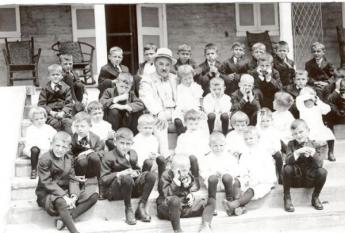
|
| Milton Hershey founded the Hershey Industrial School |
It makes a lot of difference whether a culture needs agrarian workers or not, to understand why "the best interests of the child" should only recently have been established as a legal basis for oversight of contested adoptions. Or why inheritance by adoptive children has only been such a recent phenomenon, endorsed by law. What happened to cause the abandonment of all the orphanages we used to have? Why have we chosen to split the issue between adoption and foster care, and treat the two so different? Where do the Girard College and the Hershey School fit into this transition? Why do the Russians feel they are injuring America by forbidding American adoption of Russian orphans?
And get this: during the 19th century in America, when there was a surplus of women on the East Coast resulting from a massive migration of males to the West, about 250,000 American orphans were packed on various trains and sent West. We are told they stopped at a station and let the local settlers select a few, and then the train continued going West, letting off more and more adoptees until they were all gone. Transcontinental railroads were only built after the Civil War, so this sort of child disposal was not more than a century before the political battles of Roe v Wade. We have a lot to learn, and probably a lot to be humble about. So let's not bury the truth under a mountain of political correctness, but let's not have any witch-hunts, either.
REFERENCES
| Adoption: A Brief Social and Cultural History: Peter Conn: ISBN:ISBN-13: 978-1137332202 | Amazon |
Gas House, the Real Thing
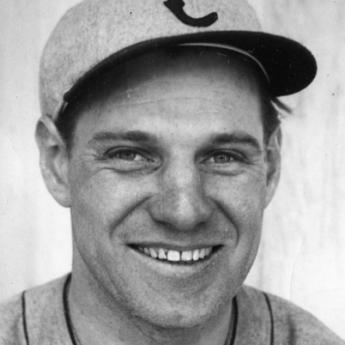
|
| Lou Durocher |
Gas House Gang is what Leo Durocher called the St. Louis Cardinals because of their scruffy appearance. One suspects he was really bragging about his once playing for the New York Yankees, a distinctly upscale background, in his view.
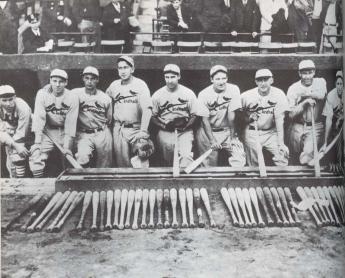
|
| Gas House Gang |
But there really once were gas houses, and a somewhat used one still exists on the Foerderer estate, Glen Ford, open to the public (on request) in the tiny village of Torresdale. We have this information from Meg Sharp Walton, the director of the Glen Foerd Museum. Waltons have lived in the area since 1675, about a decade before William Penn arrived, so they ought to know about these things. According to her, the gas house supplied gas for the surrounding houses before the days of household electricity. Every Monday, the gas house burned something she knows not what, to produce gas.
What else would you call such a place, except a gas house?
Societies and Clubs
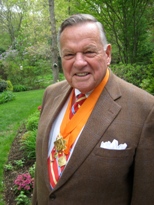
|
| President Zabriskie |
A former president of the Holland Society of America recently explained the difference between a Society and a Club. Most of us supposed there was no difference, but it seems that a Society is permitted to be discriminating in its membership, while a club is not. In this quarrelsome age, that probably makes an important difference, but you will have to get a lawyer to explain exactly what it is.

|
| The Holland Society |
As best it can be made out, a Society is permitted to be an organization with a certain composition, which would be quite illegal if done by a club. The fine points of the distinction have to do with what is in its Constitution, as distinguished from what is in its By-Laws, another distinction which would puzzle most non-lawyers. And it would appear it is helpful to state a reason for the discrimination in the Constitution as well. In the case of the Holland Society, the constitution limits membership to descendants of Dutch Americans of the male line who immigrated before 1675. And the reason for this discrimination is to preserve the family names. Women are allowed to be associate members, however. Have you got that straight, ladies?
And now, we are all left floundering for an explanation of what an Association is, and why it isn't the same as a Society or a Club.
Psychiatry: Last Cow in Philadelphia
The present problem with PSYCHIATRY can be summarized as follows: At the suggestion of the American Hospital Association, Congress introduced the DRG system of paying for inpatients by diagnosis, rather than itemized services. It worked well except for psychiatry, where the diagnosis usually implies little relation to the later costs it generates, so an exception was made. The dual system of payment created loopholes which unfortunately overpaid psychiatric hospitals and were described as exploitation. Congress over-reacted in a way that was unsustainable, and essentially all of the psychiatric hospitals of the nation were forced to close. This is not a history for anyone to be proud of, and the lack of outcry is also a disappointment. However, after twenty years without reform, evidently, nothing is going to be done without an outcry.CONVENE BLUE RIBBON COMMISSION TO REPAIR PSYCHIATRIC INPATIENT CARE. The 1983 BRA switched hospital inpatient reimbursement to payment by diagnosis (DRG). Abuse of the psychiatric exclusion then led to "corrective" legislation which has essentially reduced American's psychiatric inpatient care to an underfunded national disappointment. The problem is not an easy one, so a commission should devise a workable methodology for psychiatric hospitals, relying neither on present approaches nor on DRG. But overpayment is a better outcome than no care at all. Homeless people sleeping in cardboard boxes on downtown steam grates are the consequence any visitor to the area can observe at night after the commuters go home. Psychiatric social workers readily recognize their daytime patients in the boxes.
* * * * *
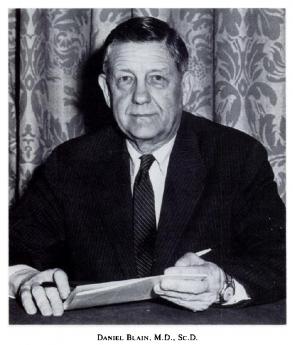
|
| Daniel Blain, M.D. |
Daniel Blain, M.D. (1898-1981) was just about the most important psychiatrist in America. He was the Physician in Chief of the Institute of the Pennsylvania Hospital at 49th and Market, the first and in many ways the most prestigious psychiatric hospital before it was closed. Before that, he was the first Medical Director of the American Psychiatric Association, itself the first (1844) medical society in America. His fame rested on organizing the disorganized psychiatry of the Veteran's Administration into a chain of advanced "Dean's Hospitals", a huge and very important achievement. Before that, he had achieved considerable fame as the man who took the dilapidated State Psychiatric Hospitals with a reputation as "snake pits" and made them a respectable part of the medical community. And before that, he had been born in China as the son of missionaries. As a matter of fact, even before that, he was a descendant of General Mercer of Revolutionary War fame.
Dan was an outstanding example of the peculiar fact that Psychiatry was dominated by social upper crust psychiatrists in Philadelphia for a very long time. In fact, Benjamin Rush of the 8th Street branch of the Pennsylvania Hospital is known in some circles as the "Father of Psychiatry", while in other circles he is known for signing the Declaration of Independence. That isn't true in other cities, and it definitely isn't true in New York City, where the psychoanalytic school of Sigmund Freud took that city by storm, and essentially drove every other school of psychiatric thought out of town, out of medical schools, out of psychiatric hospitals. The famous sixteen-year psychoanalysis of Woody Allen is an example of the extremes of that fad. Every profession has petty civil wars of that sort, best left undiscussed in public. But in the case of psychiatry, it was indirectly a material contributor to the present disappearance of inpatient psychiatry, and the related appearance of lots of homeless people on steam grates. Let me give a biased view of what is a massive human tragedy, which someone else can "rectify" if he chooses.
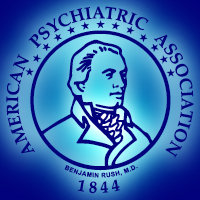
|
| APA |
It starts with a Budget Reconciliation Act of the 1980s, which brought us the DRG (Diagnosis-related) system of paying for hospitalized patients. The idea was that appendicitis resulted in essentially 7 days in the hospital, give or take a couple of days, and the bills for admission for appendectomy were for more or less the same amount. If you had fifty or a hundred cases a year in your hospital, the high bills balanced the low bills, and the overall hospital reimbursement was essentially the same without itemizing the bandages and whatnot. Congress bought this package, and after it got going, just about all hospital bills were reimbursed at one of three hundred prices, the cost to the government was the same, and there was a whole lot less bookkeeping and accounting cost. It was a success, except for a few cases where the costs did not closely line up with the diagnosis, and psychiatric hospitals were where they concentrated. So, psychiatric hospitals were excluded, and psychiatric bills skyrocketed. This experience has been carelessly cited as an example of the evils of payment by service ("fee for service"), when in fact the duration of psychiatric hospitalization is related to features of the condition, like danger of suicide, rather than the diagnosis itself. Psychiatric leadership at the time contained many in a subset of physicians who did not think much of inpatient psychiatry in the first place and even less of lobbying, and they underestimated the severity of the assault on the specialty. Apparently, no workable formula for pricing inpatient psychiatry has since been brought forward to be approved by a Congress which is more accustomed to getting its lobbying in the form of one-liners. And would you believe it, psychiatric inpatient care soon disappeared.
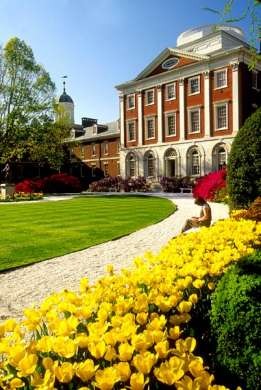
|
| Pennsylvania Hospital |
That's right, if someone in your family needs psychiatric hospitalization, I wouldn't know where to tell them to get it -- at any price. From considerably overpaying for psychiatry inpatients to paying scarcely anything for them, this little change of the regulations caused every psychiatric hospital I know of by name, to close. It helped balance some state budgets, but it also was a considerable factor in filling the steam grates of American cities with people who sleep on cardboard boxes. And what it illustrates is that this is what political society always seemed to do, before Dan Blain and a small group of upper-crust psychiatrists were temporarily able to shame them into something better. In fact, if there is any tattered remnant of good inpatient psychiatric care left in America today, it is in the Veterans Hospitals that Dan was able to straighten out.
Dan Blain will probably eventually be bypassed as a curiosity, like his wife. She was a Wister Logan Blain, descended from families who ruled Philadelphia a hundred years before even General Mercer came along. So the Blain couple lived on an enormous farm plot, centered at 20th and Olney right next to LaSalle University, which is built on their property. It also contains the Peale House, where Charles Willson Peale lived as the elected president of the rebel faction of the American Revolution. Peale didn't know what he was supposed to do, so he resigned and painted portraits of people. The Blains enjoyed keeping a cow on their land, the last cow in Philadelphia, and the LaSalle students enjoyed stealing the cow and leaving it on the top floor of a dormitory, for laughs. Meanwhile, the Blain couple had cocktail parties on their front porch for visiting dignitaries. They usually wore blue jeans, and Mrs. Blain, the absolute Queen of Philadelphia society, was occasionally observed to pour vodka into her glass of beer. That sort of background may well have been useful when psychiatry needed to be built up and humanized, but it became a liability when the rest of inpatient psychiatry failed to appreciate what was knocking on its door.
William James and the Progressive Movement
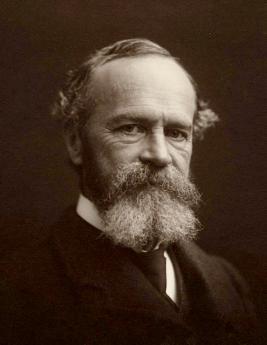
|
| William James |
Howard Callaway, noted historian, recently held forth at a meeting of the Franklin Inn Club about the Progressive Movement of the early 20th Century. His interesting point was that perhaps William James really started it all. The James brothers, William and Henry, were very rich and spent nearly twenty years in Europe. Their ideas may not have originated in Europe, but they certainly had a European tinge to them. Perhaps it is fair to surmise that the Progressives grew out of reaction to the Gilded Age, around 1870, which Howard feels was the last great episode of globalization before the present one.
In spite of the very European origins of Queen Victoria and her family, the British aristocracy has always feared and distrusted Europe. When Britain discovered it couldn't conquer Europe (or America), it turned its attention to developing a great commercial empire by colonizing Africa and East Asia. That led to building a Navy and establishing naval refueling stations at strategic places around the globe. Meanwhile, the Spanish empire was deteriorating, and colonization took on the form of competition between England, France, and Germany for the remnants of the Spanish empire. For background music, the Dreyfus episode led to or was prompted to lead to, an anti-military attitude that had considerable world-wide effect, essentially none of the above. In time, the none of above military attitude fused with Progressivism of the environmental sort which viewed industrialization as the enemy.
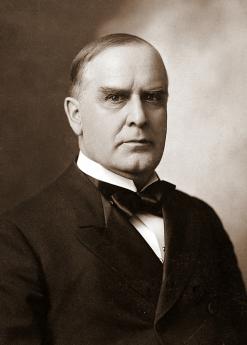
|
| William McKinley |
In a sense, American attitudes were influenced by William McKinley, who managed to convince labor they would be better off by advancing the cause of their bosses. Part of the reaction to this was the Populism of William Jennings Bryan and Robert LaFollette. McKinley's assassination and the promotion of Teddy Roosevelt was an unexpected turning point in American politics. Meanwhile, Admiral Dewey's fleet was stationed in Hong Kong. This association between America and Great Britain, along with secret German attempts to intervene in unobtrusive ways during the Spanish-American War were important factors in the later alliance between Britain and America in World War I. The burgeoning alliance between labor and management which McKinley was well along toward making the dominant force in American politics, was thus precipitously switched toward Progressivism by McKinley's assassination, which revealed he had made the one major blunder of selecting Teddy Roosevelt as his vice president, who in turn made the same blunder in reverse by selecting William Howard Taft as his own successor. The splitting of the Republican party between Roosevelt and Taft made possible the election of Woodrow Wilson, the college professor.
It thus can be concluded that the repeated switching between Conservatism and Progressivism during the Presidencies of McKinley through Wilson was the main source of the present rearranged coalitions we call the Republican and Democratic parties. It only remained for Franklin Roosevelt to complete the process by fitting the South, Catholics, and Jews into the Democratic Alliance, and Richard Nixon to undo it partially with switching the South and the Catholics back into the Republican party. The demography of the parties has changed more than the ideology, which tends more toward a coalition of business and Southerners versus blue-stocking progressives linked with labor union populists. Underlying all of this is the general acknowledgment of the need for a two-party system. Instead of having five or six small parties, the ultimate choice is whether a dissatisfied sub party is disaffected enough to switch parties. The nation is geographically so large and the subgroups so scattered that almost everyone except recent immigrants instinctively respects the two-party imperative.
What Other House?
Before the First World War, it was common for prosperous families to have two houses, like migrating birds. There was the big house in center city and a second place to go in the summer to get away from typhoid and malaria. In the early days before municipal water departments, sources of clean water for home use and sewage disposal often dictated the location of such annual migrations. In time, a wider variety of destinations appeared. Summer arrangements might be a summer cottage on a lake or a mansion in Bar Harbor. Friendly local Indians and good land for fresh vegetables or milk cows made an attraction. Usually, there was some sort of recreational attraction, perhaps a summer hotel where the family went every summer, located along a railroad for easy commuting. Along the East Coast, it was common to own a beach house along the Jersey shore, and for fashionable people, it was common to have a summer place along the Main Line. Germantown was the first summer colony, started by the Allen family and soon followed by the Chews at Cliveden, who also had a house on Third Street next door to George Washington, and to Powell, the Mayor of the city. There were Germans in Germantown, of course, but they were not in the same circle, any more than the "permanent residents" of the New Jersey barrier islands mix in with the "summer folk", today. If you look at the big houses along Spruce and Pine Streets, you will see little neighboring houses in the next-door alleys. Sometimes these little houses had three rooms on three floors and were called "Father, Son, and Holy Ghost" houses. Sometimes these houses were for servants, sometimes for local tradesmen.
The implication was that if you had two houses, you must be rich. That's sort of true, but lots of families in Philadelphia had lived in the region for many generations, and had accumulated lots of real estate for the various cousins of a shrinking family. In a sense, a greater portion of Philadelphia savings was locked into this real estate, than in other cities. And there were quicks. One of the traditions of the Philadelphia political machine was to have a dinky little house in some working-class district, but a very large and opulent place at the shore, perhaps in Longport, N.J. It probably isn't necessary to describe the reasons for this.
It later turned out that the geographical size of the city was to make a significant difference. In a small village, there is little difference between the town and the countryside, but after a while, significant differences in taxes appear, particularly when our system of government begins to encourage federal, state and local taxes to become the legal or traditional province of a particular level of government. The tendency was for taxes to focus on government services from which people would be reluctant to flee. If people lived in the city for the schools, school taxes were applied to real estate. The federal system of dependence on income taxes, on the other hand, reflected an indifference to where you happened to live. This started a cat and mouse game among municipalities, states and counties, which unfortunately contributed to the direction of tax flight, when there appeared to be a reason to flee.
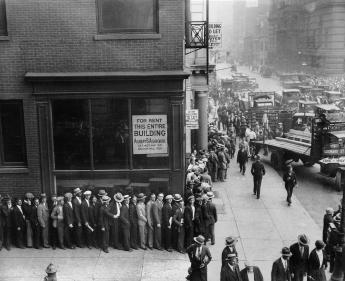
|
| Depression of the 1930s |
During the Depression of the 1930s, that new threat appeared. Maintaining two houses soon seemed a needless extravagance, and it made sense to sell one of them. At that point, a choice had to be made, and the advent of the automobile made it entirely practical to live in the suburbs and commute to the city. A small town found it made little difference, but a medium-sized city gave the suburbs an attractiveness. In the case of Philadelphia, the city-county consolidation widened the geographical reach of city taxes, before taxes and land values reached the inviting cliff where they abruptly fell to rural levels. By that time, clean water and friendly Indians were less important than taxes and upkeep. Some people had very bad luck in the Market, sold the big house, and moved into the little house behind it. More often than not, the big, house was converted into apartments or just plain torn down, or else it fell into shabbiness and the whole neighborhood deteriorated. After twenty years, everything got so bad in Society Hill, that you could buy any one of the mansions for $1500. It was a spiral, of course, and although you could buy a house for $1500, and resell it twenty years later for a million, during the intervening twenty years it was worth your life to go out on the street at night. Or so it seemed until Richardson Dilworth built a brand-new mansion on 6th Street, and Society Hill started its revival. So, with this little bit of real estate history, you ought to be able to summon up the tolerance to smile, when a senior partner of a law firm at a party tells you, "Philadelphia declined because everybody had two houses, and sold one of them." Not exactly everybody, but mostly everybody in the leadership did.
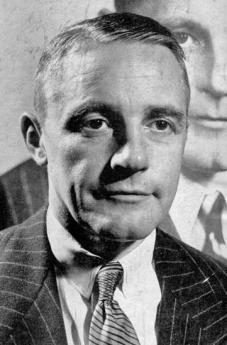
|
| Richardson Dilworth |
In fact, that was seemingly true for everybody, because the cohesiveness of Philadelphia culture led the followers to follow. But there was the next stage, after that. Bargain hunters found their bargains, word spread among immigrants from the South, and mansions turned into slums. To some extent, this migration was balanced by a white migration to the South, seeking cheap land and fleeing expensive union labor. Before long, air conditioning made this a natural, bearable counter-migration. In colonial days, just about everybody had a summer house for mainly health reasons, but now there was a new force causing people to relocate entirely in the suburbs. The tax cliff created by the city-county consolidation artificially raised city land values in anticipation of expanding settlement. It suddenly became cheaper to relocate or rebuild an entire facility just over the city/county line, in accordance with newer concepts of one-story buildings instead of three-story factories near a waterfall. And then a new way of life grew up around this necessity, with only the leaders returning to the city for banking, clubs, and opera "during the season". Invisibly, sanitation and air conditioning had removed the economic reason behind the former social structure, but permanent Philadelphia residents continued its customs while the Gilded Age was invisibly making it all a little silly. But hit it with depression, ruin the industrial base supporting it, and then watch it disintegrate. Housing patterns didn't cause the problem, but new ones certainly made it hard to recover the good old ways, once they disappeared.
The Eventual Economy of Excellence
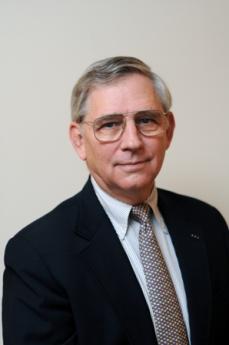
|
| Samuel Y. Harris |
The Right Angle Club was recently visited by two sprightly young ladies who run a historical building reconstruction firm. Sam Harris once ran the firm and built it into the pre-eminent example of its type, with the quirk that he surrounded himself with women. So, after Sam's unfortunate early death, two of the ladies decided to carry on the business. It was a little hard to picture these two young ladies in blue jeans, climbing all over the rafters of old buildings, but they showed plenty of slides of their work, which in the background showed the ladies doing just that.
Historical old St. Peter's Church at 2nd and Pine called the ladies in to consult on why the beautiful old church built in 1764 would develop a dip in its roof, and were soon told that a rafter had rotted underneath the dip. Further investigations showed that all of the rafters were rotted at the point where they joined the top of the walls and had to be replaced or reinforced. It eventually developed that a two-million dollar campaign had to be undertaken to finance the restoration. The details of the problem were the rafters had been made of gumwood, which is now unobtainable, and substitute wood of the same quality had to be identified, located, and transported. The original builder named Smith had also built Carpenter's Hall, so he knew what he was doing; it was just hard to find the same materials. The original construction might have lasted another couple hundred years, except there was a time when the upscale Society Hill neighborhood had largely been abandoned to fruit and vegetable distribution, and the congregation dwindled. To save money, the attic had been insulated to save heating costs. It did that, all right, but unfortunately, it caused moisture to form, and rot to ensue. Bob Linck, a roofing contractor who was sitting near me, commented that it just went to prove an old adage. Eventually, the economy of excellence would emerge and demonstrate its value. If reduced cost is what you want, just build things right, and leave them alone.
Appealing the Constitution to a Higher Authority
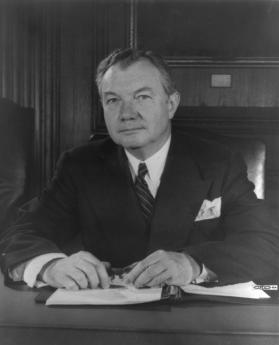
|
| Justice Robert H. Jackson |
According to Justice Robert H. Jackson, "We" (The Supreme Court) "are not final because we are infallible, we are infallible because we are final." Scoop Jackson was the last Justice who never went to college or graduated from Law School, so his viewpoint concentrated on the practical outcome of a situation. In fact, the father of our constitution, James Madison, was learned in the history of many constitutions, and was well aware of allusions to divinity in the construction of our governing document, particularly when the sources of strong beliefs couldn't be grounded in evidence. However,the Age of Enlightenment was highly religious, so they gave credit to divine guidance when they really were imitating the Legal profession.The lawyer's system of progressive appeal to a hgher court of appeals was a very clever adaptation of recognition that most problems are pretty simple andcan be handled without much training.The Constitution is an attempt to reconcile our culture to the needs of government and the revelations of controversy. Composed by Enlightenment rationalists within a highly religious environment, the Founding Fathers were careful to use the metaphors of Religion, even though many were personally skeptics about the substance. Indeed, the Penman of the Constitution who ultimately wrote most of the words was Gouverneur Morris, a flagrant libertine. It had been the tradition of Constitutions to describe their culture by allusion to epic poems, drawing inferences about Right and Wrong from what had subsequently happened to ancient heroes after similar situations unfolded. Some would put the plays of Shakspere in that role in 1787, but the evidence is stronger for Roman writers, like Cato and Cicero. In my own view, this leap of faith was only divine in the sense it was a one-way street. A citizen might try to emulate the ancients, but appealing back to them was not likely to work.
Although the Constitution can be viewed as bridging a gap between Culture and Common Law, or perhaps as placing a guardhouse between them, this relationship is not spelled out and therefore, in theory, might be changed. Other cultures, perhaps the native Indian, or the Catholic Church of Central Europe, might be substituted, or other legal structures resembling the Napoleonic Code might serve on the opposite side of the bridge. These substitutions were a legal possibility, but there is little doubt the American leadership intended for an Anglo-Saxon culture, linked with Francis Bacon's legal system, to prevail under a distinctively American flag. Because of our debt to France for then-recent assistance, there was once the possibility of French coloration to our culture, but the excesses of the French Revolution soon ruled that out. Some modern observers have capsulized the scene: First, we got the British to help throw out the French in 1754; and then in 1776, we got the French to help us throw the British out. Both our allies thought we played their game, but we were playing our own. The new Constitution specified no laws, but with little doubt the Framers intended the states to adopt British Common Law without the infelicity of saying so.
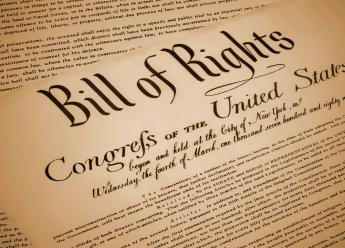
|
| Bill of Rights |
And then there is the Bill of Rights. Madison had great faith in the ability of structure (separation of powers, term limits, etc.) to command predictable outcomes, and initially resisted any need for a Bill of Rights. But the Ratification Conventions in the states showed him the need to yield. The First Congress soon enough confronted over a hundred proposed rights in petitions from the states, especially the four big ones. If anyone else had been in Madison's position, our Bill of Rights would resemble the European one today, fifty pages long and growing. That outcome would have greatly weakened the Legislative branch since after protests about Mother Nature subside, the legal fact emerges that Rights are merely laws which no majority can overturn. They might even be characterized as a contrivance for transient majorities to promote the permanence of their viewpoint.

|
| The Founding Fathers |
But they are not the only contrivance in politics. Enshrinement of the Founding Fathers elevated their political positions into near divinity, whereas debunking the Founders personally undermines their symbolism as statues and myths. There was too much of this during the romance period of the Nineteenth century, but also in von Ranke's later marginalization of History into mere scholarship and footnotes, which was a reaction to it. The Founding Fathers themselves now supplant Achilles and Cincinnatus in our lexicon, and we have little choice but to accord more weight to their original intent in the Constitution, than to contemporary reasonings. Indeed, we are forced to acknowledge more similarity between George Washington's fictitious cherry tree than to his relations with Peggy Fairfax, when we interpret his thundering "Honesty is the best policy" in the second inaugural address. It is admittedly a difficult choice, but Justices now need to consider what his audience widely believed was his original intent, more than what later archeological discoveries uncover. Justice Scalia is correct in placing more weight on the original intent of the Founding Fathers than contemporary reactions to the same words. But in occasional conflicts between myth and reality, it seems safer to consider what the audience then widely believed, than what modern audiences would guess at.
"Sir"
In 1938 when I was 14 years old, I entered a new virtual country with its own virtual language. That is, I went to an all-male boarding school during the deepest part of the worst depression the country ever had.

|
| Boarding School |
identified While it should be noted I had a scholarship, there is little doubt I was anxious to learn and emulate the customs of the world I had entered. My life-long characteristic of rebellion was born here, but at first, it evoked a futile attempt to imitate. Not to challenge, but to adopt what I could afford to adopt. The afford part was a real one because the advance instructions for new boys announced a jacket and tie were required at all meals and classes, and a dark blue suit with a white shirt for Sunday chapel. That's exactly what I arrived with, and let me tell you my green suit and brown tie were pretty well worn out by the first Christmas when I came home on the train for ten days vacation, the first opportunity to demand new clothes. First-year students were identified by requiring a black cap outdoors, and never, ever, walking on the grass. The penalty for not obeying the "rhine" rules was to carry a brick around, and if discovered without a brick, to carry two bricks. But that's not what I am centered on, right now. The thing which really bothered me was unwritten, equally peer-pressured by my fellow students, the custom of addressing all my teachers as Sir. The other rules only applied until the first Christmas vacation, but the unwritten Sir rule proved to be life-long.
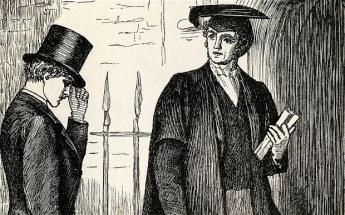
|
| Sir |
And it was complicated. It was Sir, as an introduction to a question, not SIR!, as a sign of disagreement. You were to use this as an introduction to a request for teaching, not as any sort of rebuke or resistance. Present-day students will be interested to know that every one of my teachers was a man; my recollection is, except for the Headmaster's secretary, the Nurse was the only other female employee. The average class size was seven. Seven boys and a master. Each session of classes was preceded by an hour of homework, the assignment for which was posted outside a classroom containing a large oval maple table. Needless to say, the masters all wore a jacket and tie, most of the finest style and workmanship. They always knew your name, and always called on every student for answers, every day. Masters relaxed a little bit during the two daily hours of required exercise, when they took off their ties and became the coaches, but were just as formal the following day in class. I had been at the head of the class of what Time Magazine called the finest public high school in America, but I nearly flunked out of the first semester in this boarding school. It was much tougher at this private school than I felt any school had a right to be, but they really meant it. Over and over, the Headmaster in the pulpit intoned, "Of those to whom much is given, much is expected."
I had some new-boy fumbles. Arriving a day early, I found myself with only a giant and a dwarf for a company at the dining table. I assumed the giant was a teacher, but he was a star on the varsity football team. And I assumed the dwarf was a student, but he was assistant housemaster. One was to become a buddy, the other a disciplinarian, but I had them reversed, calling the student "Sir", but the master by his first name. Bad mistake, which I have been reminded of, at numerous reunions since then.

|
| Yale |
When I later got to Yale, I began to see the rules behind the "Sir," rule. In the first place, all of the boarding school graduates used it, and none of the public school graduates, although many of the public school alumni began, falteringly, to imitate it. Without realizing it, a three-year habit had turned out to be a way of announcing a boarding school education. The effect on the professors was interesting; they rather liked it, so it was reinforced. It had another significance, that the graduates who said "Sir" acquired upper-class practices, the red-brick fellows seldom did. The only time I can remember it's being scorned was eight years later, by a Viennese medical professor with a thick accent, and he was obviously puzzled by the significance. Hereditary aristocracy, perhaps. Indeed, I remember clearly the first time I was addressed as Sir. I was an unpaid hospital intern, but the medical students of one of the hospital's two medical schools flattered me with the term. In retrospect, I can see it was a way of announcing that graduates of their medical school knew what it meant, while the other medical school was just red-brick. Although the latter had mostly graduated from red-brick colleges, their medical school aspired to be Ivy League.
If you traveled in Ivy League circles, the Sir convention was pretty universal until 1965, when going to school tieless reached almost all college faculties, thus extending permission to students to imitate them. Perhaps this had to do with co-education, since the sir tradition was never very strong in women's colleges, and denounced by the girls when the men's colleges went co-ed. Perhaps it had to do with the SAT test replacing school background as the major selection factor for admission. Perhaps it was the influx of central European students, children of European graduates for whom an anti-aristocratic posture was traditional, and until they came to America, largely futile. Perhaps it was economic. The American balance of trade had been positive for many decades before 1965; afterward, the balance of trade has been steadily negative.
In Shakespeare's day, "Sirrah" was a slur about persons of inferior status. In Boswell's eighteenth Century day, his Life of Johnson immortalized his characteristic put-down with a one-liner. It survives today as a virtually text-book description of how to dominate an argument at a boardroom dispute. "Why, Sir," was and remains a signal that you, you ninny, are about to be defeated with a quip. It's a curious revival of a new way of immortalizing small-group domination, and a very effective one at that, which even the soft-spoken Quakers use effectively. Whatever, whatever.
The 90-plus years of tradition of addressing your professor as "Sir," is gone, probably for good, except among those for whom it is a deeply ingrained habit. Along with the tradition of female high school teachers, followed I suppose by male college professors.
Uncorking the Past
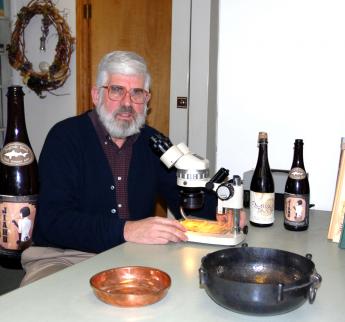
|
| Patrick E. McGovern PhD |
The Right Angle Club was recently visited by Patrick E. McGovern, PhD. Scientific Director, Biomolecular Archaeology Project, Adjunct Professor, Anthropology, University of Pennsylvania Museum of Anthropology and Anthropology. Author,"The Quest for Wine, Beer, and Other Alcoholic Beverages; "Rediscovering ancient fermented beverages throughout the world."
Professor McGovern calculates that alcohol has been used as an intoxicating beverage for over 2700 years. Because our species began in Africa, that's the place you first find evidence of booze. As a matter of fact, the Milky Way is just filled with loose alcohol, with millions of gallons floating around its center, so alcohol has probably been around for eons longer than we know. Alcohol is just a step of fermentation away from sugar, so it has probably been bubbling around almost as long as life.
The association of yeast fermentation with cell life has fascinated at least one other Penn Professor (Doug Wallace), who feels mitochondria are pieces of plants which have somehow got incorporated into animal cells, and probably account for the limited carbohydrate metabolism in animal forms, concentrating an unusually large proportion of cancer transformations in the process. If so, it's a mixture of good and evil, like so much of life.

|
| Alcohol Fermentation |
So if it's so easy to transform carbohydrate into alcohol, it figures, the dominant beverage will be fermentation of the local dominant carbohydrate. For the most part that's rice in the Orient (beer), fruit in central Asia (wine), and a tribe's favorite beverage tends to endure as long as they stay in the same region, eating the same food. I was tempted to ask about the beer-wine divide along the Rhine River but decided not to veer too far from archaeology or chemistry. The spread of potato-generated vodka seemed abstraction enough for the lunch-time entertainment of gentlemen who do lunch together, ride the train together, and occasionally venture into off-color jokes and games of chance.
We did sample Dr. McGovern's own private stock, a mixture of wine, beer, and mead. Quite tasty.
| Posted by: Robyn Young | Dec 27, 2012 2:13 PM |
54 Blogs
Robert Barclay Justifies Quaker Meetings
 Robert Barclay, one of the handfuls of English philosophers of enduring note, came close to establishing the doctrines of the Quaker Church, a religion with no formal doctrine.
Robert Barclay, one of the handfuls of English philosophers of enduring note, came close to establishing the doctrines of the Quaker Church, a religion with no formal doctrine.
Plays and Players, Haddonfield Version
 This year the Haddonfield Plays and Players celebrate their 75th anniversary, with an outstanding production of Anything Goes, by Cole Porter Y'13.
This year the Haddonfield Plays and Players celebrate their 75th anniversary, with an outstanding production of Anything Goes, by Cole Porter Y'13.
Molly Maguires of Pennsylvania (1)
 The main features of the Molly Maguires of Pennsylvania can be found in the Molly Maguires of Ireland, and perhaps far earlier than that.
The main features of the Molly Maguires of Pennsylvania can be found in the Molly Maguires of Ireland, and perhaps far earlier than that.
Molly Maguires of Pennsylvania (2)
 Almost everything the Molly Maguires said about their ruthless enemy the mine owner was accurate. Unfortunately, much of what he said about them was also accurate. And both sides said things that were pure fabrications.
Almost everything the Molly Maguires said about their ruthless enemy the mine owner was accurate. Unfortunately, much of what he said about them was also accurate. And both sides said things that were pure fabrications.
Tour of Duty in 'Nam
 >Veterans of the Vietnam conflict are famously reluctant to talk about their experiences. It's hard to know what that means, and whether it's a good thing or a bad thing.
>Veterans of the Vietnam conflict are famously reluctant to talk about their experiences. It's hard to know what that means, and whether it's a good thing or a bad thing.
Country Auction Modernized
 On Fairgrounds Road, in the Quaker farmlands of Bucks County, efficiency and computerized streamlining are nibbling at the enduring customs of country auctions.
On Fairgrounds Road, in the Quaker farmlands of Bucks County, efficiency and computerized streamlining are nibbling at the enduring customs of country auctions.
Time To Care
 A physician who practiced for sixty years, before and after Medicare, has a lot of stories to tell about how Medicine has changed and been changed.
A physician who practiced for sixty years, before and after Medicare, has a lot of stories to tell about how Medicine has changed and been changed.
Blood and Honor: The Philadelphia Mafia, Lately
 From 1980 to 2000, mob rub-outs and long prison terms for mobsters seemed a constant occurrence in Philadelphia. In the 21st century the underworld went quiet.
From 1980 to 2000, mob rub-outs and long prison terms for mobsters seemed a constant occurrence in Philadelphia. In the 21st century the underworld went quiet.
Tales of the Troop
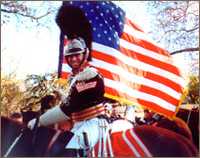 Dennis Boylan is collecting stories from the archives of Philadelphia's First City Troop. Someday, it should result in a great book.
Dennis Boylan is collecting stories from the archives of Philadelphia's First City Troop. Someday, it should result in a great book.
Children's Scholarship Fund (1)
 The Right Angle Club has decided to make donations to the Children's Scholarship Fund of Philadelphia..
The Right Angle Club has decided to make donations to the Children's Scholarship Fund of Philadelphia..
Christmas Reflections
 It once was a tradition to go back to the big city for Christmas shopping..
It once was a tradition to go back to the big city for Christmas shopping..
Puritan Boston & Quaker Philadelphia
 The University of Pennsylvania Sociology professor E. Digby Baltzell drew attention to the strong persistence of earlier elite influences, using Philadelphia's Quakers and Boston's Puritans as prime examples.
The University of Pennsylvania Sociology professor E. Digby Baltzell drew attention to the strong persistence of earlier elite influences, using Philadelphia's Quakers and Boston's Puritans as prime examples.
The Republican Court
 An aristocratic court may seem a peculiar place to unite a republic, but the female-dominated social circle of 1790-1800 nevertheless united a new nation. Its definition of who is socially prominent still persists, in SR -- the Social Register.
An aristocratic court may seem a peculiar place to unite a republic, but the female-dominated social circle of 1790-1800 nevertheless united a new nation. Its definition of who is socially prominent still persists, in SR -- the Social Register.
TOAST TO E. DIGBY BALTZELL (1915-1996)
 A toast to E. Digby Baltzell (1915-1996), given by Theodore Friend, Sr. at the Franklin Inn Club annual dinner on Franklin's birthday, where toasts are customary.
A toast to E. Digby Baltzell (1915-1996), given by Theodore Friend, Sr. at the Franklin Inn Club annual dinner on Franklin's birthday, where toasts are customary.
Paying for College I
 A service economy needs more education past high school. Soaring college tuition costs imply a supply shortage, and hence we need more colleges.
But cheaper ones.
A service economy needs more education past high school. Soaring college tuition costs imply a supply shortage, and hence we need more colleges.
But cheaper ones.
What's Different About Kosher ?
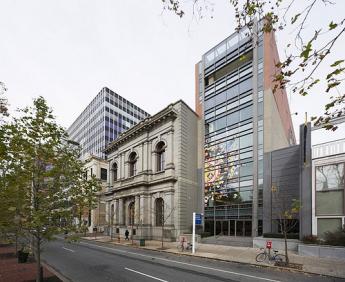 A recent conference at the Chemical Heritage Foundation examined the perplexing question of just what is signified by Kosher designation of food. Most of the curious audience were themselves Jewish.
A recent conference at the Chemical Heritage Foundation examined the perplexing question of just what is signified by Kosher designation of food. Most of the curious audience were themselves Jewish.
Pets For all Seasons
 Penn's Veterinary School has established a department for the study of pets and pet loving.
Penn's Veterinary School has established a department for the study of pets and pet loving.
Willow Grove Park

Wood Turning
 Tucked underneath the Ben Franklin Bridge, a non-profit museum displays the work of turners, artists mostly working in their garages, a most endearing place to visit when you are near the Constitution Center in Philadelphia. A little hard to get there on one-way streets.
Tucked underneath the Ben Franklin Bridge, a non-profit museum displays the work of turners, artists mostly working in their garages, a most endearing place to visit when you are near the Constitution Center in Philadelphia. A little hard to get there on one-way streets.
Original Intent and the Miranda Decision
 Right before our eyes, we can watch the Miranda decision migrate away from the original intent.
Right before our eyes, we can watch the Miranda decision migrate away from the original intent.
Atlantic City, Brigantine and the N.I.H.
 Great scientists in crowds look and act pretty much like everyone else.
Great scientists in crowds look and act pretty much like everyone else.
New Roles For Grandparents
 The present generation of grandparents is inventing new rules.
The present generation of grandparents is inventing new rules.
Frank Furness (2) Rittenhouse Square
 There were plenty of rich folks in Philadelphia before the Civil War. But it took the industrial revolution to make possible what we call the Victorian urban mansions.
There were plenty of rich folks in Philadelphia before the Civil War. But it took the industrial revolution to make possible what we call the Victorian urban mansions.
Gum
 Perhaps we should refer to bubble gum as Santa Ana's revenge.
Perhaps we should refer to bubble gum as Santa Ana's revenge.
Serpentine Rock From Serpentine Barrens
 Nice green serpentine stone was a popular building material until its disadvantages were recognized.
Nice green serpentine stone was a popular building material until its disadvantages were recognized.
Chester County, Pennsylvania
 When you say Chester County, you are probably talking about horses. There's much more to say.
When you say Chester County, you are probably talking about horses. There's much more to say.
Cataracts and Deference to Seniors
 Cataract extraction is now the commonest surgical operation in America. It doesn't receive the deference it deserves.
Cataract extraction is now the commonest surgical operation in America. It doesn't receive the deference it deserves.
Insomnia
 Between 6 and 10% of the population describes itself as suffering from chronic insomnia.
Between 6 and 10% of the population describes itself as suffering from chronic insomnia.
Powel House, Huzzah!
 On 3rd Street in Philadelphia's Society Hill, stands the finest surviving Georgian House of what Washington and Madison called the Republican Court. A great many traditions of American high society were formed in the second-floor dining room of this house.
On 3rd Street in Philadelphia's Society Hill, stands the finest surviving Georgian House of what Washington and Madison called the Republican Court. A great many traditions of American high society were formed in the second-floor dining room of this house.
Mennonites: The Pennsylvania Swiss
 Mennonite Pennsylvania Dutchmen actually came here from Switzerland. The book of their religious martyrs is more than a foot thick since they practice non-resistance, a belief significantly more pacifist than non-violence. Nevertheless, they prosper abundantly in Montgomery County.
Mennonite Pennsylvania Dutchmen actually came here from Switzerland. The book of their religious martyrs is more than a foot thick since they practice non-resistance, a belief significantly more pacifist than non-violence. Nevertheless, they prosper abundantly in Montgomery County.
History of the Mennonites
Although an occasional member is irked by the world's neglect of his church and speaks out in annoyance, the Mennonites, in general, prefer to do good, unnoticed.
Future Directions for Book Authoring
 Personal computers have already revolutionized book authorship by greatly expanding it, and revolutionized book publishing by drowning it in authorship. What comes next?
Personal computers have already revolutionized book authorship by greatly expanding it, and revolutionized book publishing by drowning it in authorship. What comes next?
Labyrinth, Episcopalian Version
 There's thirty-foot labyrinth in the Holy Trinity Church on Rittenhouse Square. The tradition of meditation walks reached a peak in the 12th and 13th Centuries, but examples can be found dating back to 4500 B.C.
There's thirty-foot labyrinth in the Holy Trinity Church on Rittenhouse Square. The tradition of meditation walks reached a peak in the 12th and 13th Centuries, but examples can be found dating back to 4500 B.C.
Tyler Arboretum
 A 650-acre Arboretum next to a 2500-acre state park makes for a lot of nature walks and bird watching, as well as a gazillion azaleas and tree specimens. The only serpentine barren in Delaware County is located there.
A 650-acre Arboretum next to a 2500-acre state park makes for a lot of nature walks and bird watching, as well as a gazillion azaleas and tree specimens. The only serpentine barren in Delaware County is located there.
The Virginian: A Philadelphian Goes West
 Owen Wister, that unchallenged example of the Philadelphia Gentleman, established his literary reputation as creator of the American Cowboy in his first novel.
Owen Wister, that unchallenged example of the Philadelphia Gentleman, established his literary reputation as creator of the American Cowboy in his first novel.
Politics of Employer Hiring Preferences
 The for-profit or nonprofit nature of your previous employer affects your chances of being hired by a new boss.
The for-profit or nonprofit nature of your previous employer affects your chances of being hired by a new boss.
Medical Generation Gap

Morris Upended by a Nobody
 Adjusting to winning the Revolutionary War was almost as painful as losing it would have been. Especially for Robert Morris.
Adjusting to winning the Revolutionary War was almost as painful as losing it would have been. Especially for Robert Morris.
Children Playing With Matches

Statement of Accounts, March 1785
 At the conclusion of Robert Morris' term of office as Financier, he did an unusual thing by submitting a complete accounting of his term. As things turned out, it was a good thing he did so.
At the conclusion of Robert Morris' term of office as Financier, he did an unusual thing by submitting a complete accounting of his term. As things turned out, it was a good thing he did so.
State in Schuylkill Fishing Club
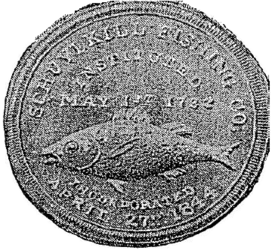 Unless you listen to some quibbles from White's in London, the Schuylkill Fishing Club of the State in Schuylkill is the oldest organized men's club in the world. And even if that exception is admitted, it's the oldest men's club in America. It's no secret, but it's very private.
Unless you listen to some quibbles from White's in London, the Schuylkill Fishing Club of the State in Schuylkill is the oldest organized men's club in the world. And even if that exception is admitted, it's the oldest men's club in America. It's no secret, but it's very private.
Conowingo
 After ancient disputes between William Penn and Lord Baltimore, the mouth of the Susquehanna into the Chesapeake Bay is located in Maryland. However, the Philadelphia Electric Company got its power from the Conowingo Dam, and Philadelphia bird watchers by the hundreds go there to watch thousands of birds, attracted by millions of fish. But when the buzzers sound and the red lights flash, run for higher ground.
After ancient disputes between William Penn and Lord Baltimore, the mouth of the Susquehanna into the Chesapeake Bay is located in Maryland. However, the Philadelphia Electric Company got its power from the Conowingo Dam, and Philadelphia bird watchers by the hundreds go there to watch thousands of birds, attracted by millions of fish. But when the buzzers sound and the red lights flash, run for higher ground.
Ruminations About the Children's Education Fund (3)
 By selecting children for scholarships by lottery, it emerges that different schools make big differences.
By selecting children for scholarships by lottery, it emerges that different schools make big differences.
Mexican Immigration and NAFTA
 NAFTA was a brilliant innovation by Poppy Bush, but it was perhaps a little too sophisticated.
NAFTA was a brilliant innovation by Poppy Bush, but it was perhaps a little too sophisticated.
Adoption
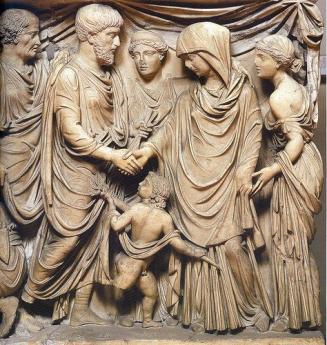 Although the Romans frequently adopted children, the practice died out in the 6th century, and only became common a thousand years later. Curiously little has been written about this matter, so speculation is probably unwise.
Although the Romans frequently adopted children, the practice died out in the 6th century, and only became common a thousand years later. Curiously little has been written about this matter, so speculation is probably unwise.
Gas House, the Real Thing
 Gas Houses have disappeared, and what remains is Leo Durocher's phrase for the St. Louis Cardinals: gashouse gang. But gas houses were a real thing, and one even survives at Glen Foerd, the Foederer estate.
Gas Houses have disappeared, and what remains is Leo Durocher's phrase for the St. Louis Cardinals: gashouse gang. But gas houses were a real thing, and one even survives at Glen Foerd, the Foederer estate.
Societies and Clubs
 Most of us recognize no difference between a Society, and a Club. But essentially, a club must not discriminate in admitting members, but a society can do so. You will have to ask a lawyer to explain that.
Most of us recognize no difference between a Society, and a Club. But essentially, a club must not discriminate in admitting members, but a society can do so. You will have to ask a lawyer to explain that.
Psychiatry: Last Cow in Philadelphia
 Daniel Blain, just about the most famous psychiatrist in America, lived at 20th and Olney, West. Not only was that the place he lived, but he also kept a cow there. And this was within living memory.
Daniel Blain, just about the most famous psychiatrist in America, lived at 20th and Olney, West. Not only was that the place he lived, but he also kept a cow there. And this was within living memory.
William James and the Progressive Movement
 Did William James start the Progressive Movement?
Did William James start the Progressive Movement?
What Other House?
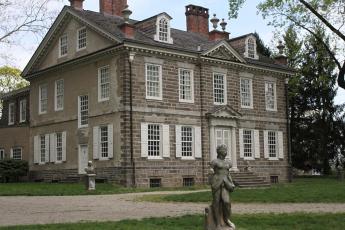 In the days before air conditioning, it was fairly common for prosperous families to go to a second home for the summer.
In the days before air conditioning, it was fairly common for prosperous families to go to a second home for the summer.
The Eventual Economy of Excellence

Appealing the Constitution to a Higher Authority
 The original intent of the Constitution has as much to do with what the audience thought they heard, as what the Founders meant they were saying. Or possibly, what Gouverneur Morris thought they were saying.
The original intent of the Constitution has as much to do with what the audience thought they heard, as what the Founders meant they were saying. Or possibly, what Gouverneur Morris thought they were saying.
Uncorking the Past
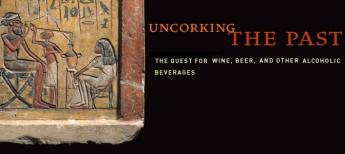 New blog 2017-02-11 03:42:11 description
New blog 2017-02-11 03:42:11 description